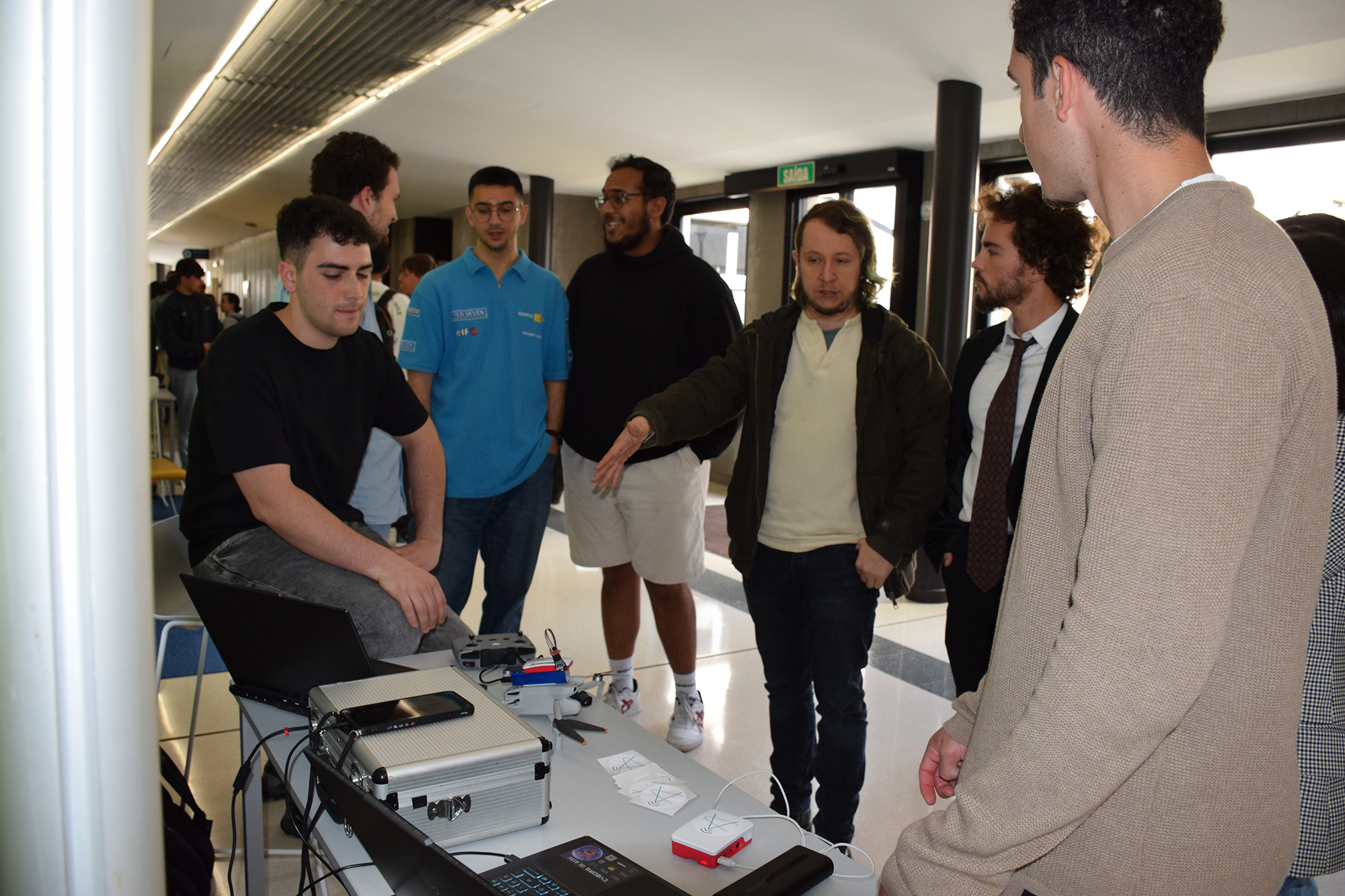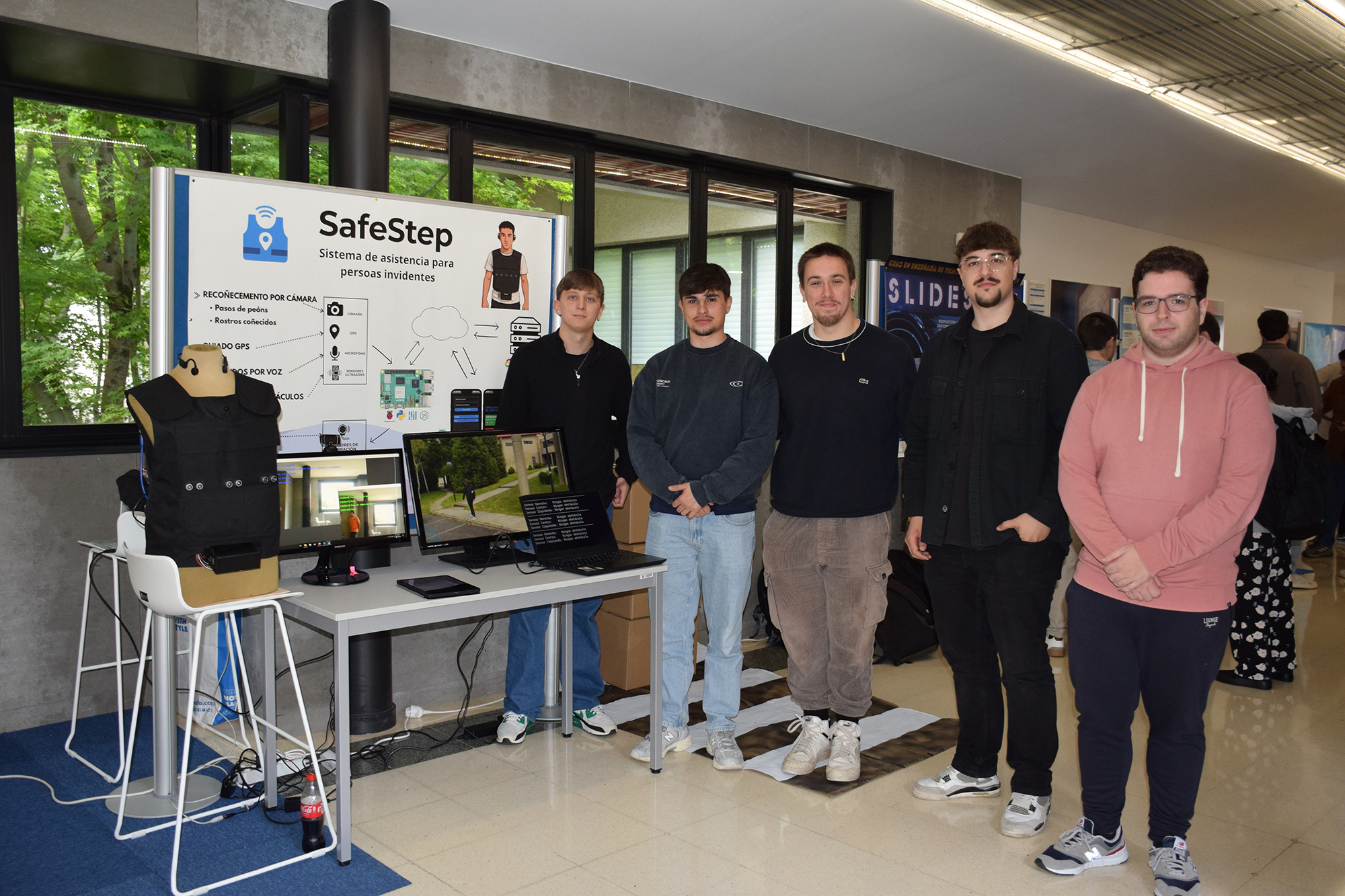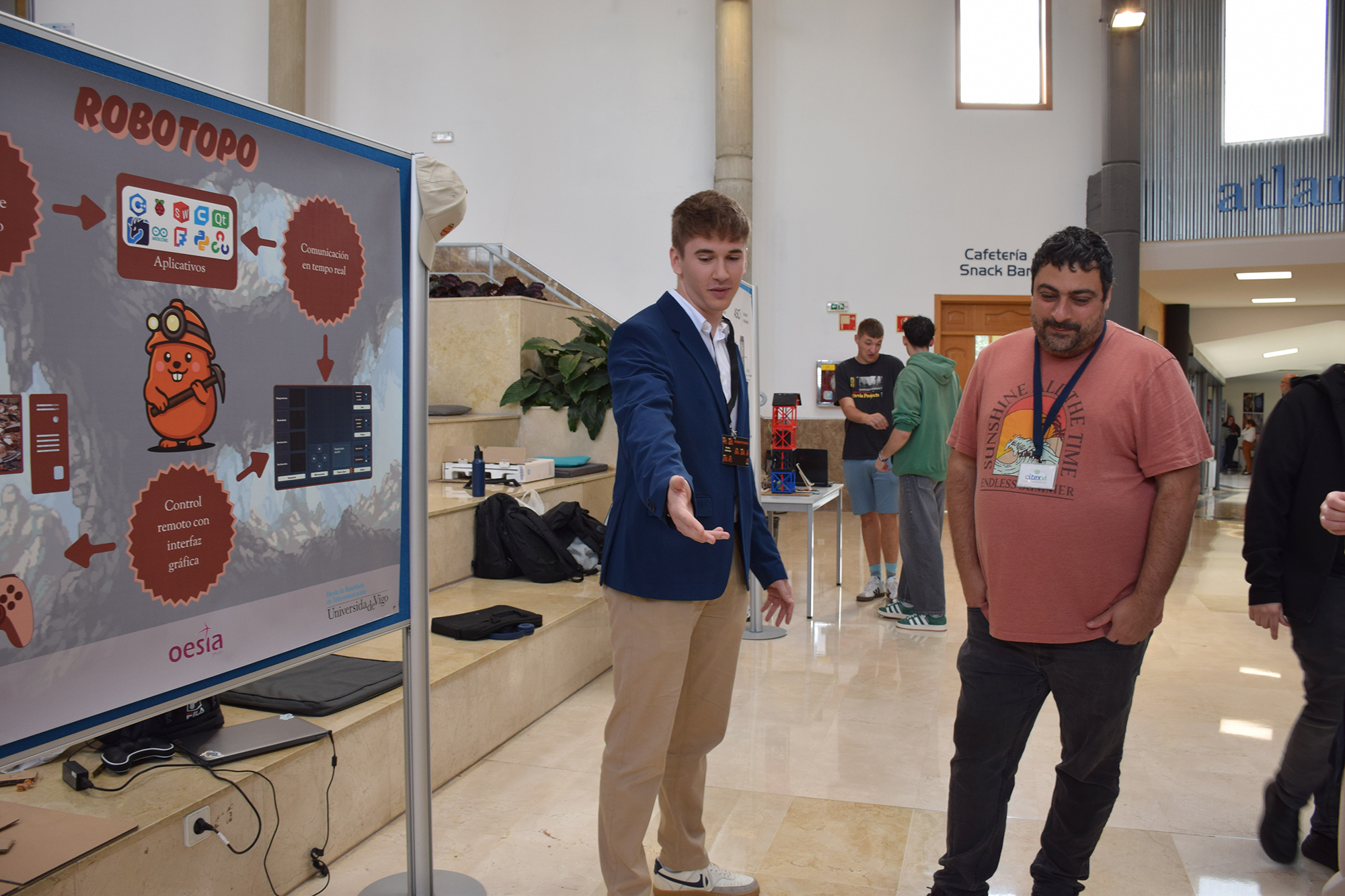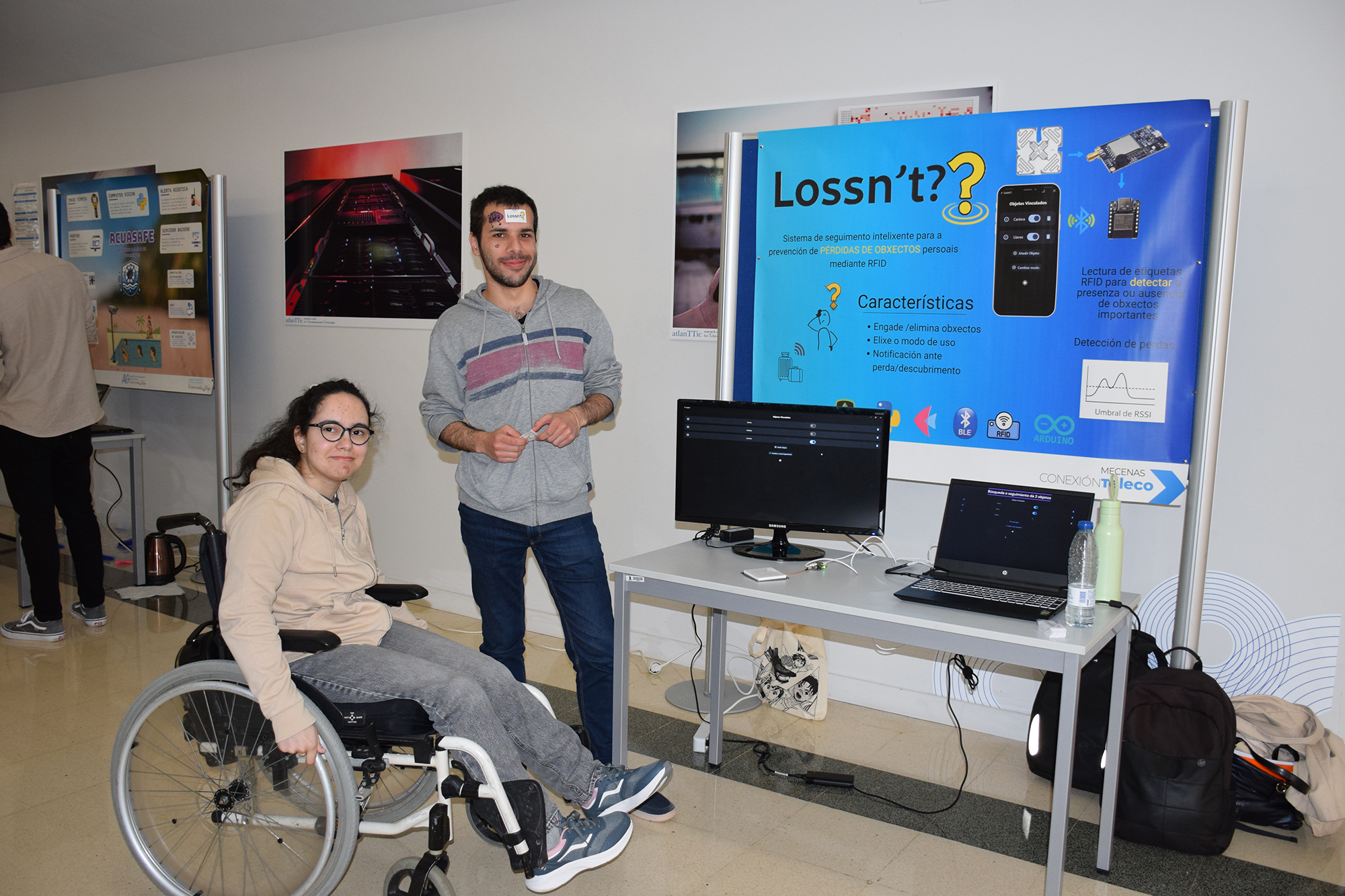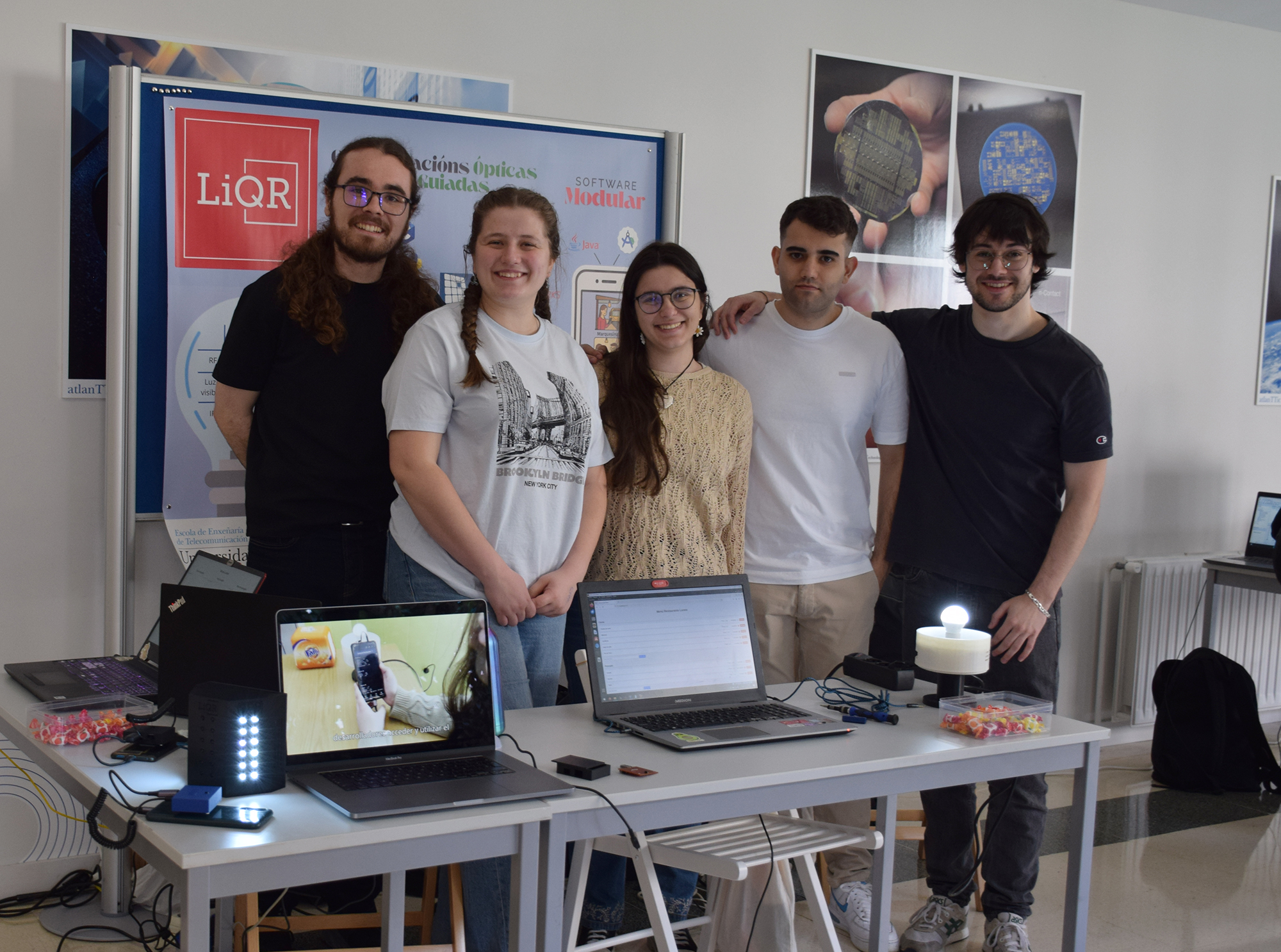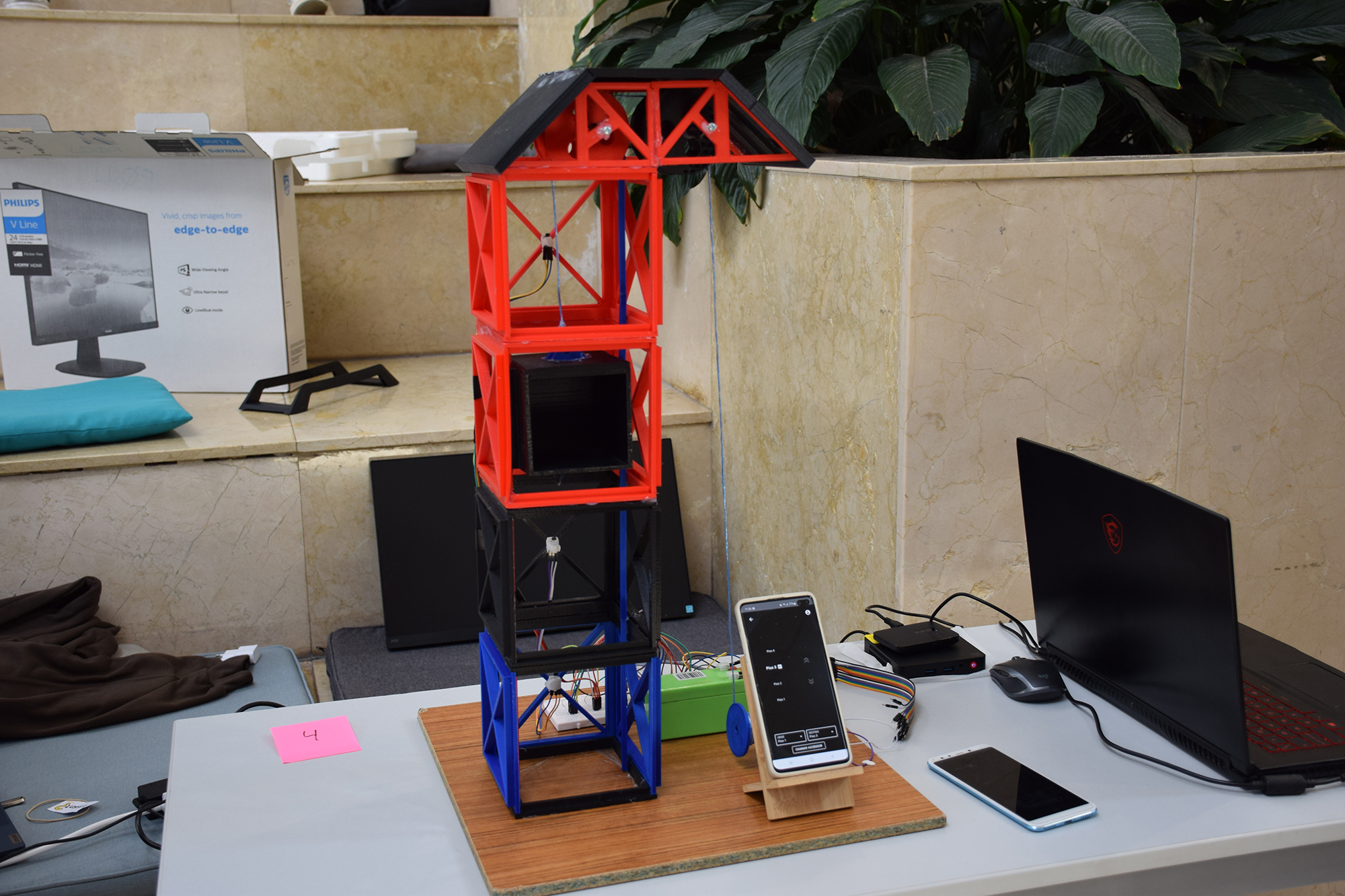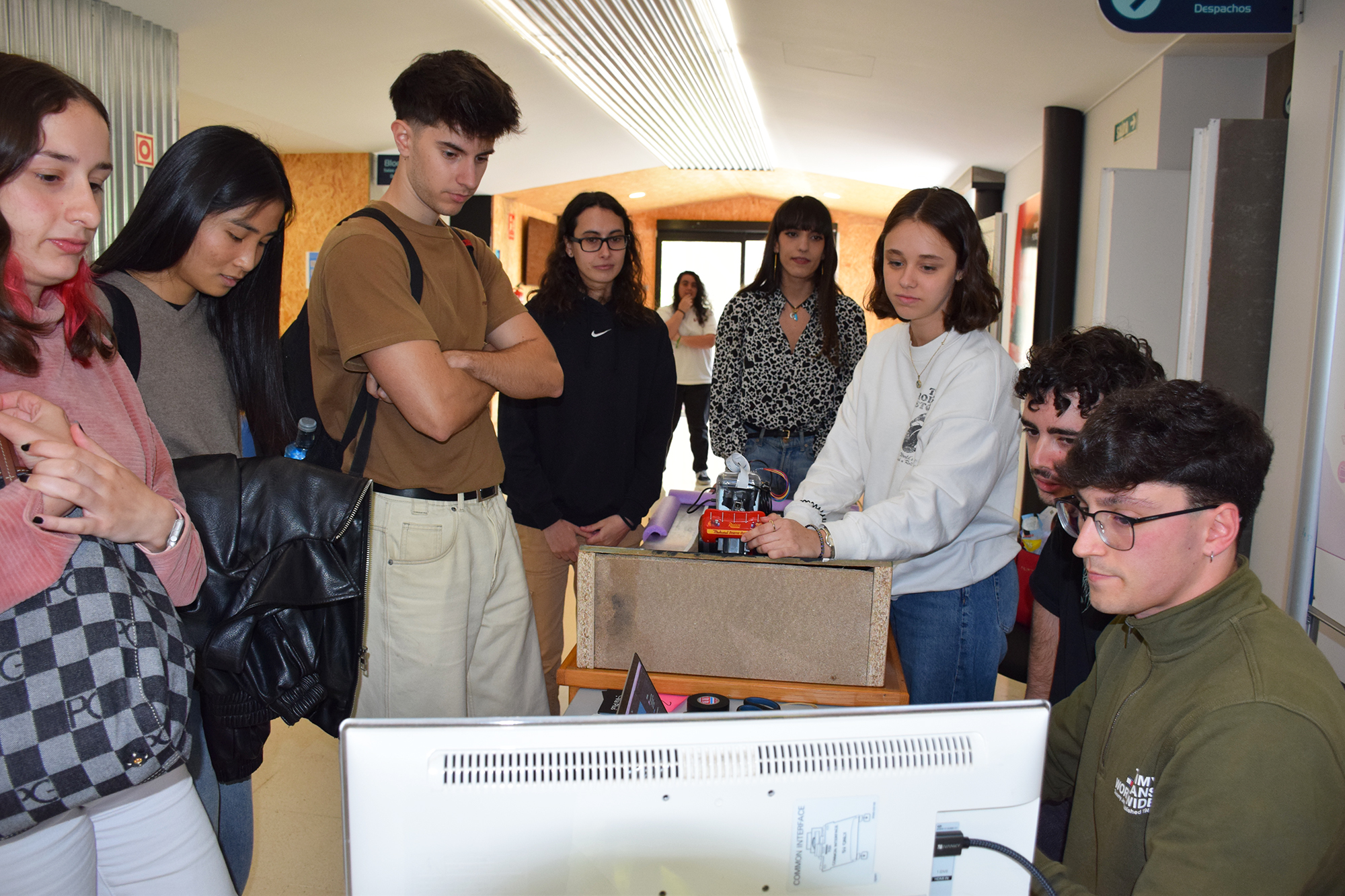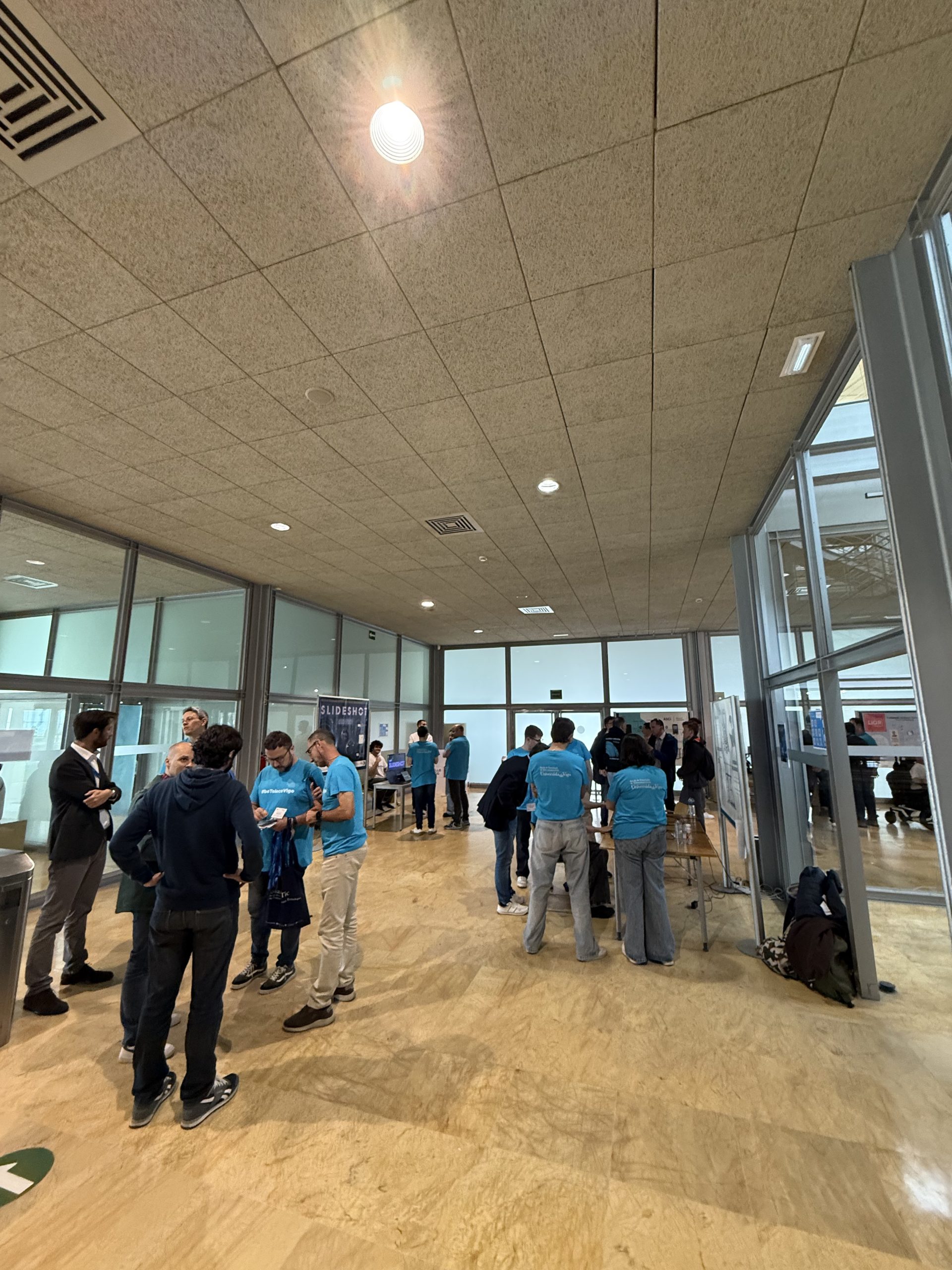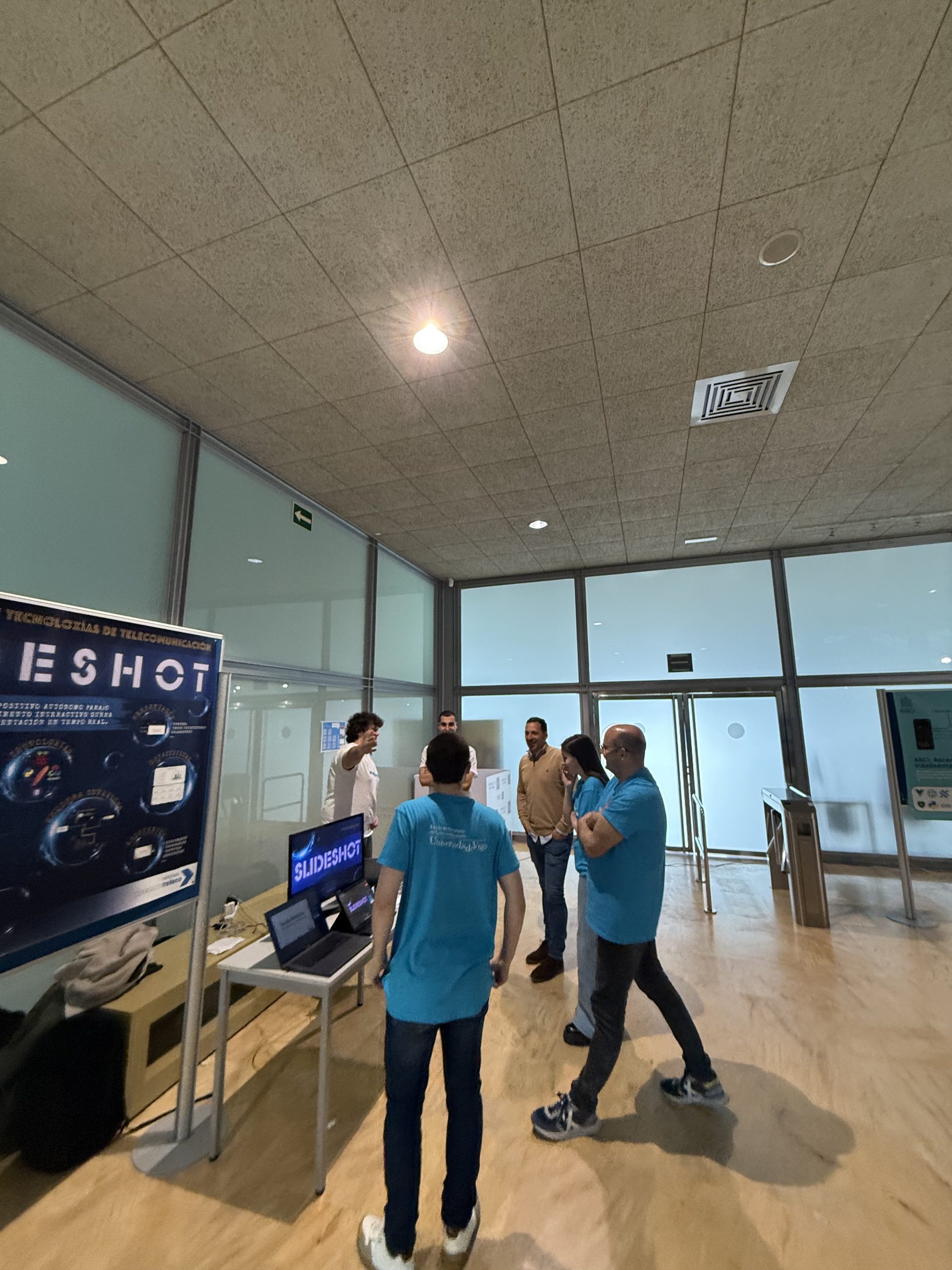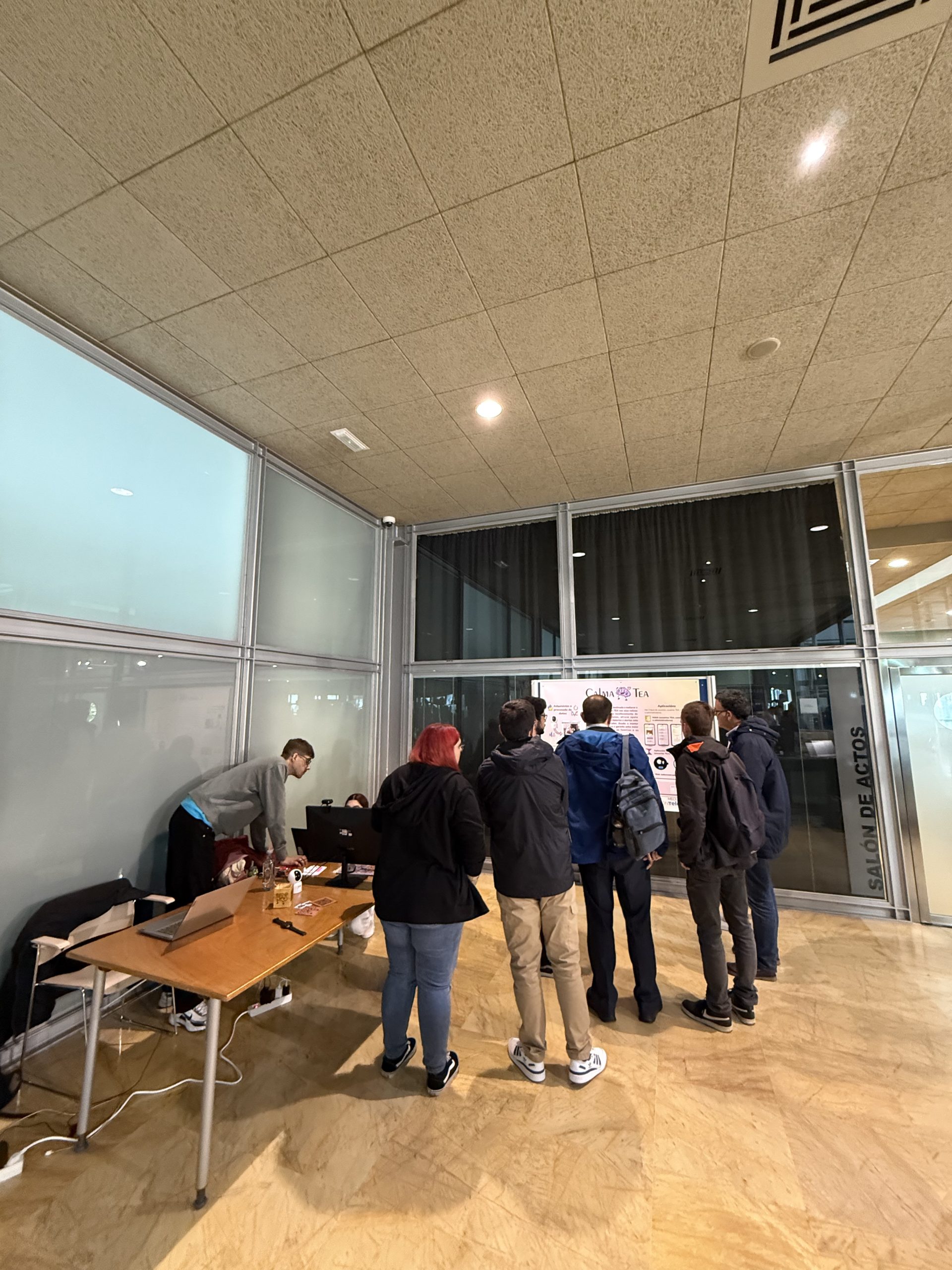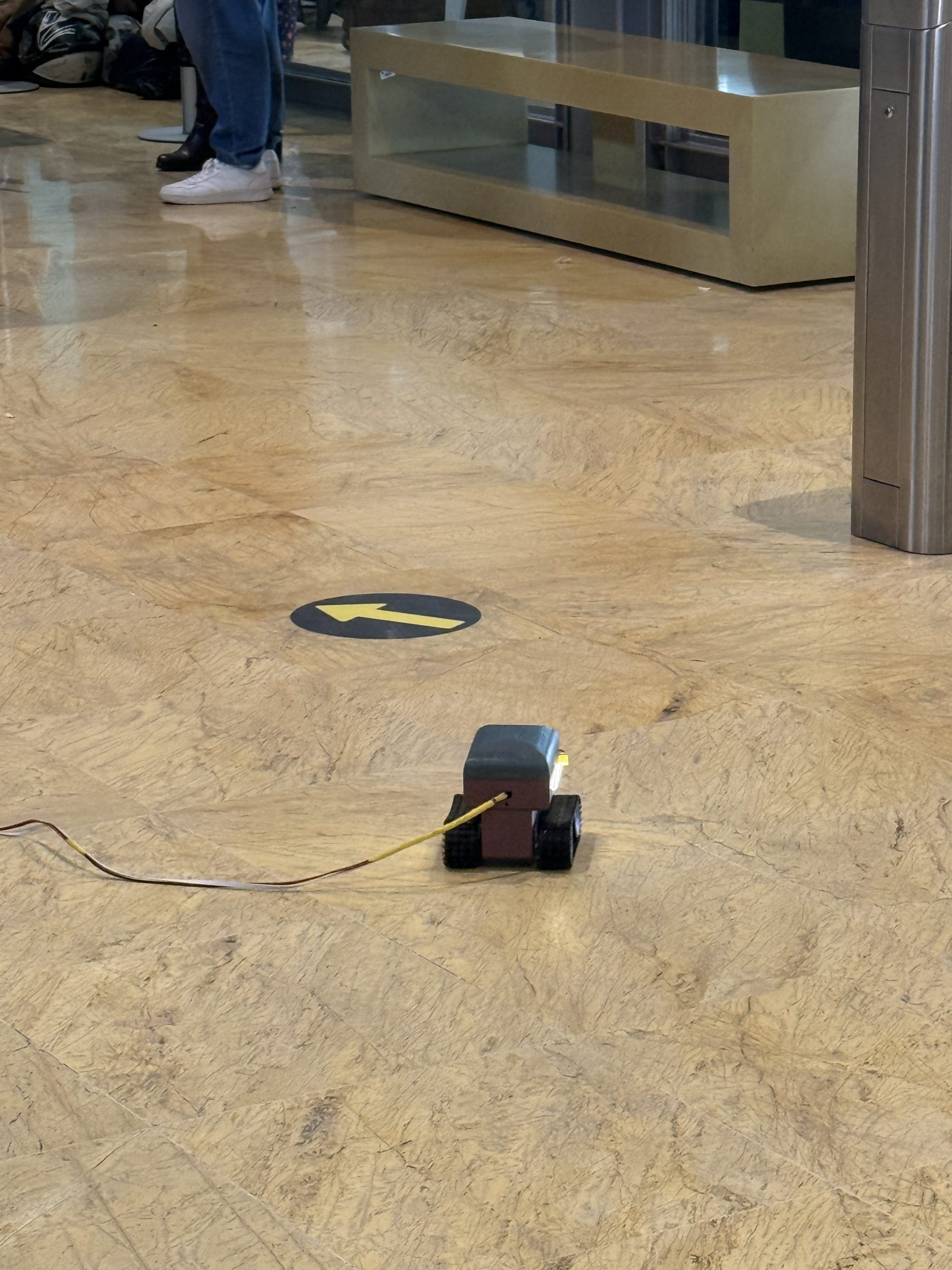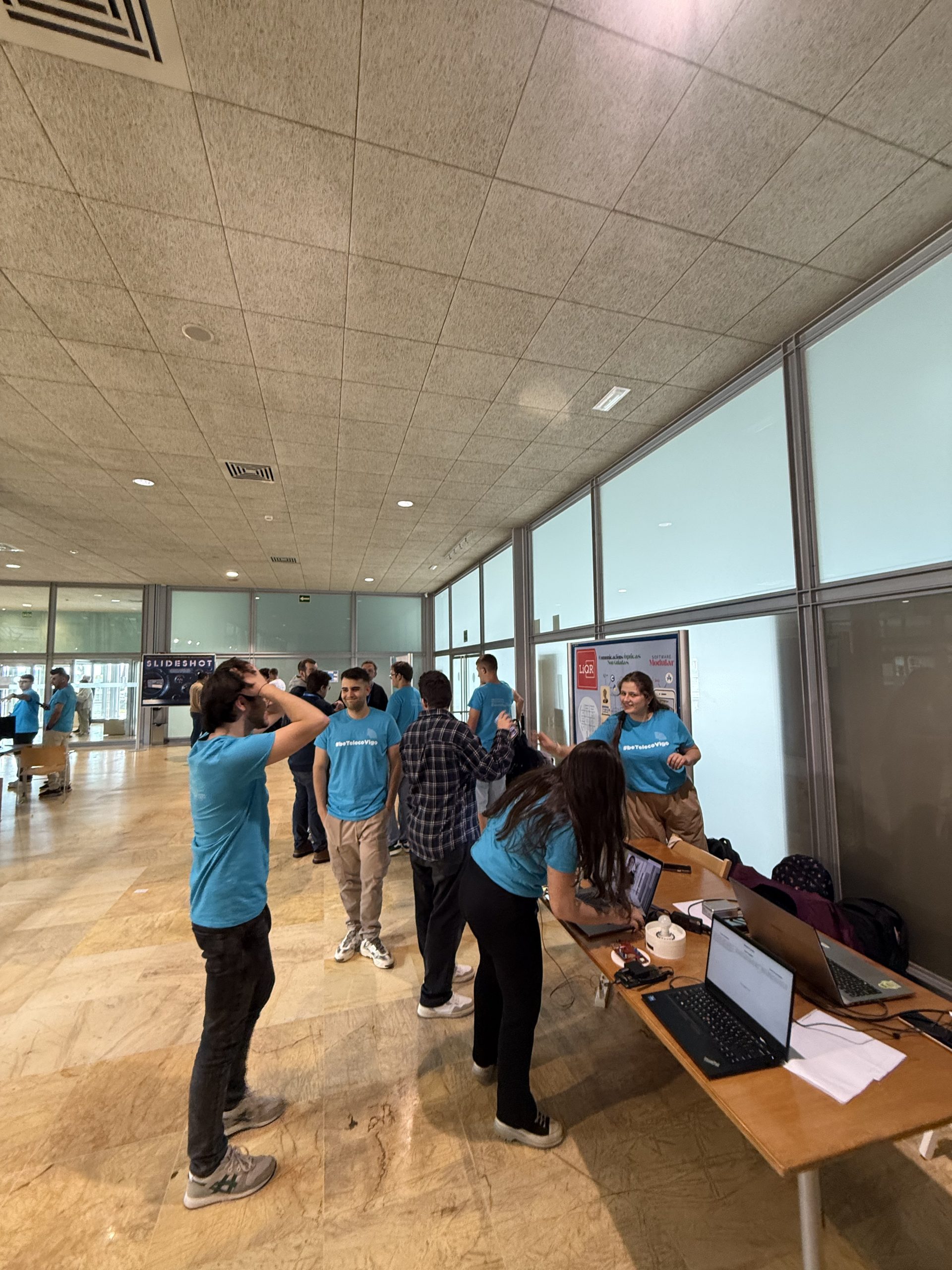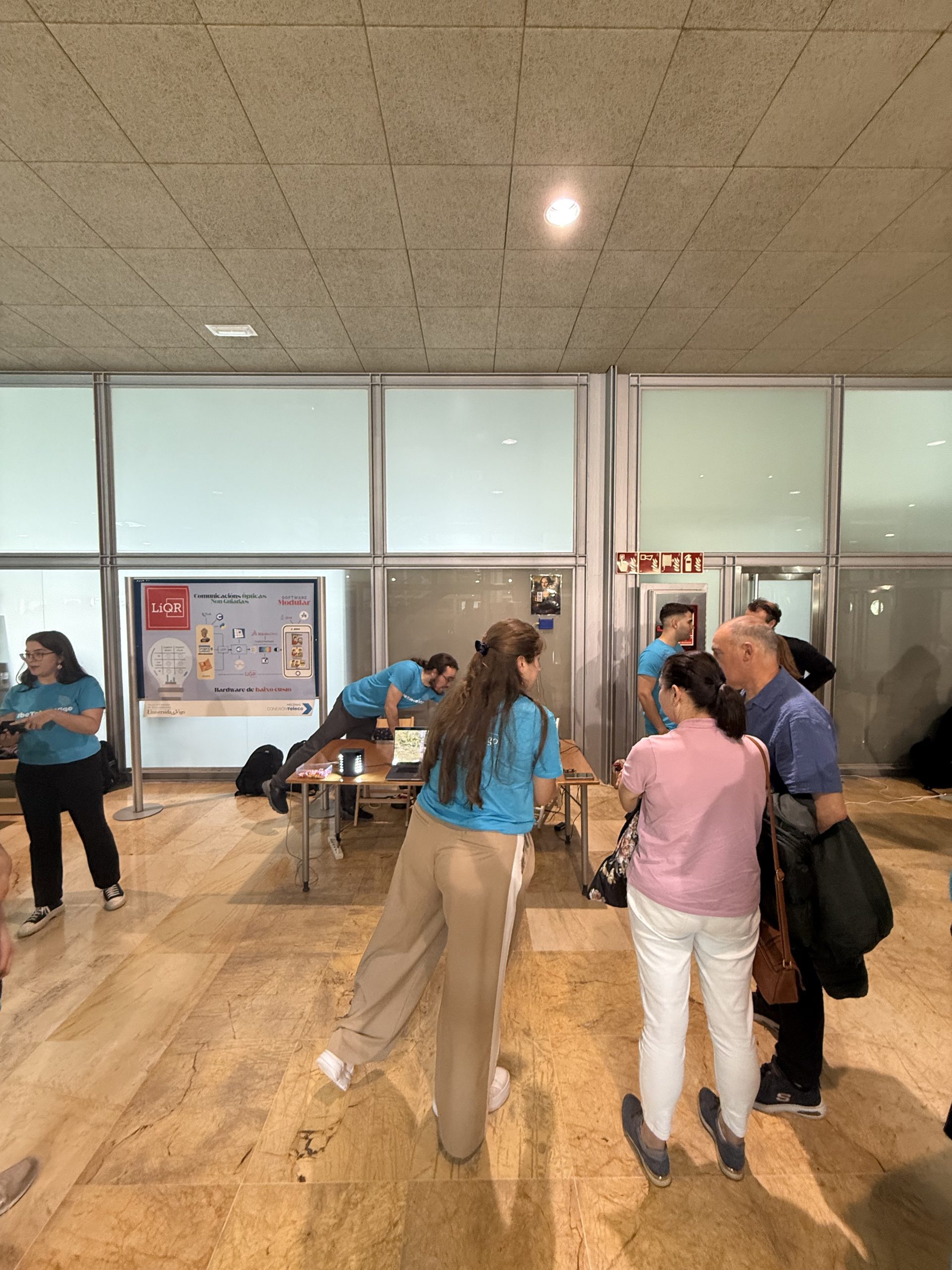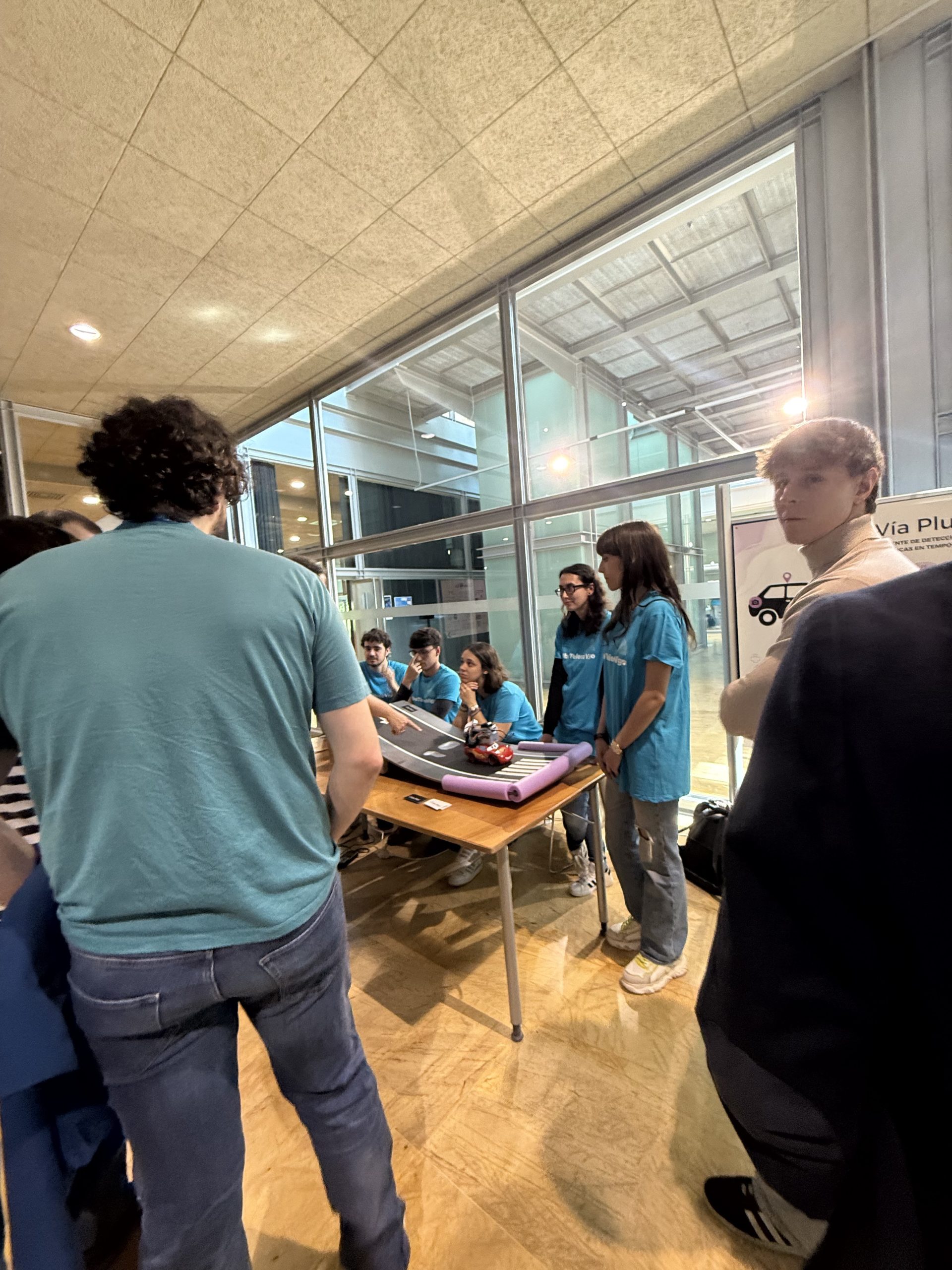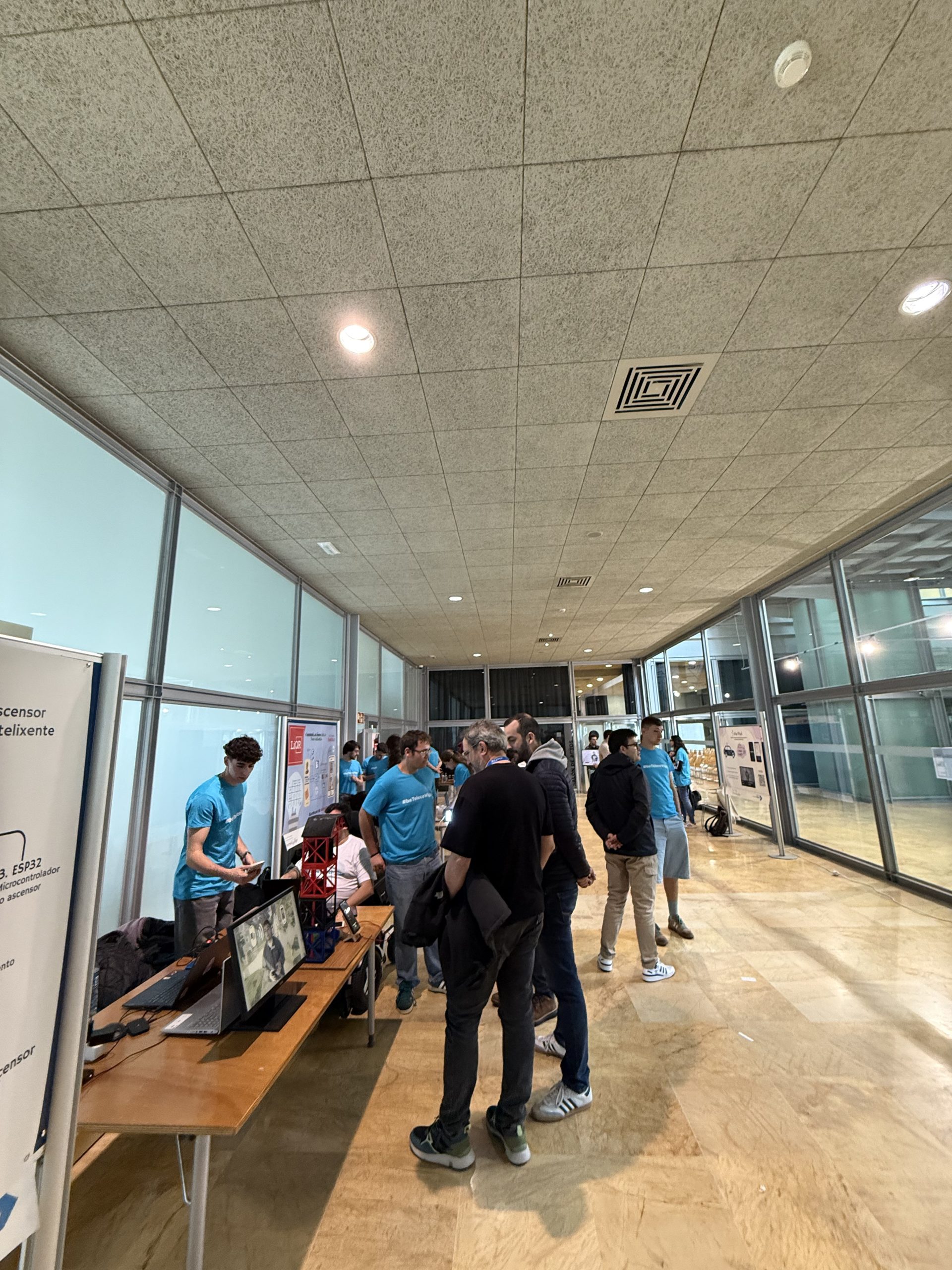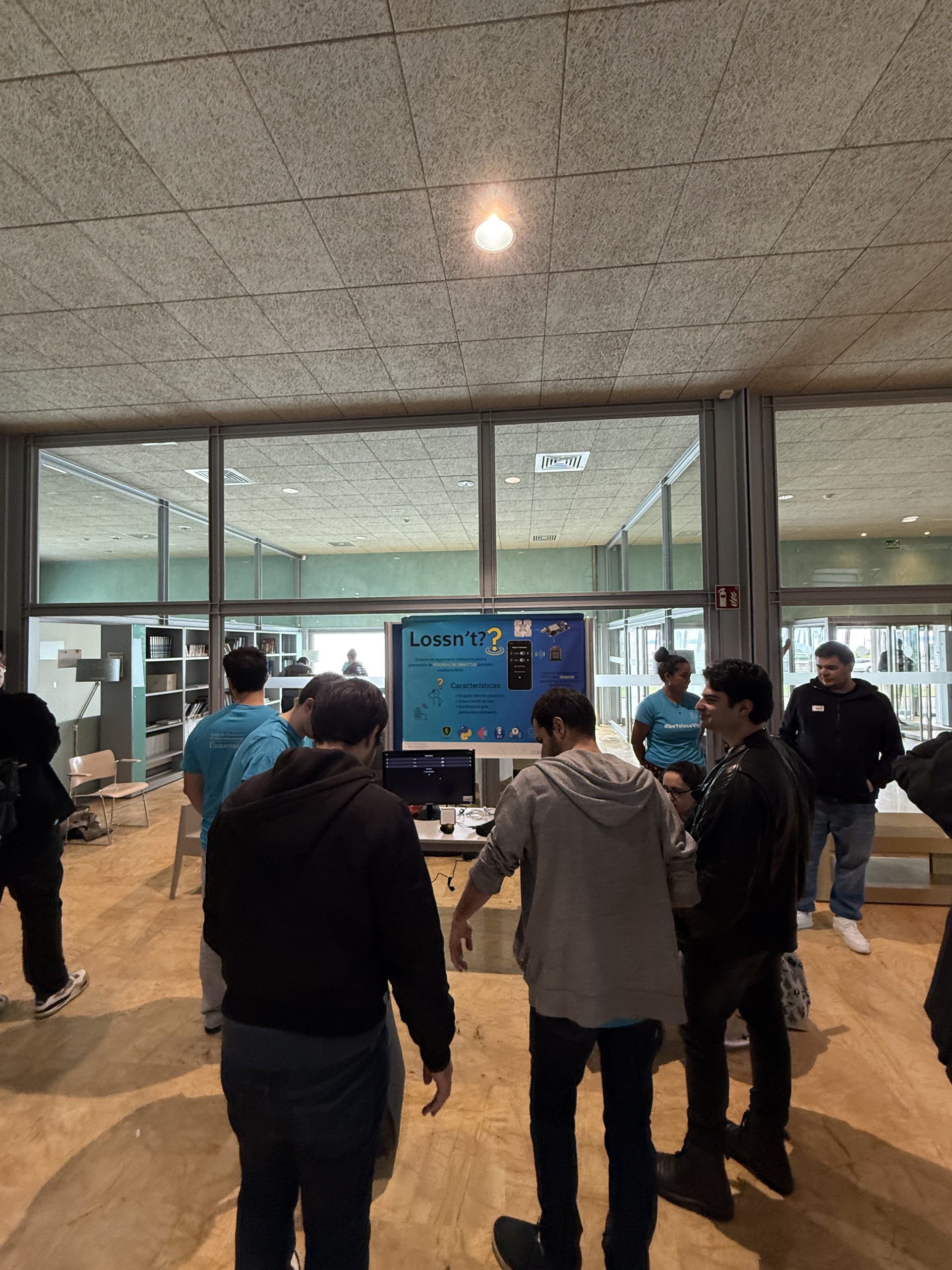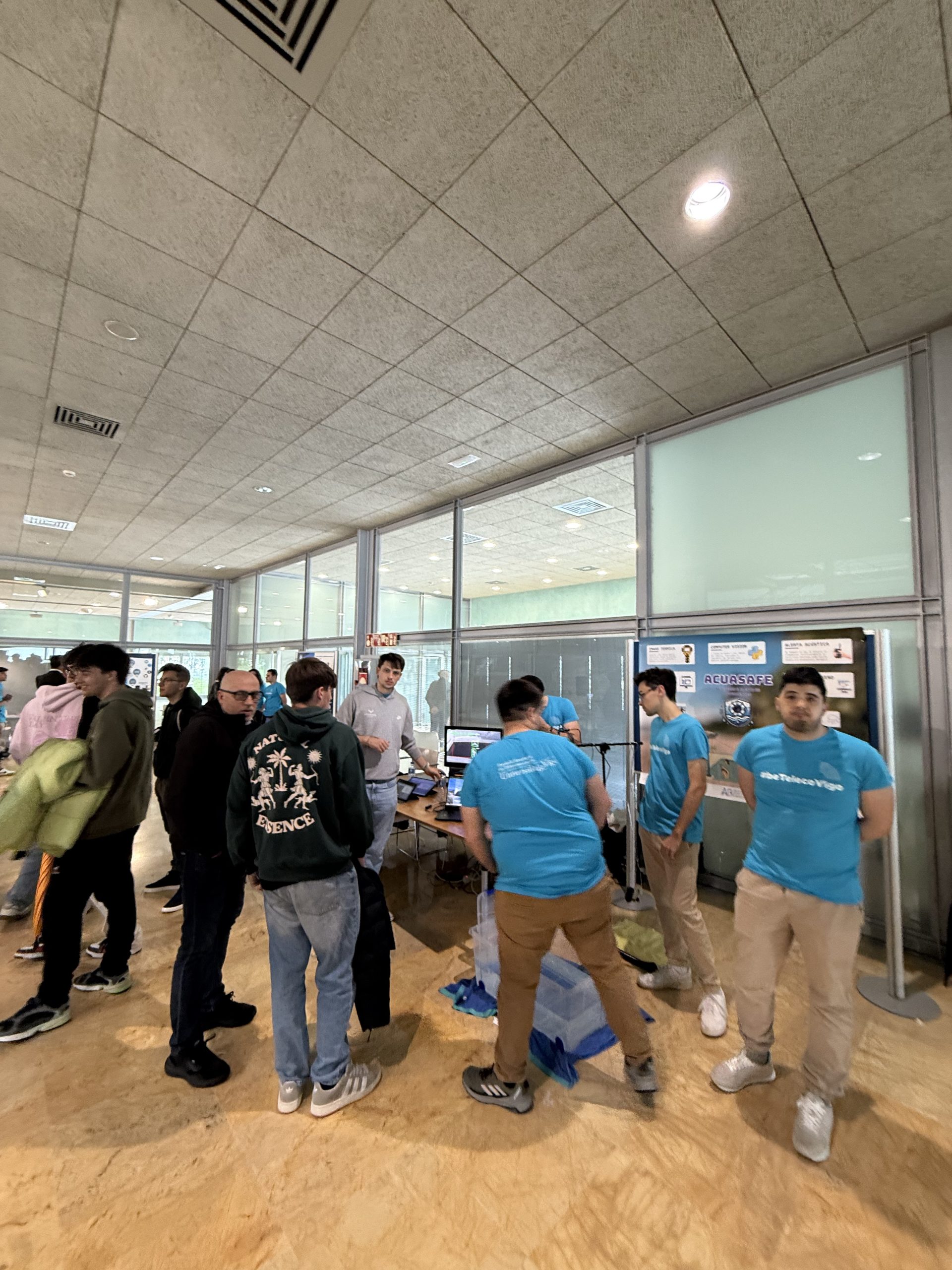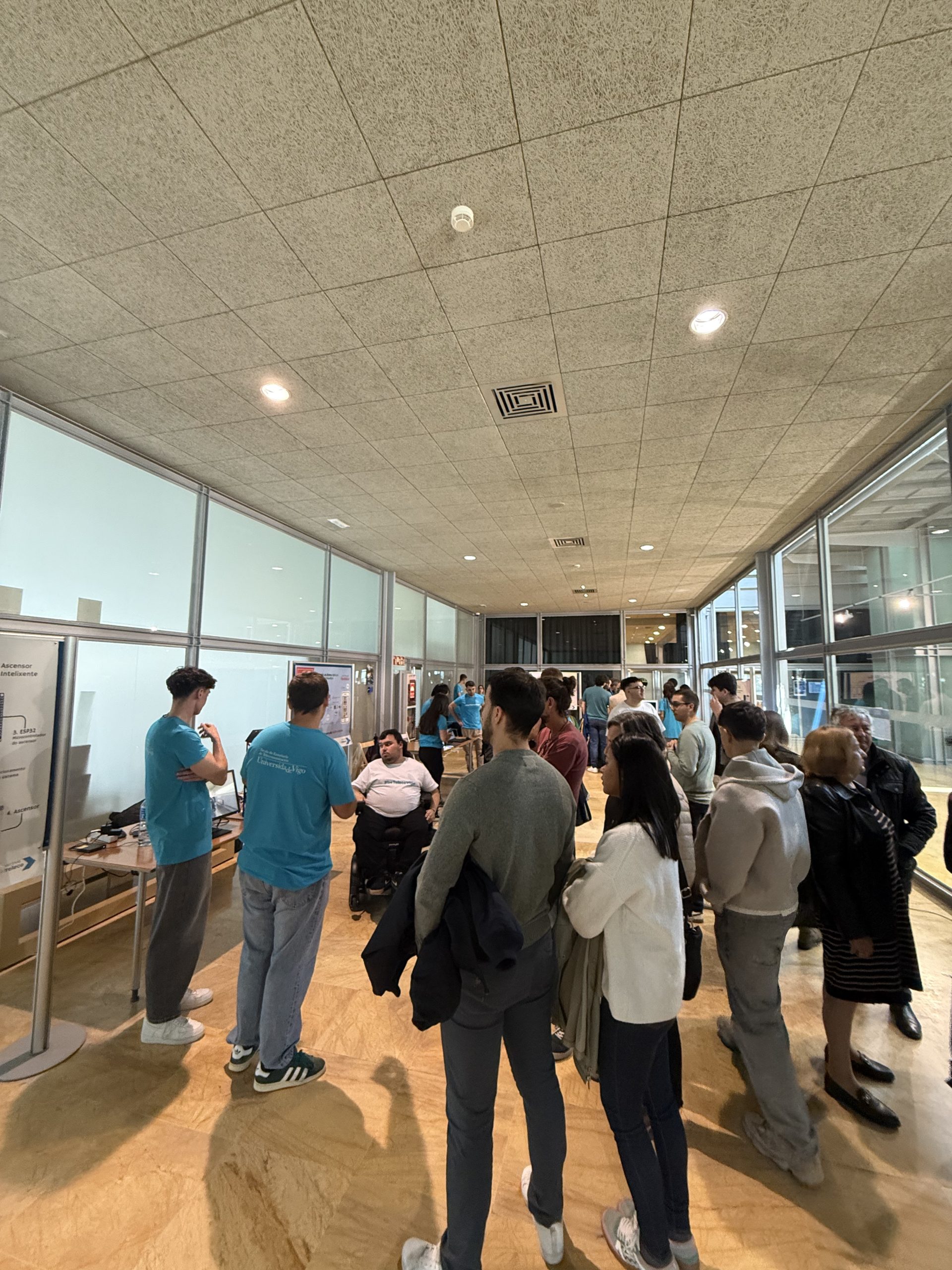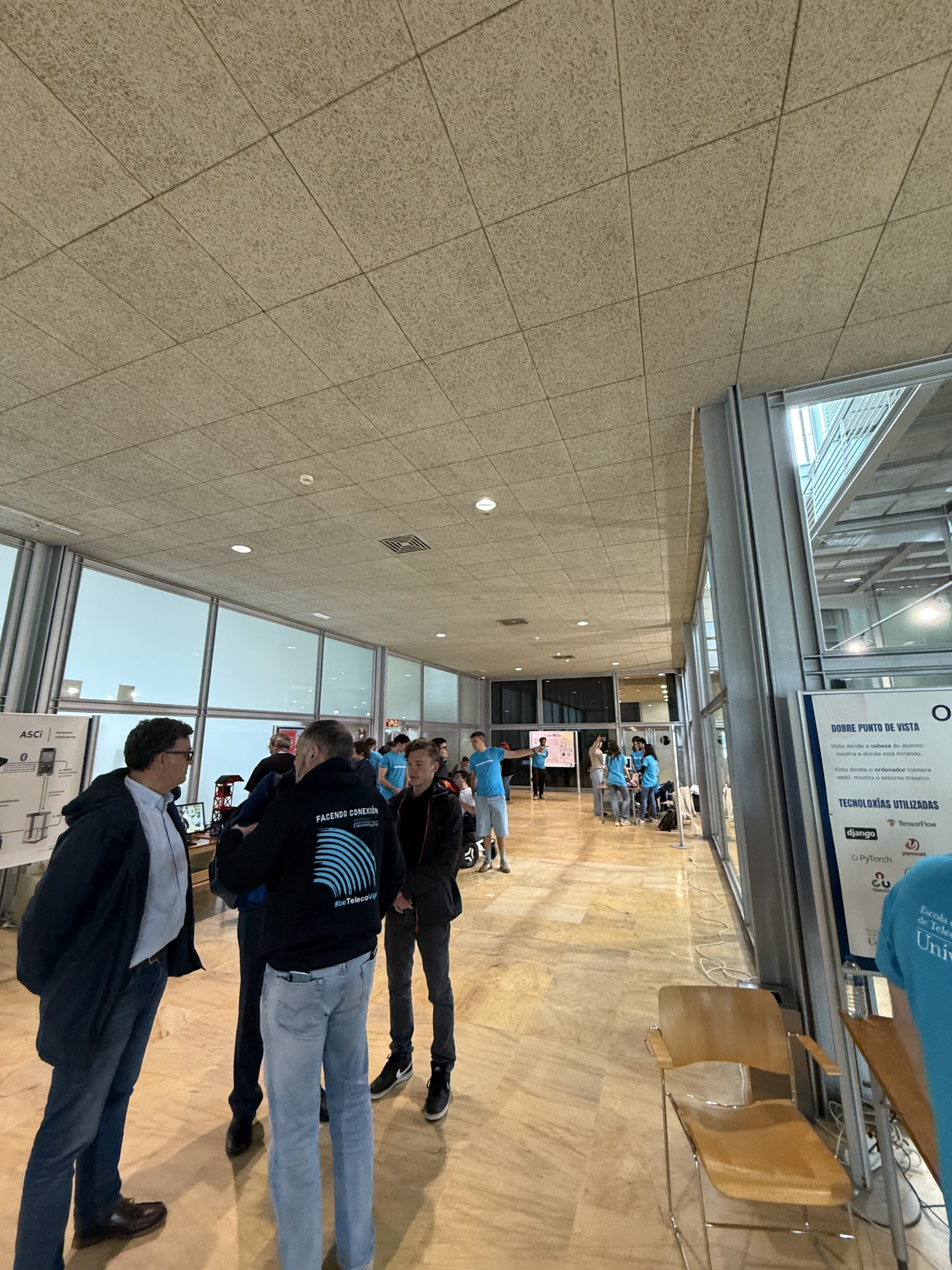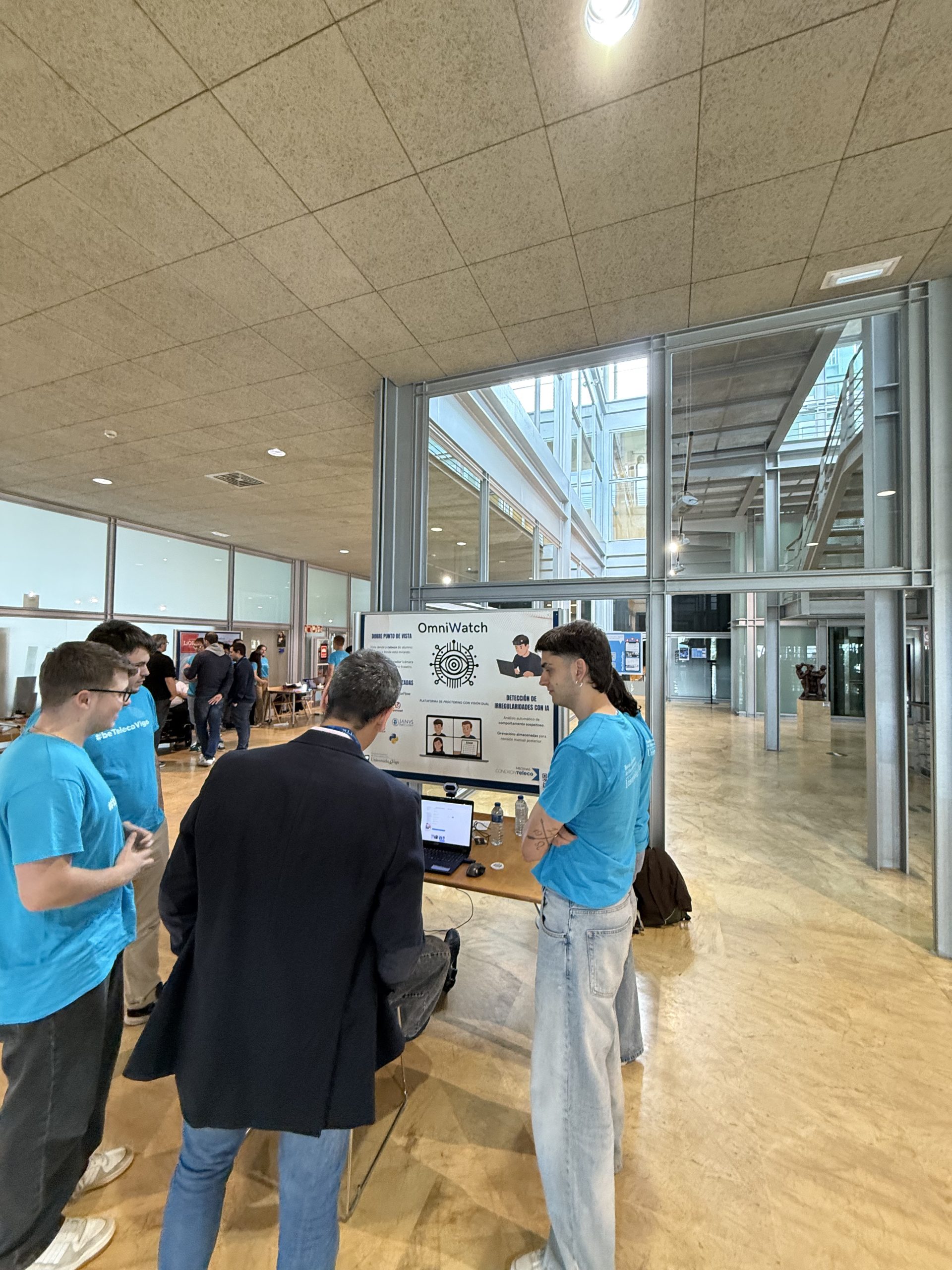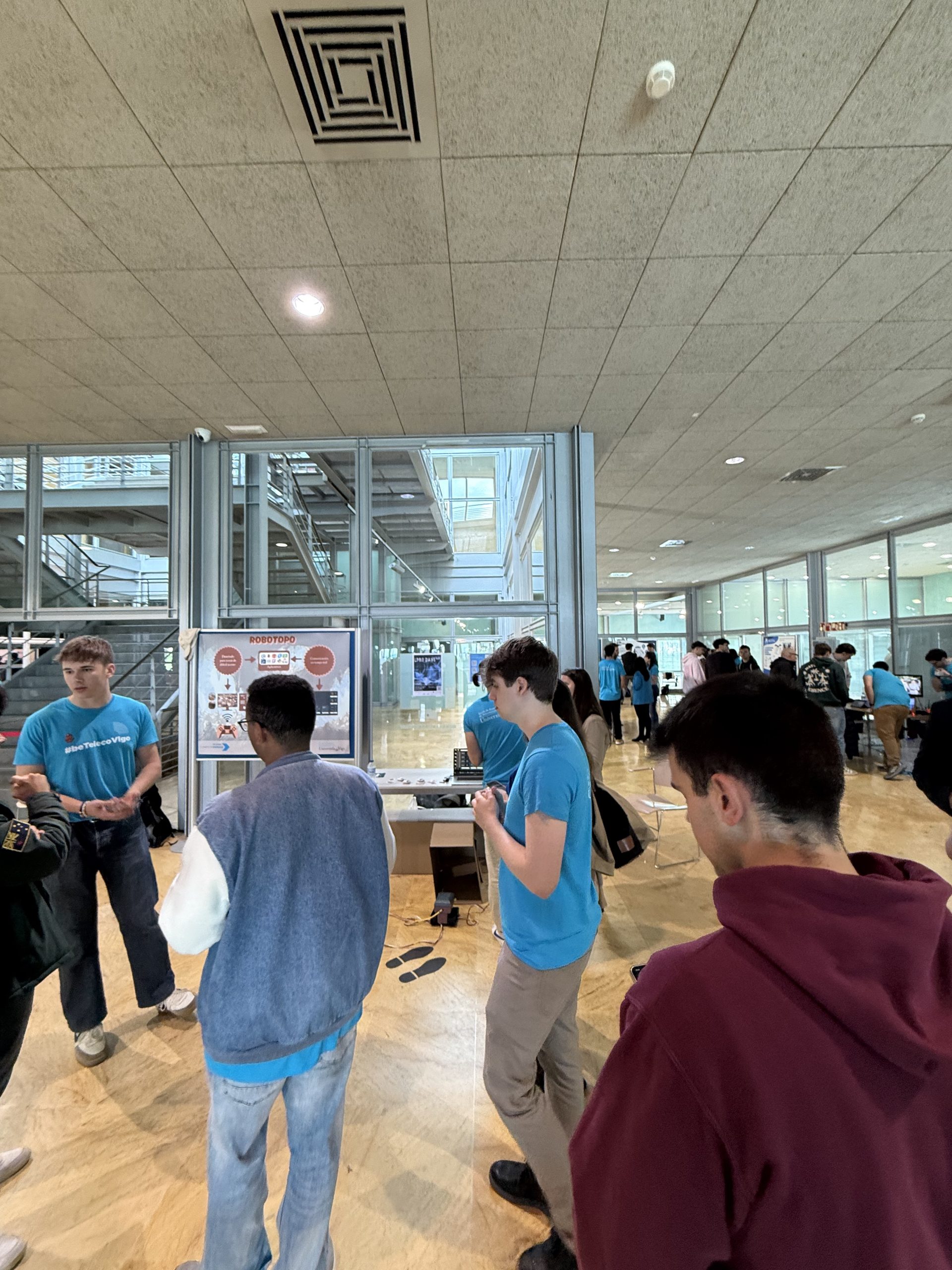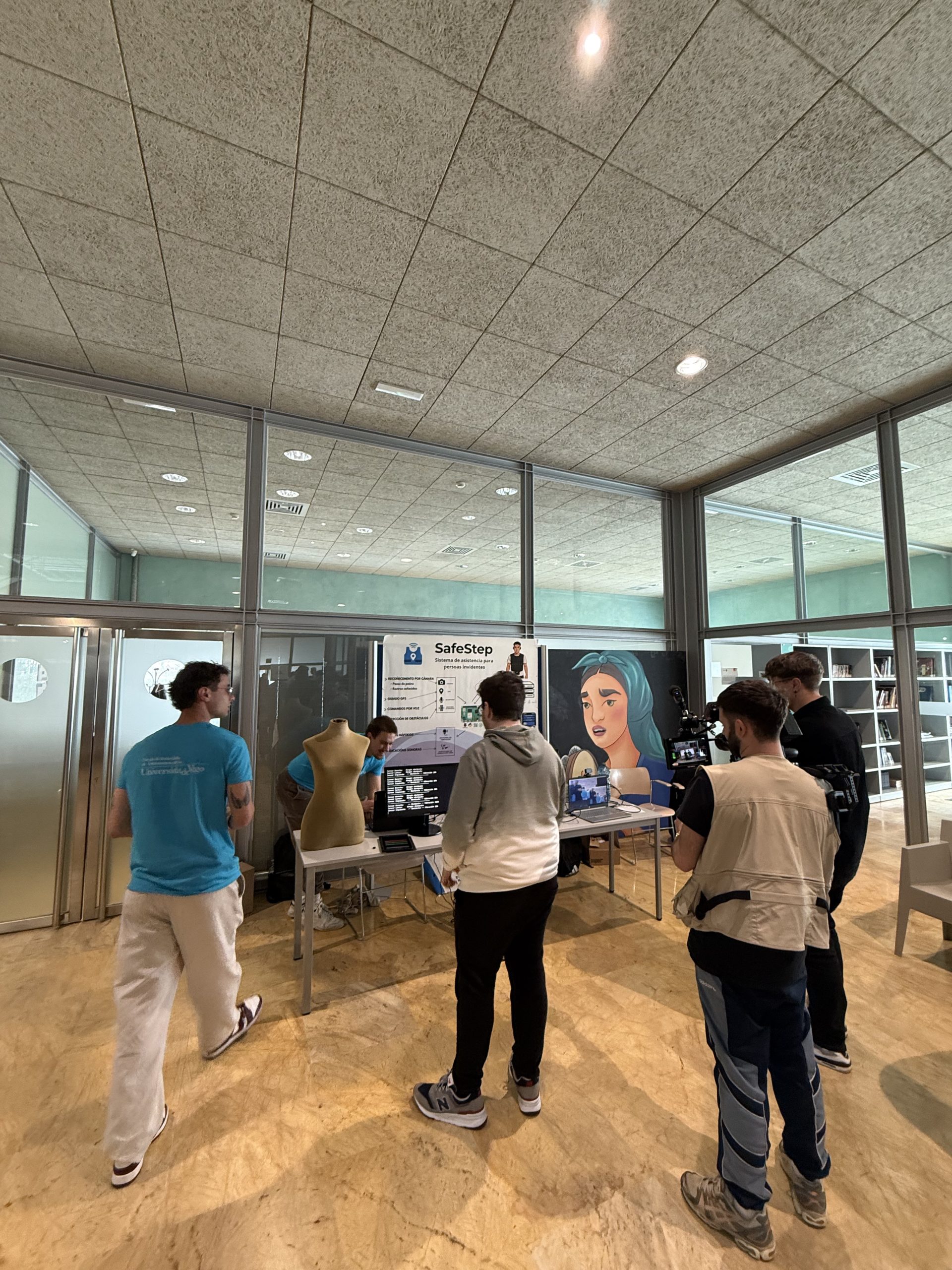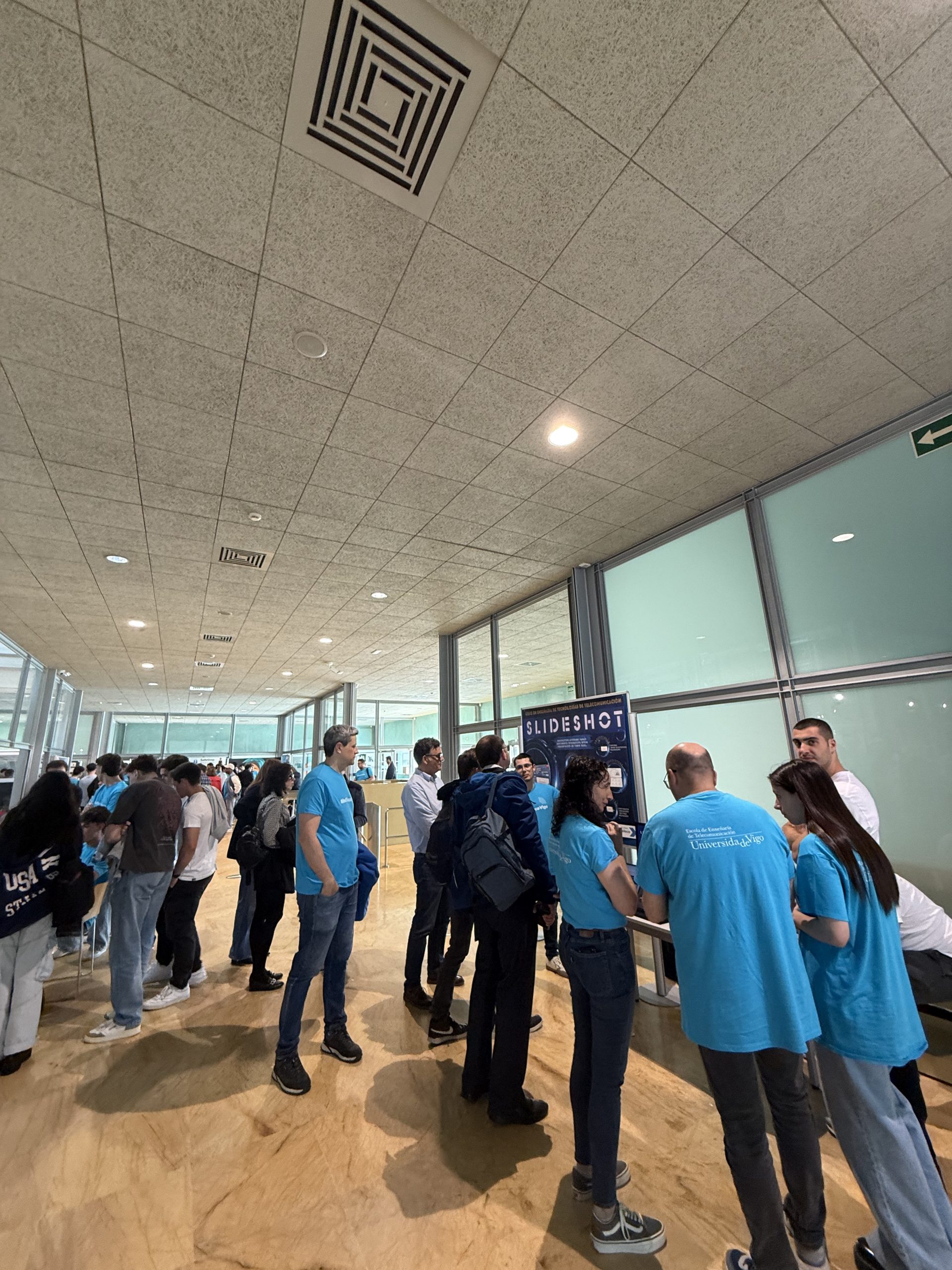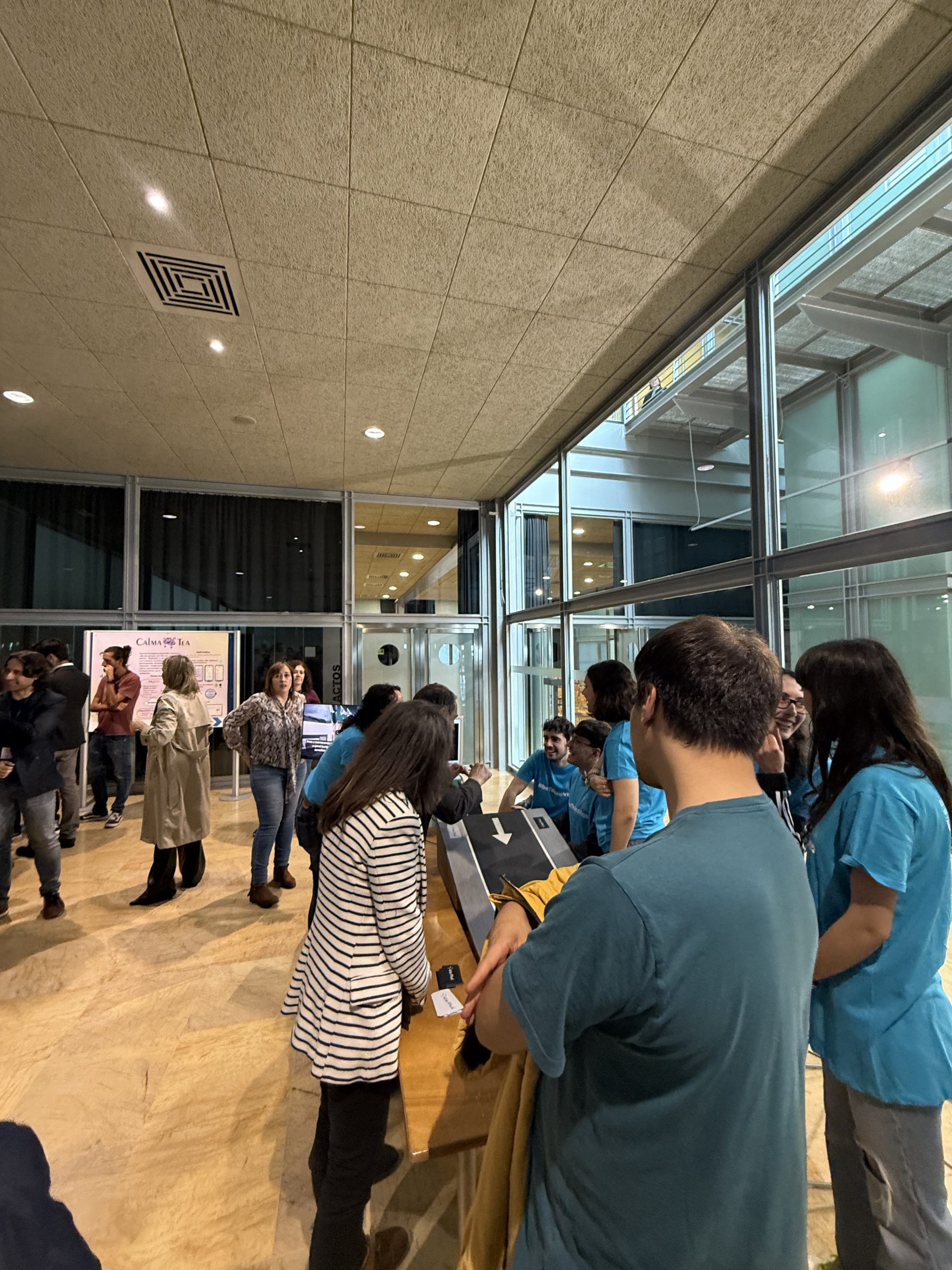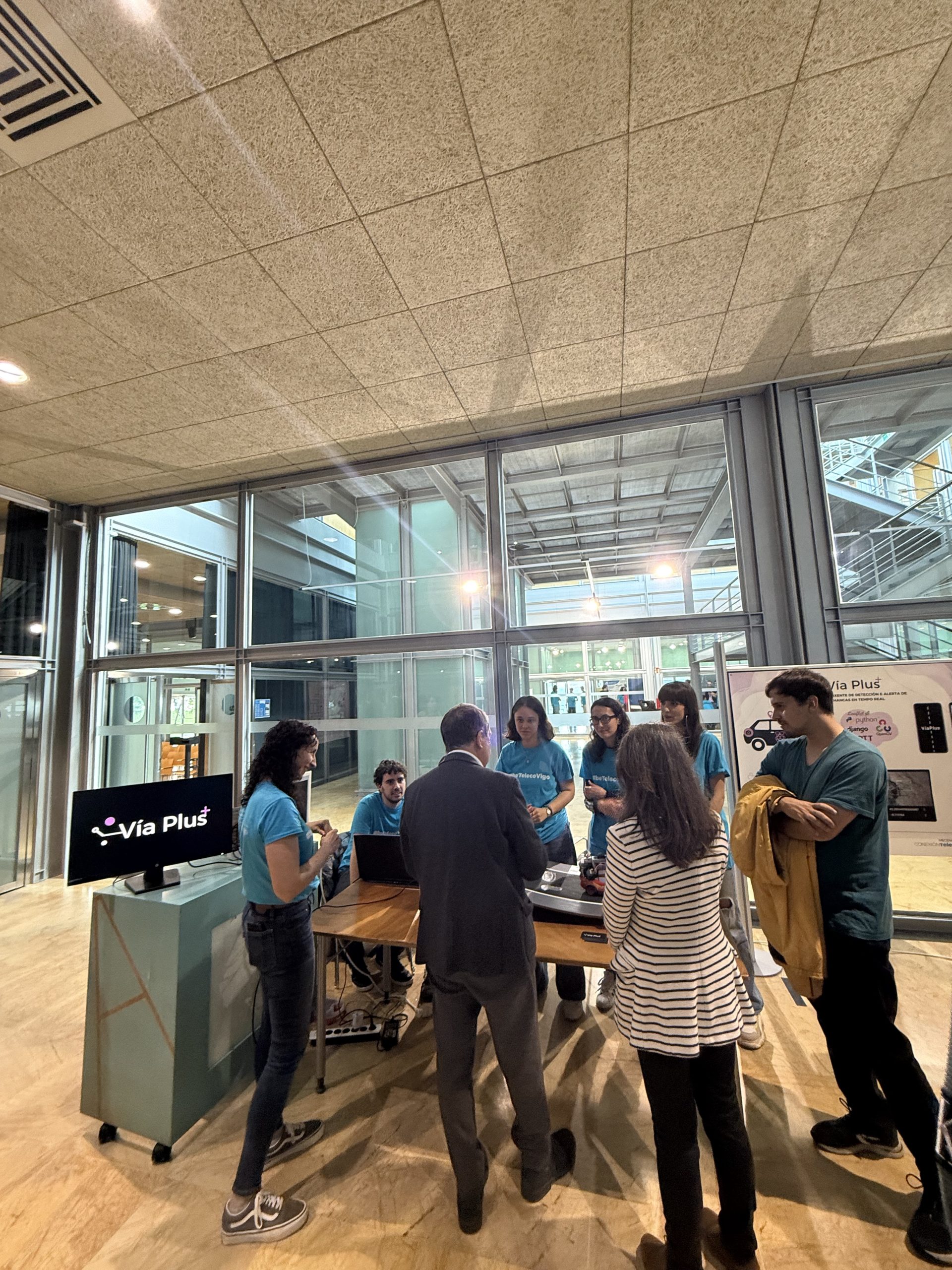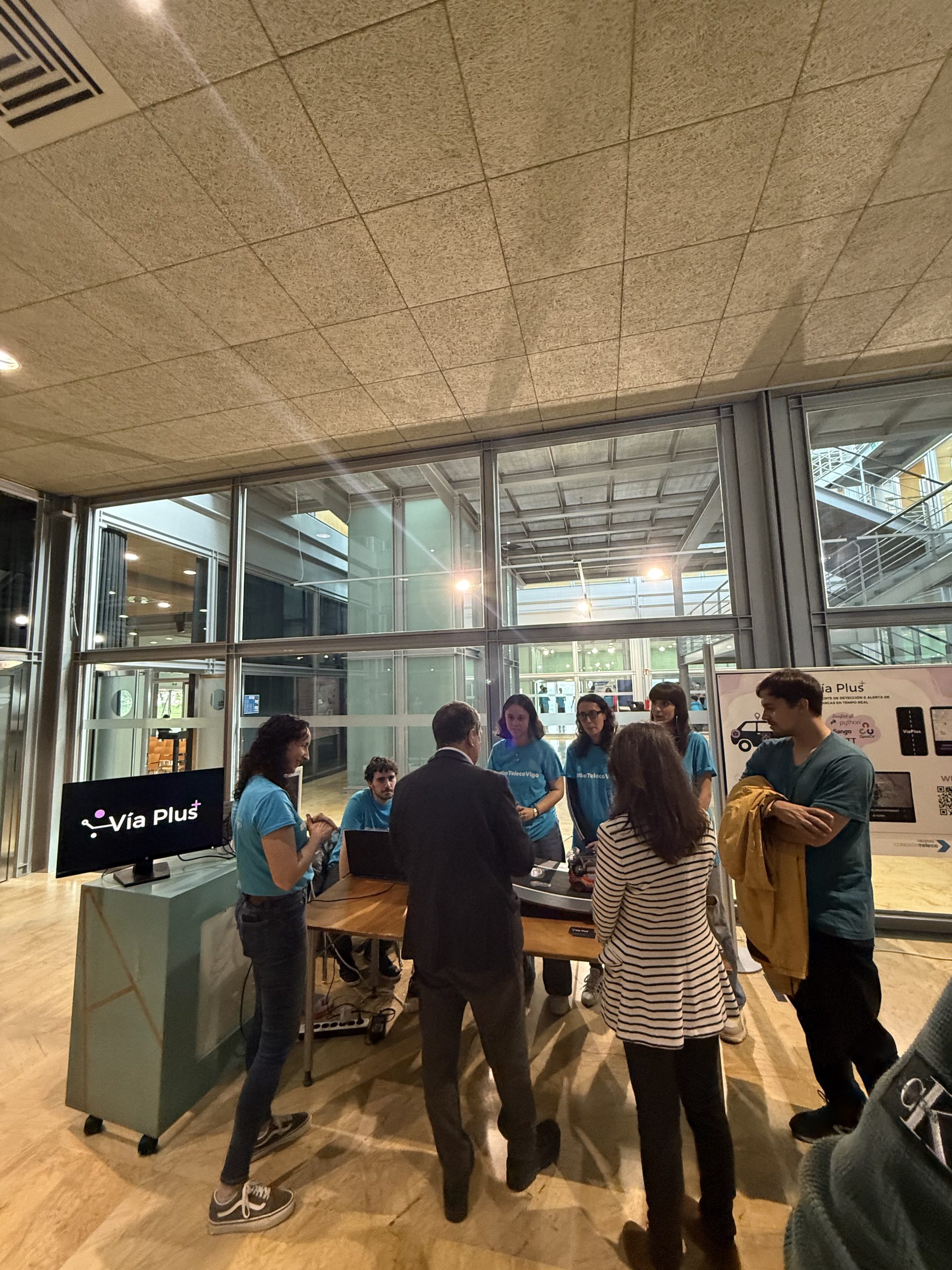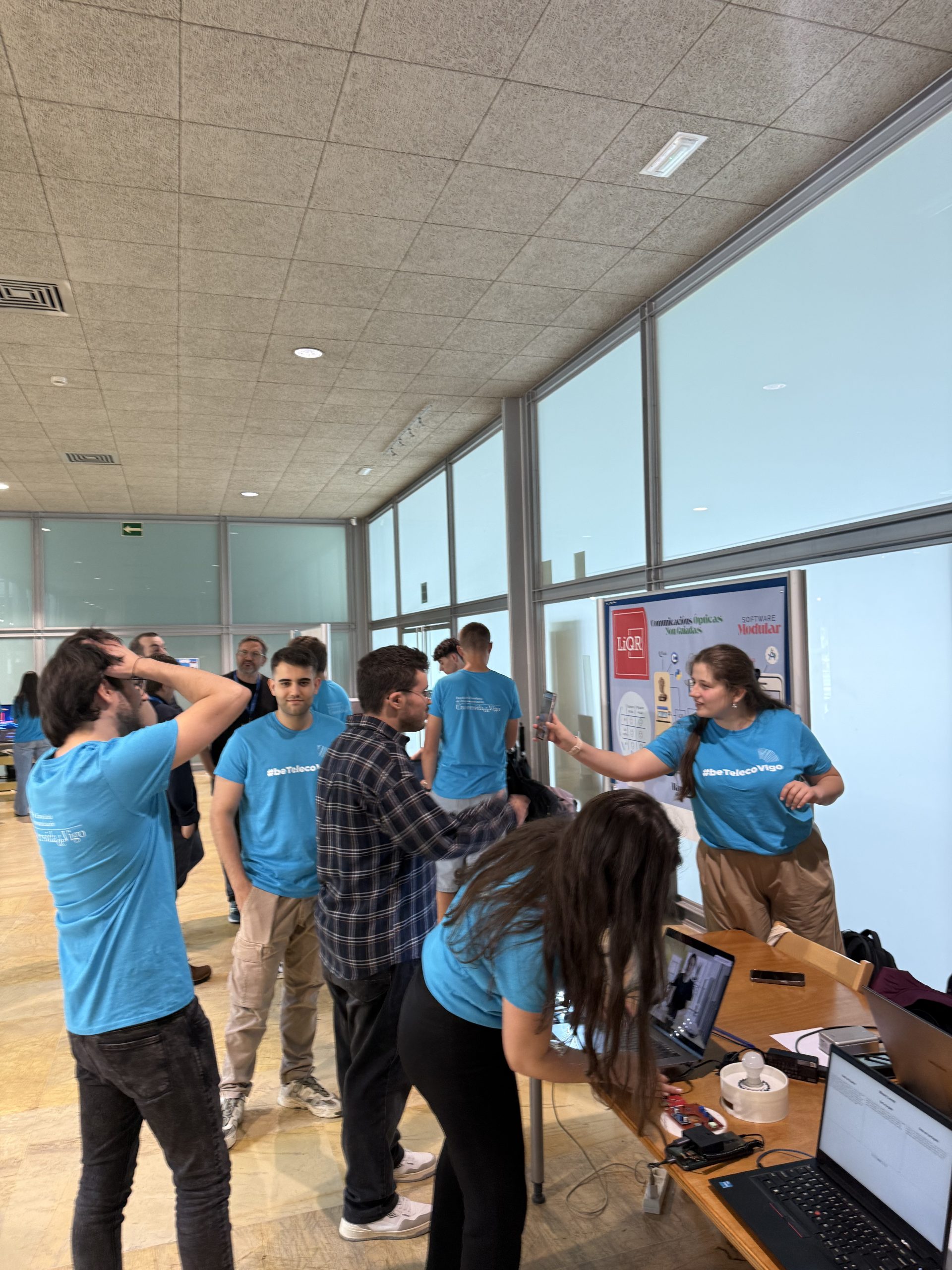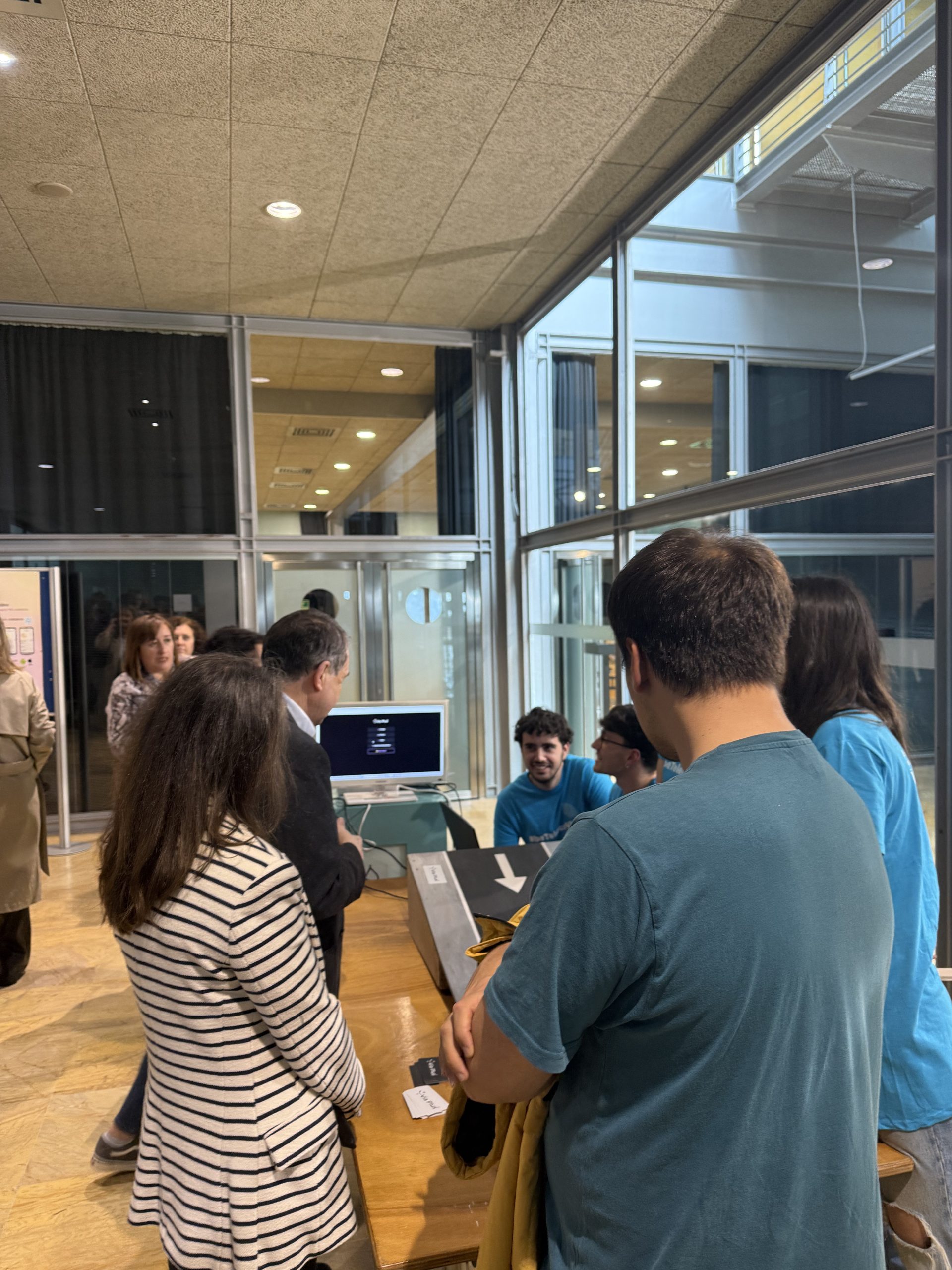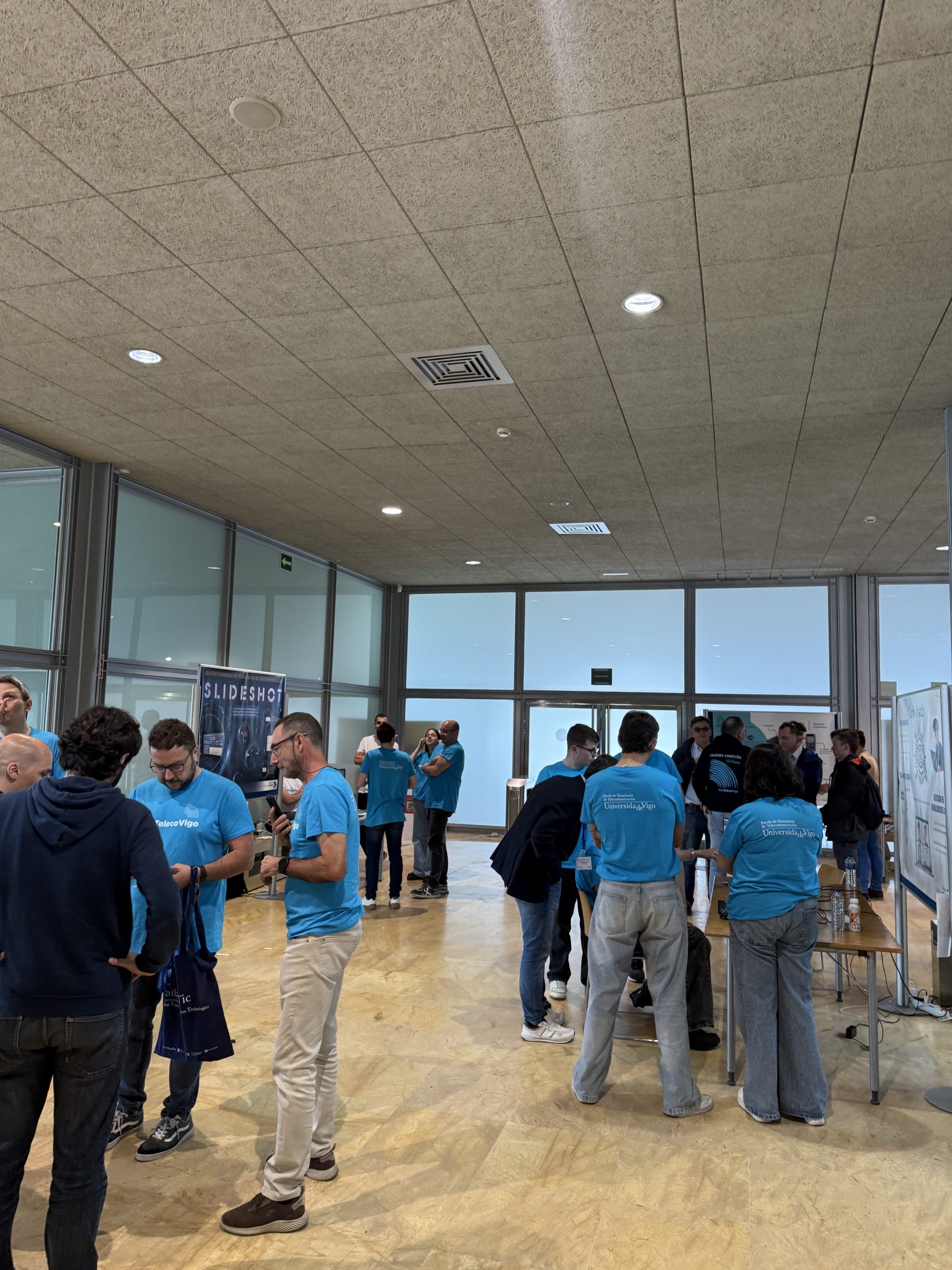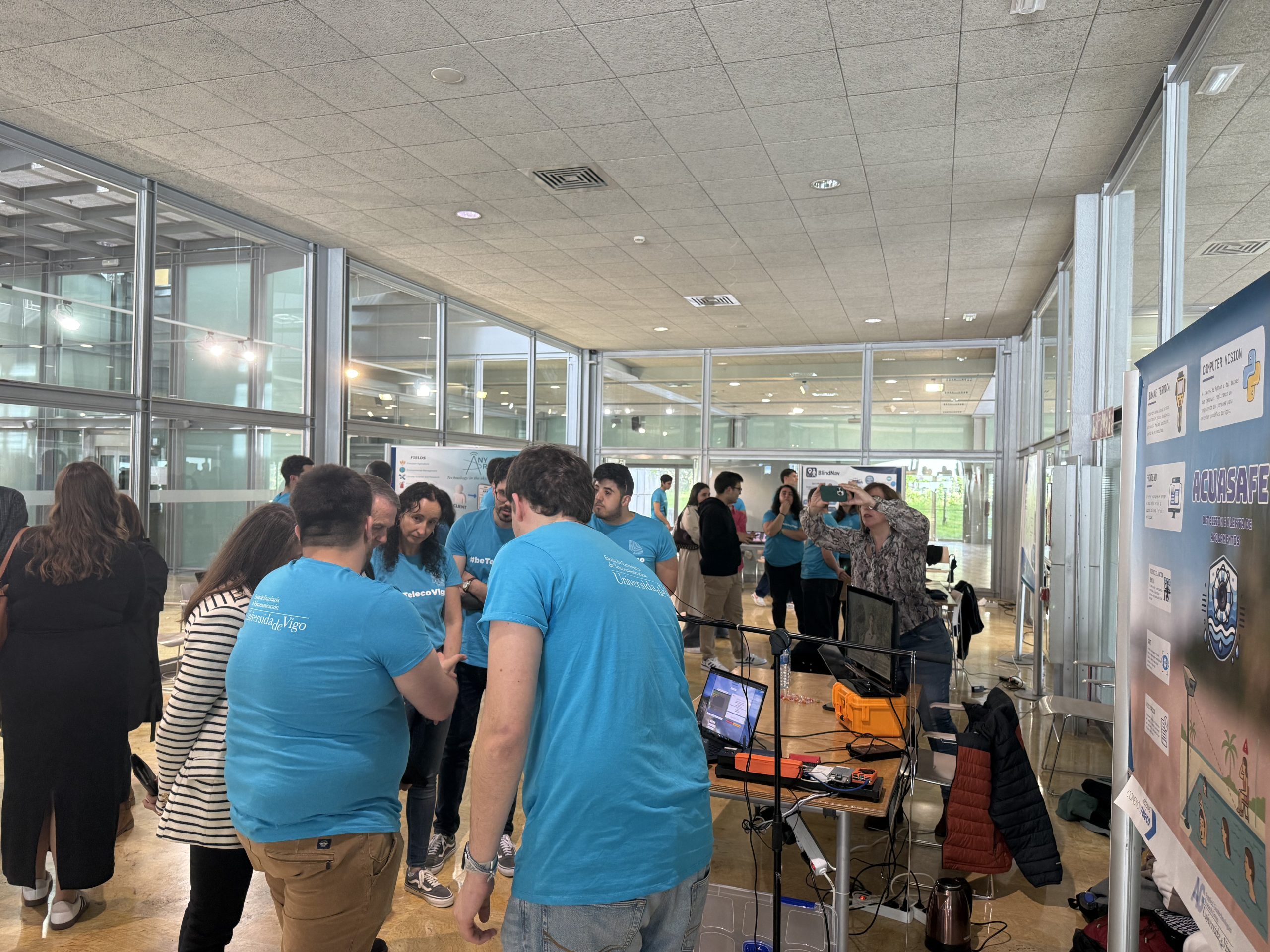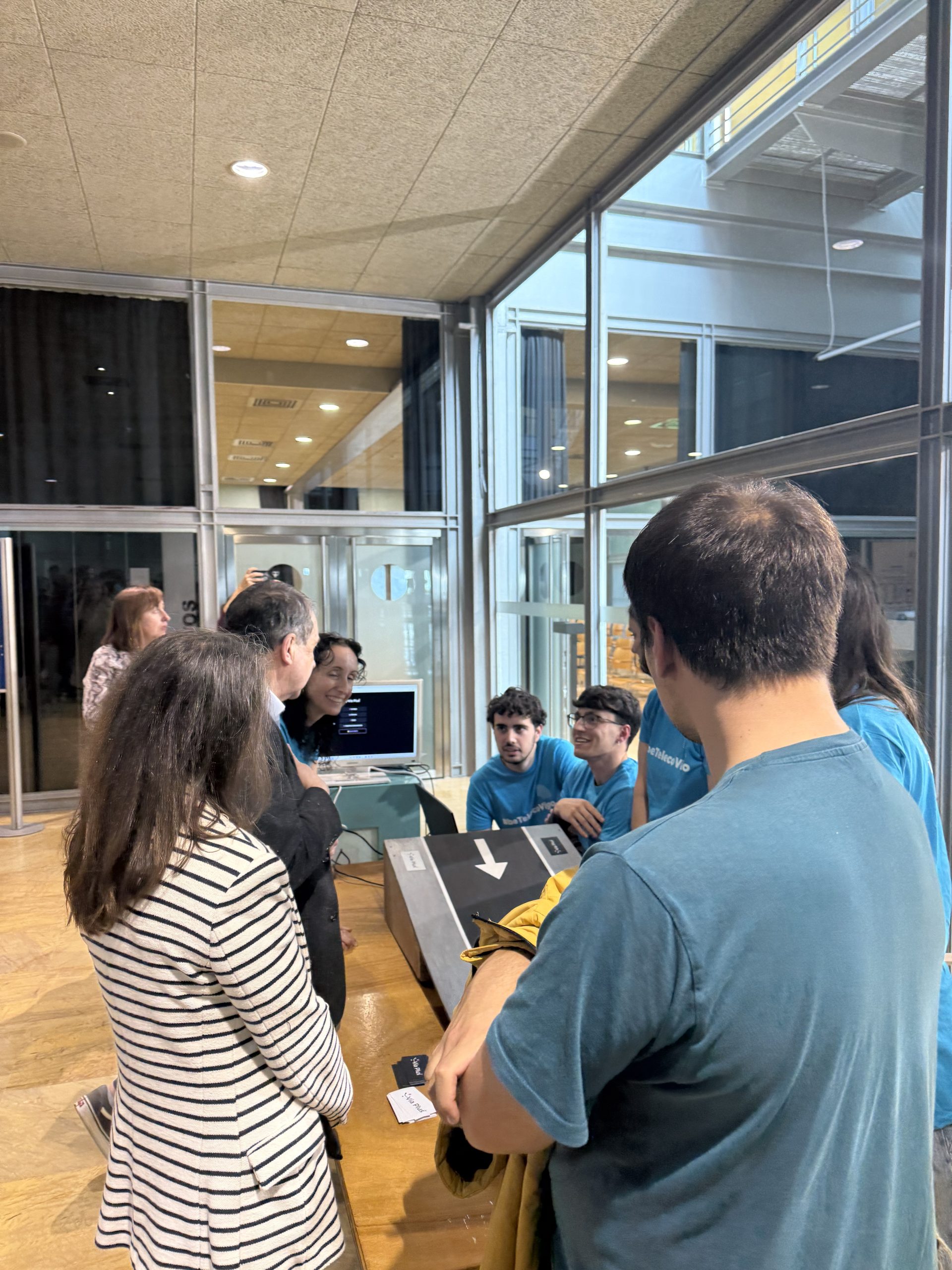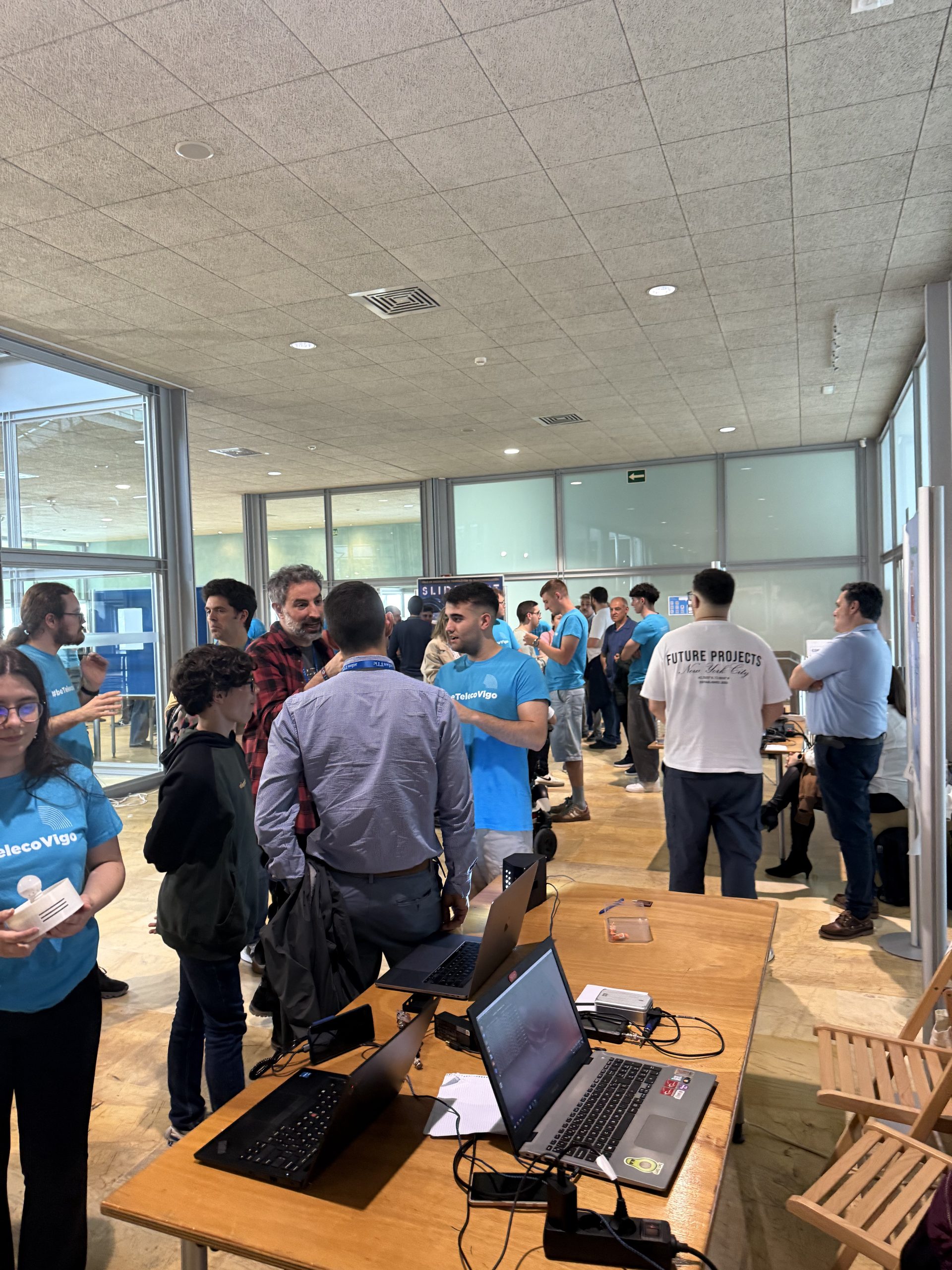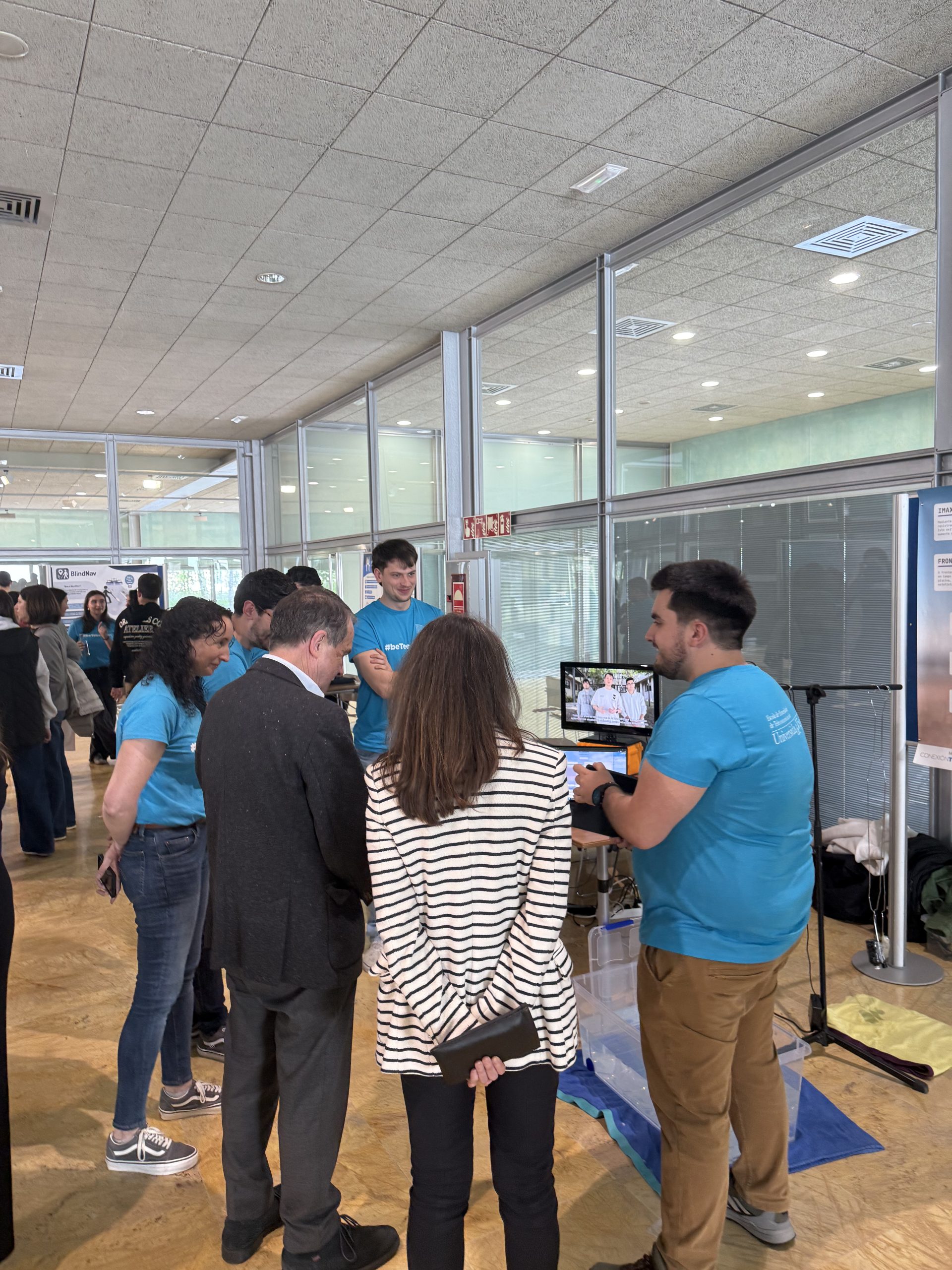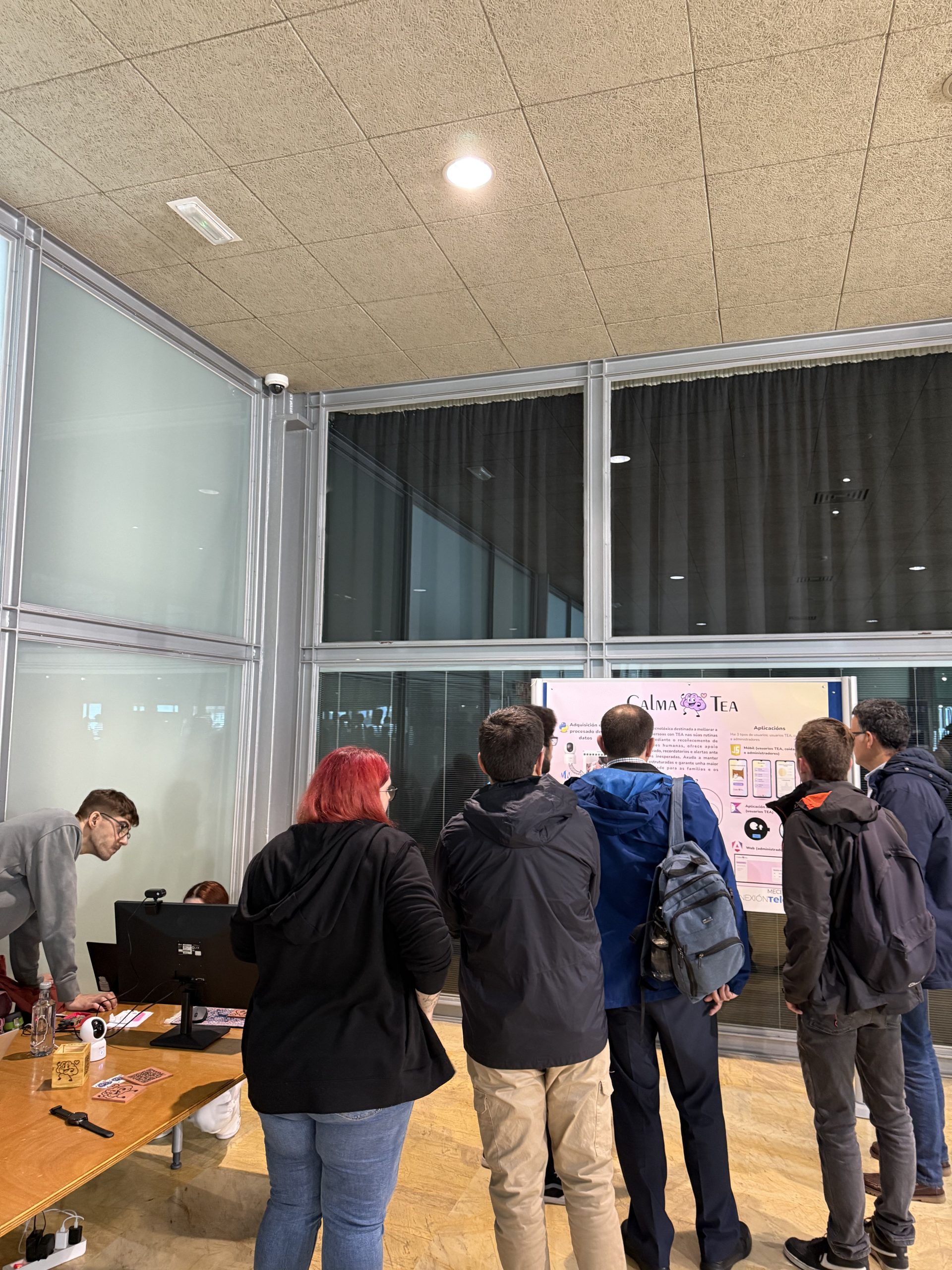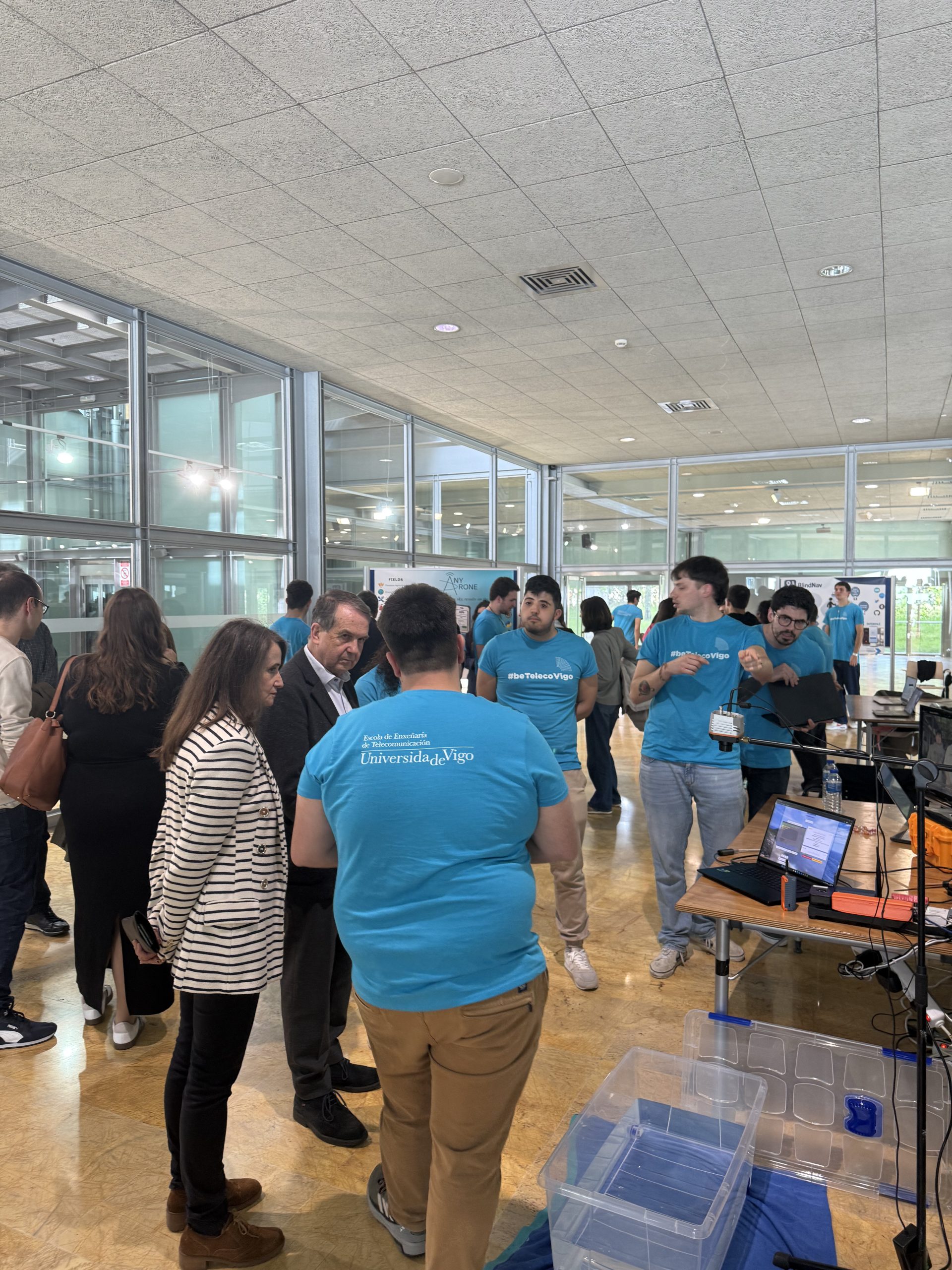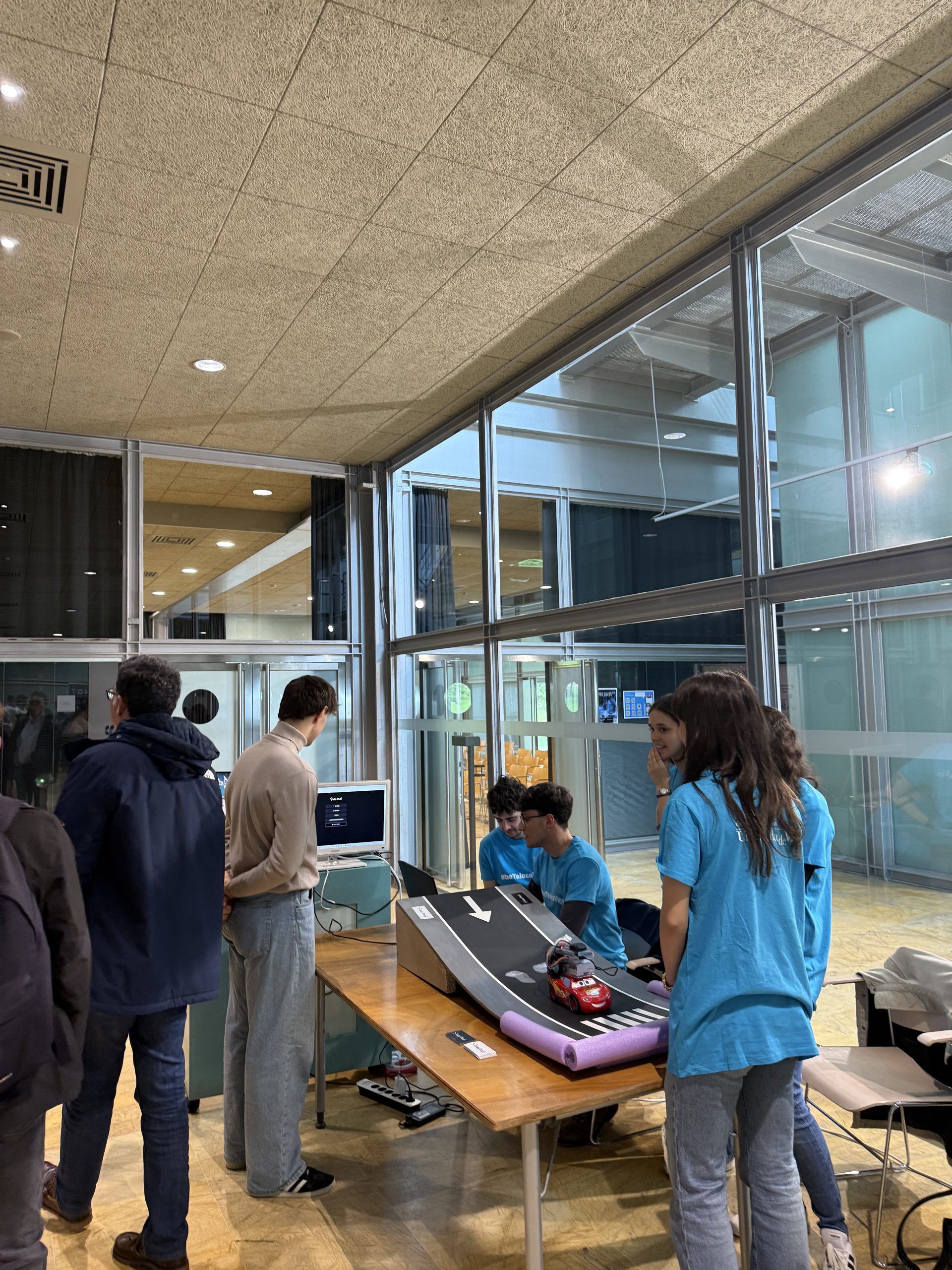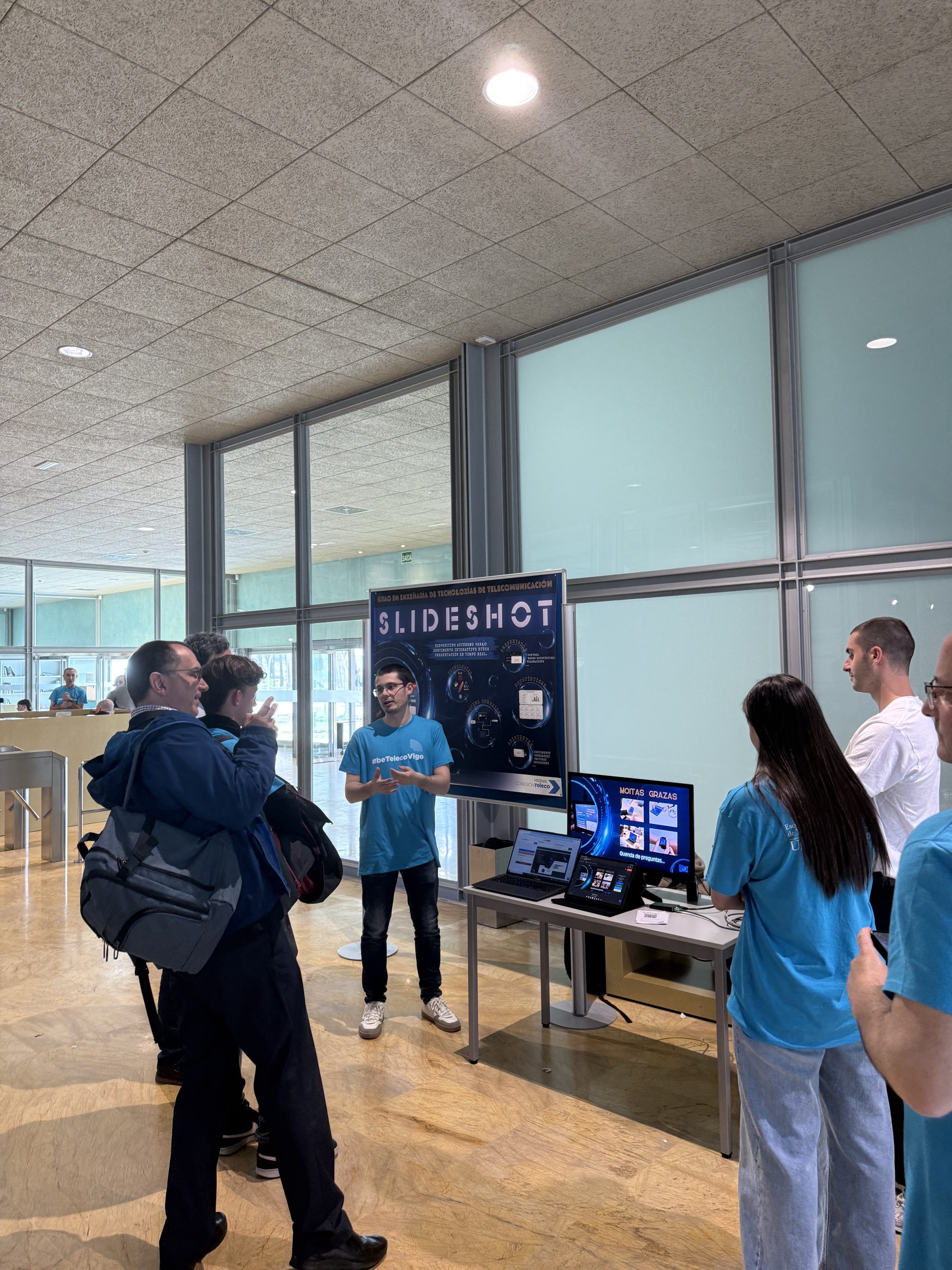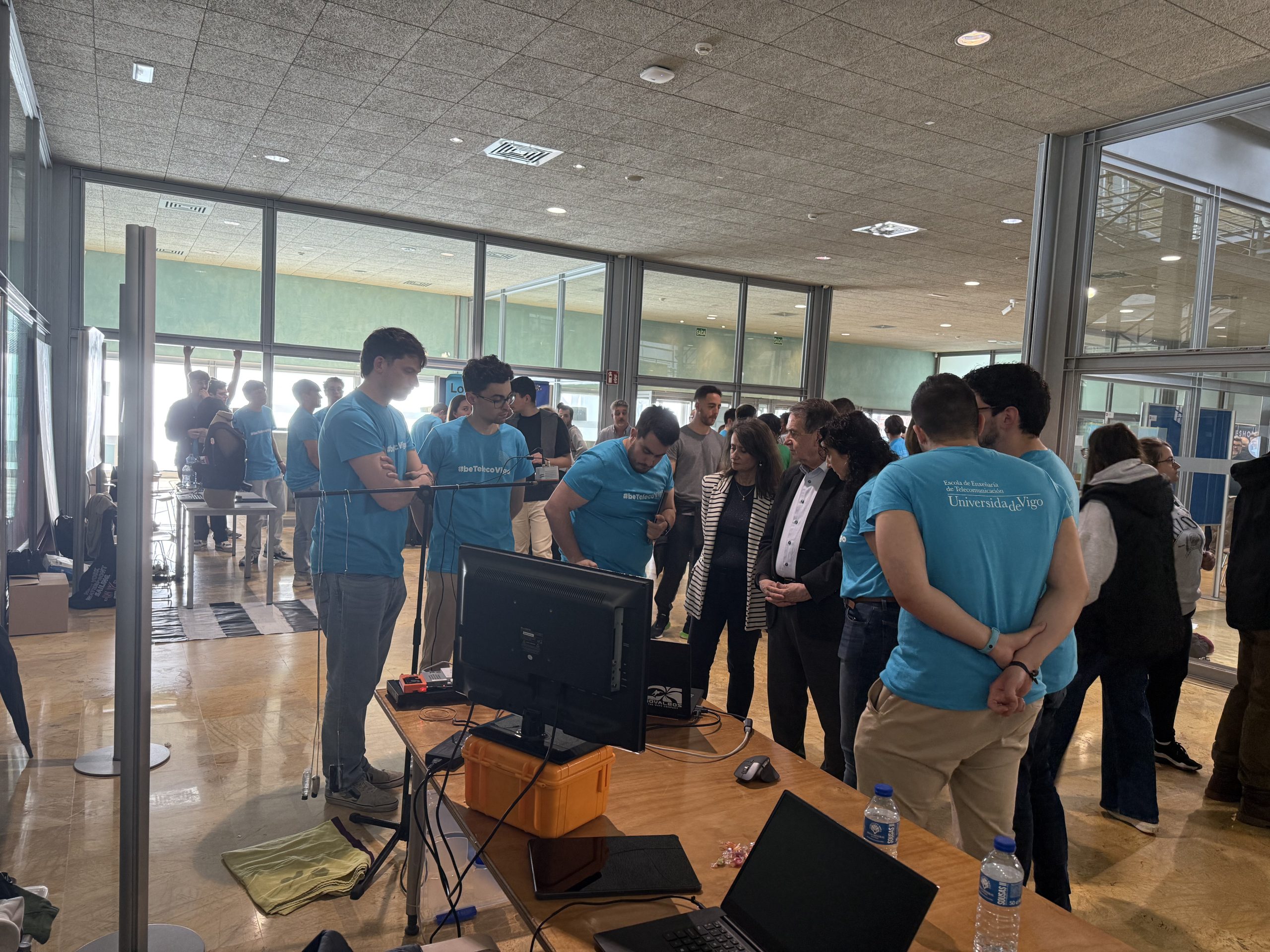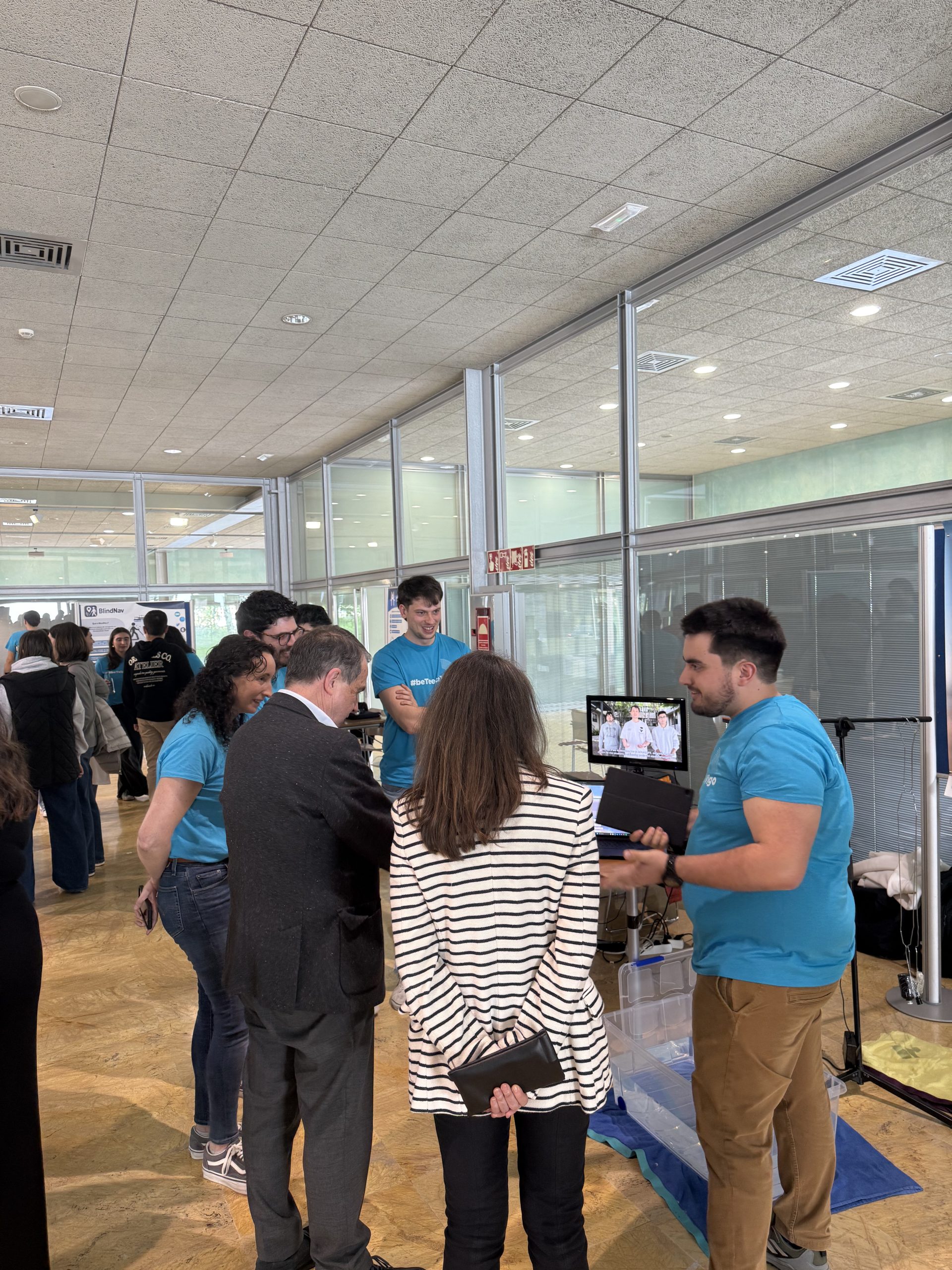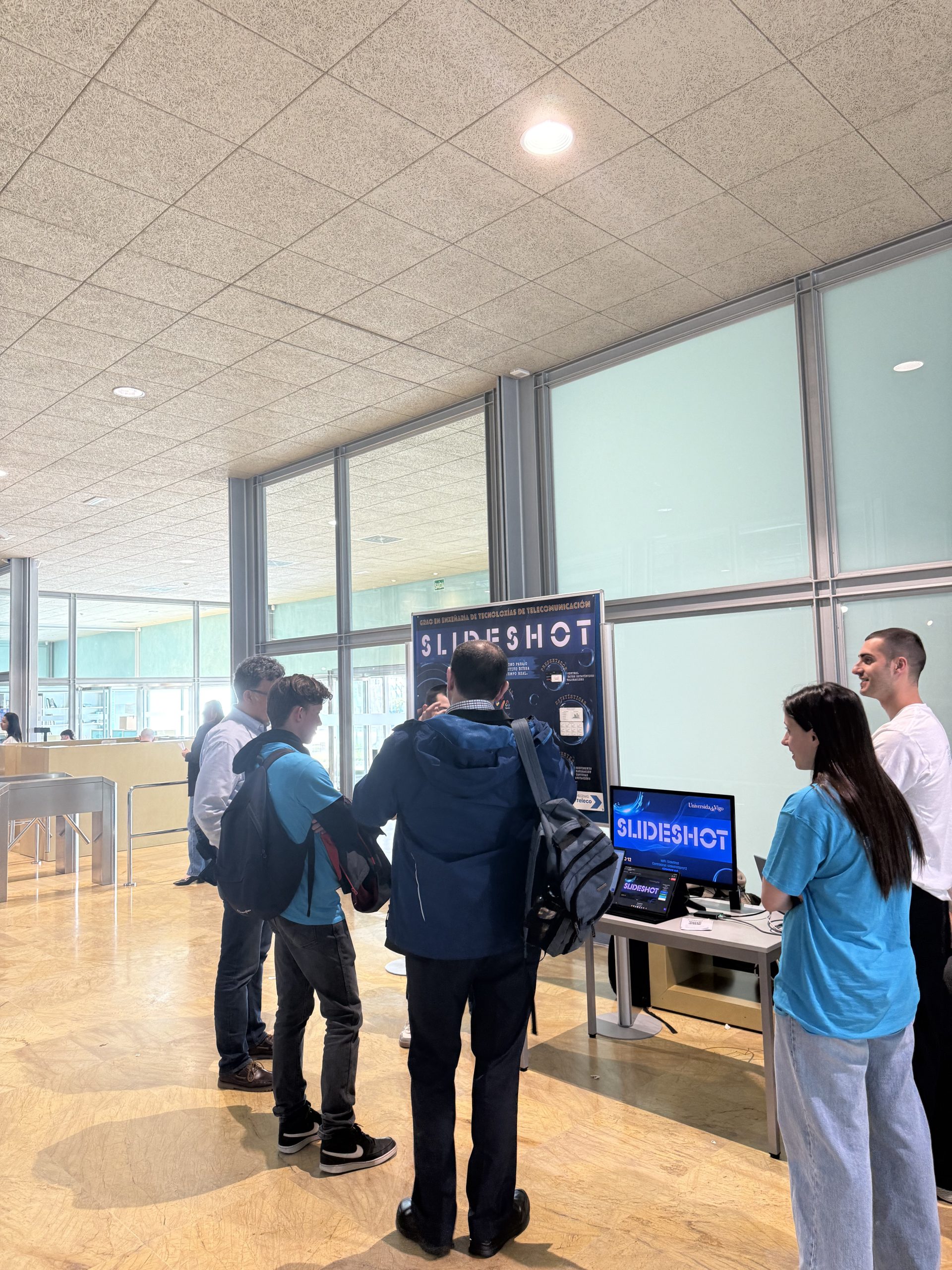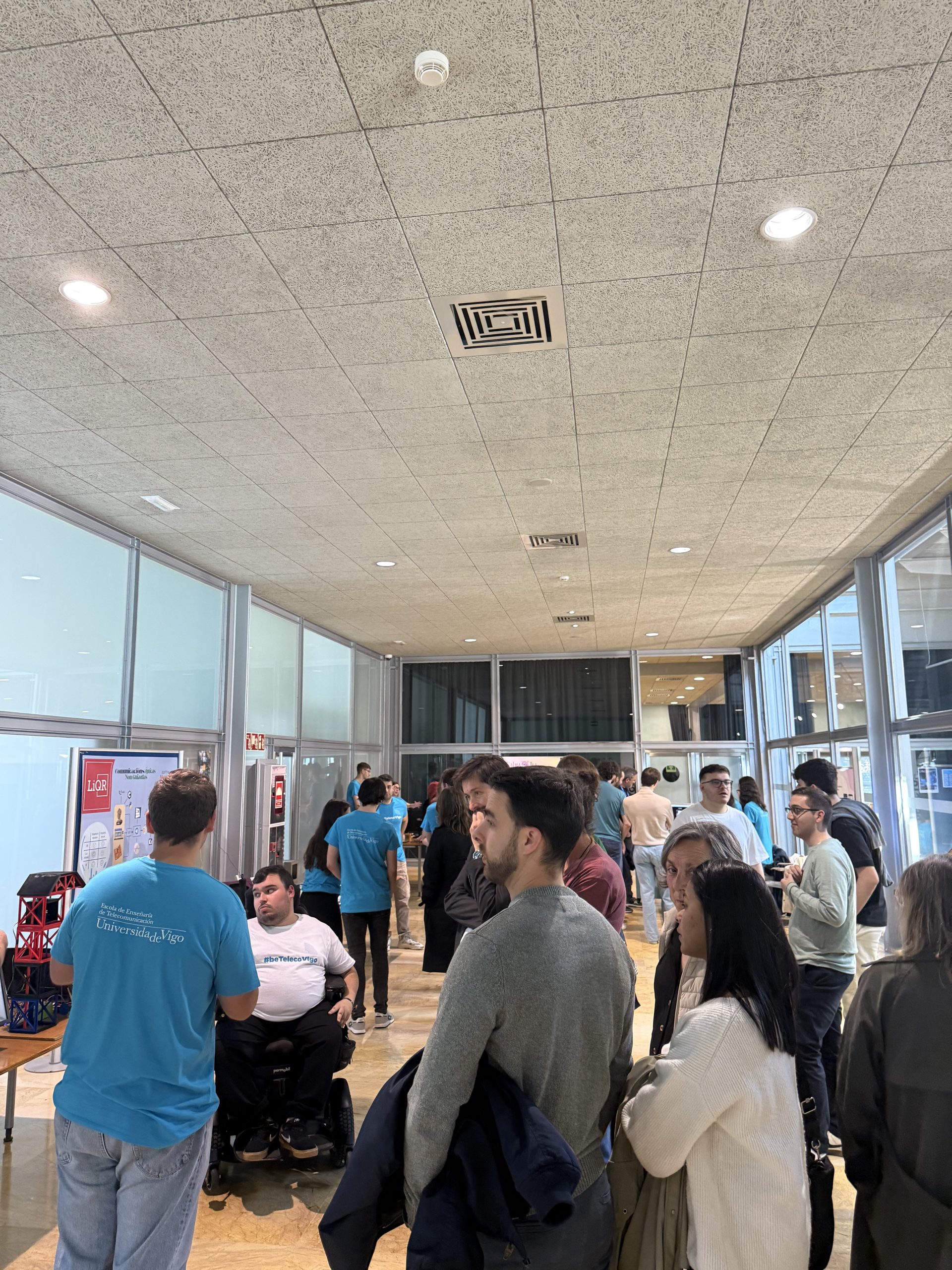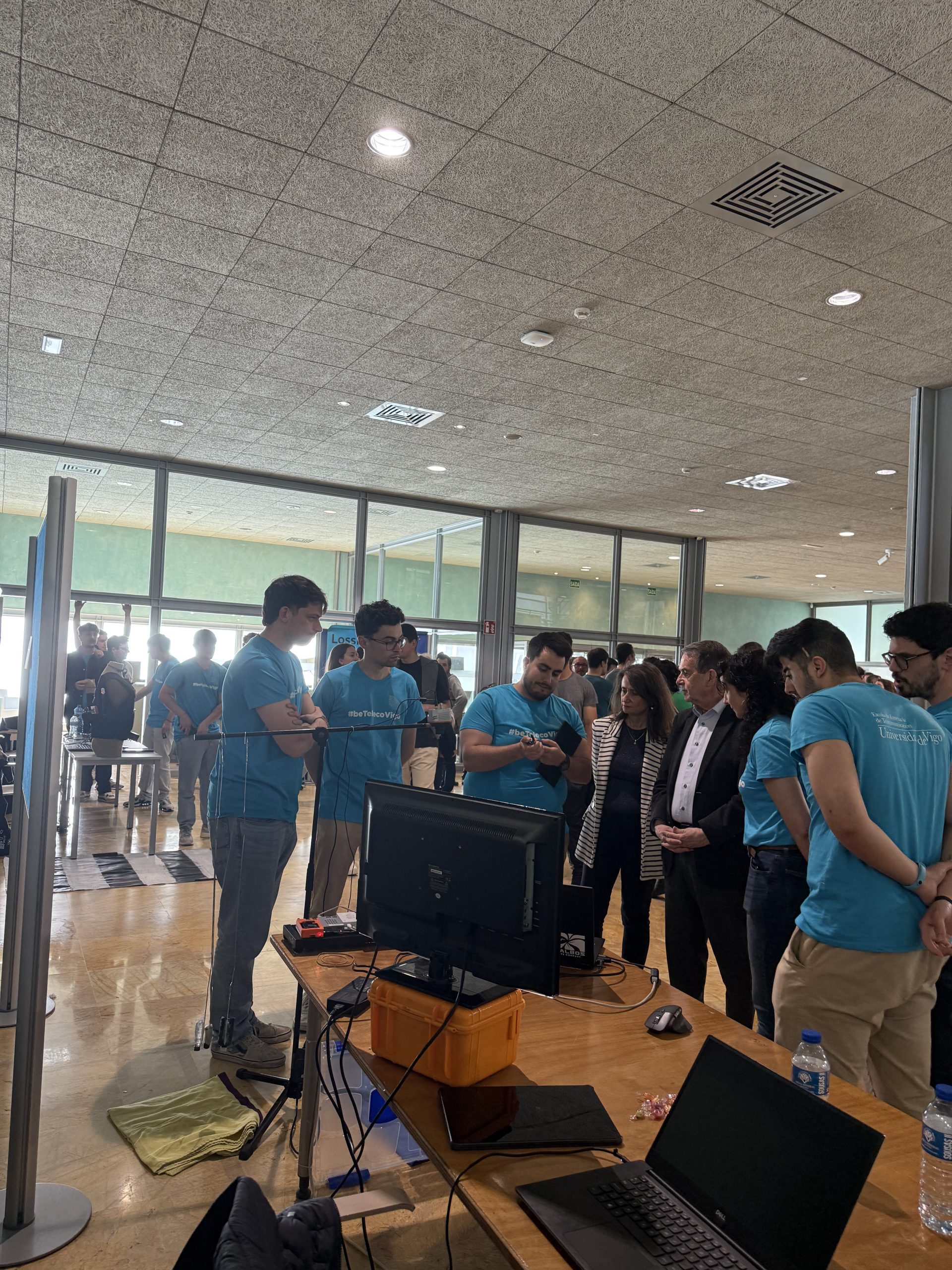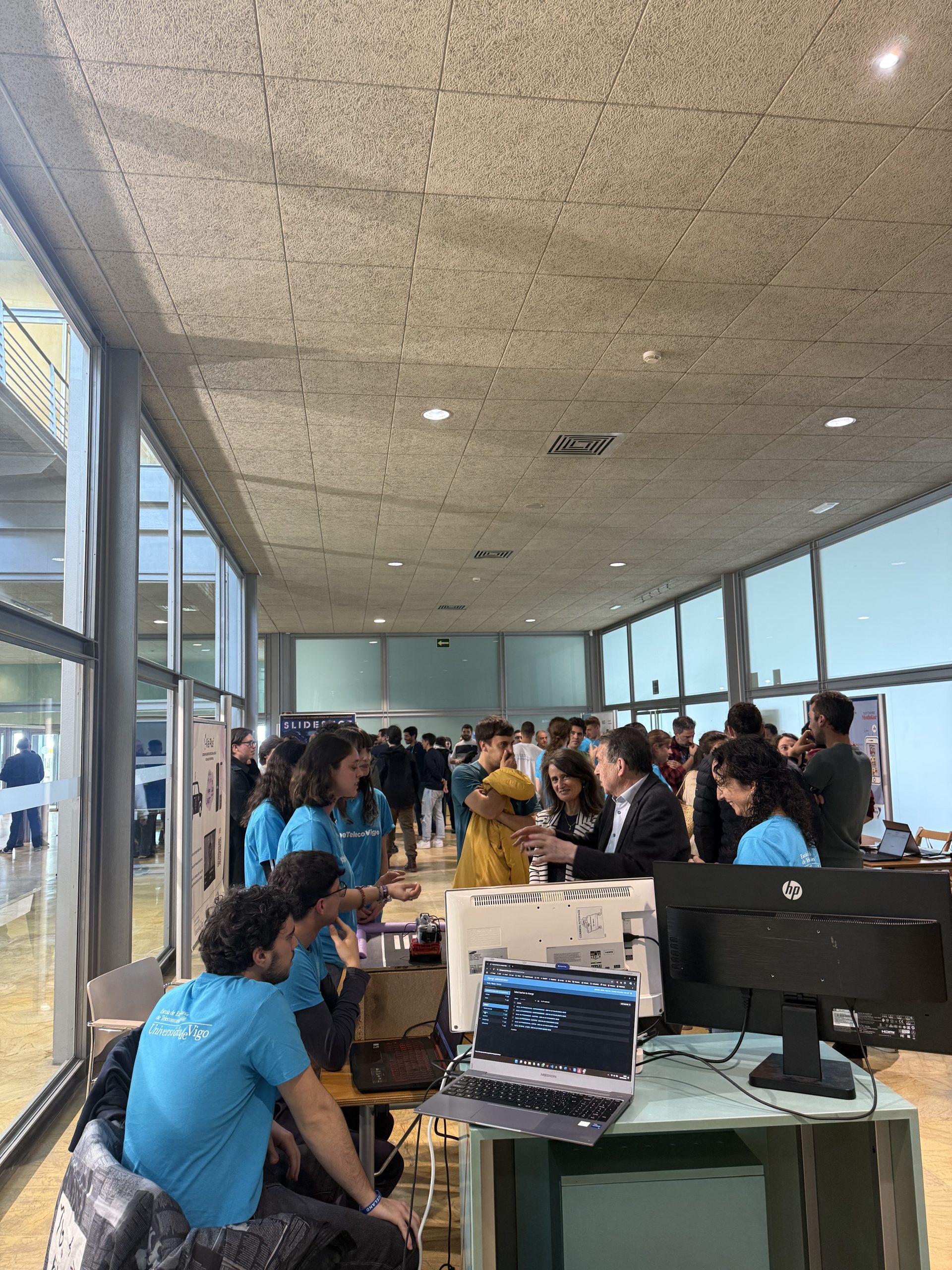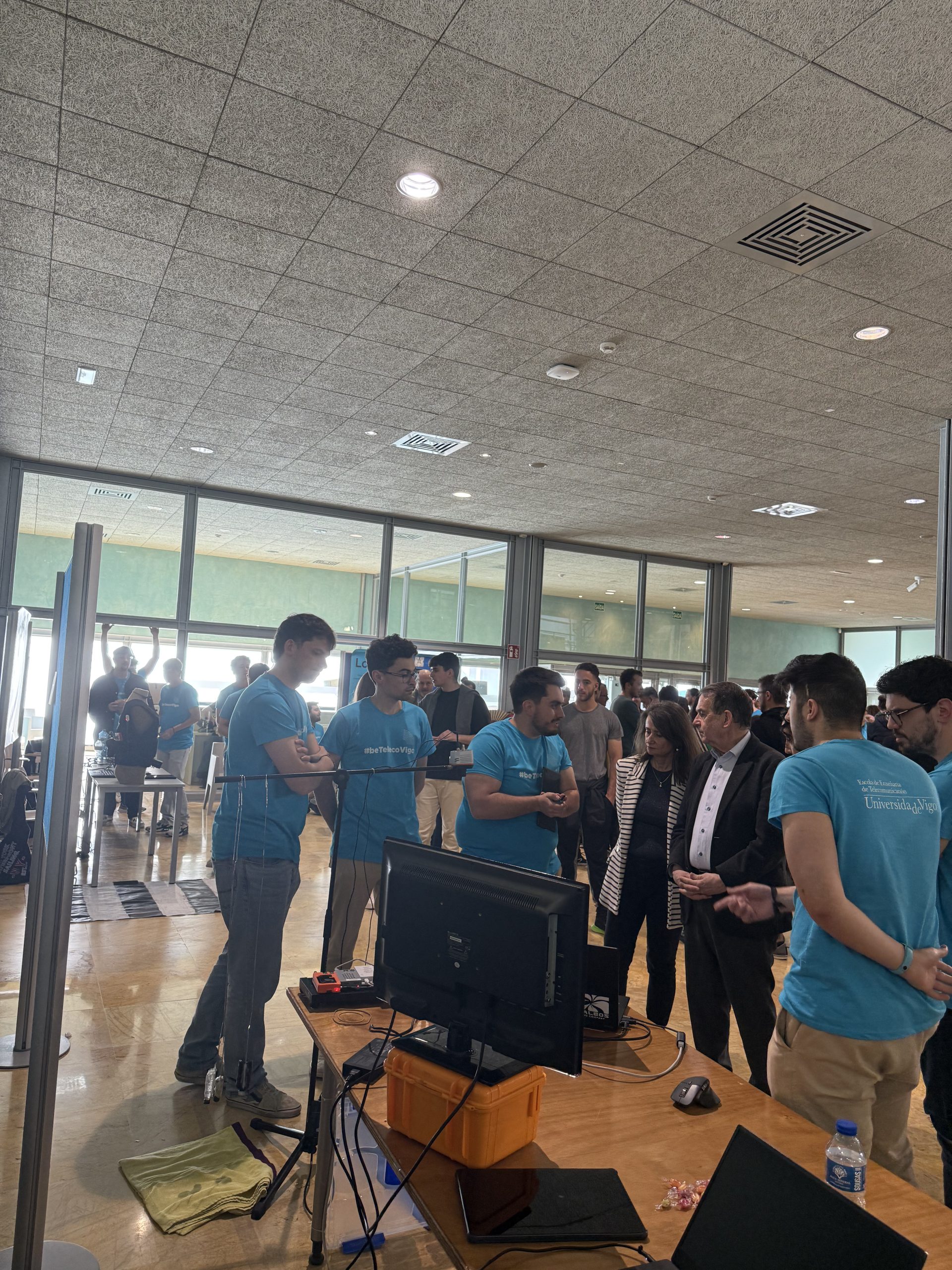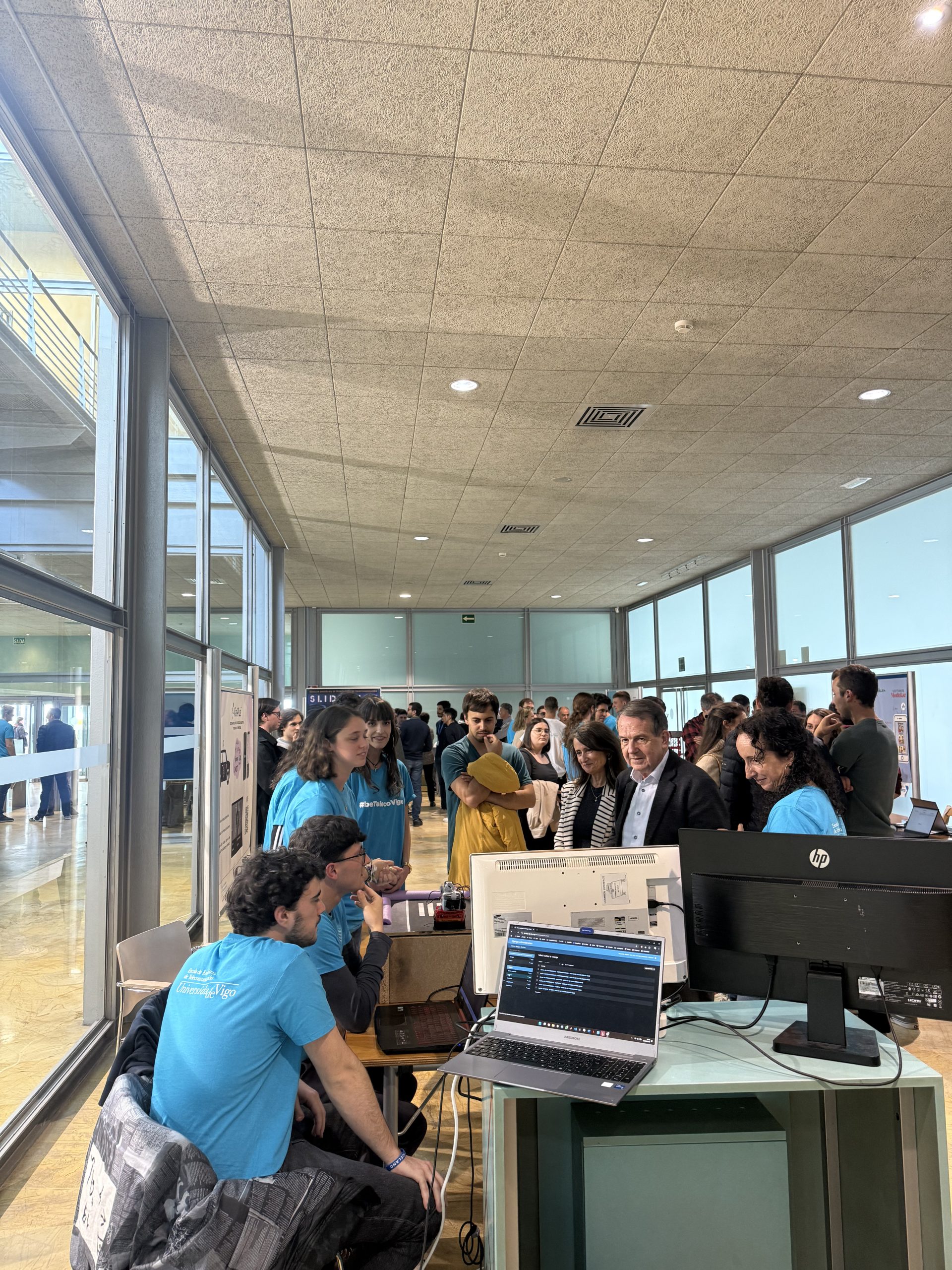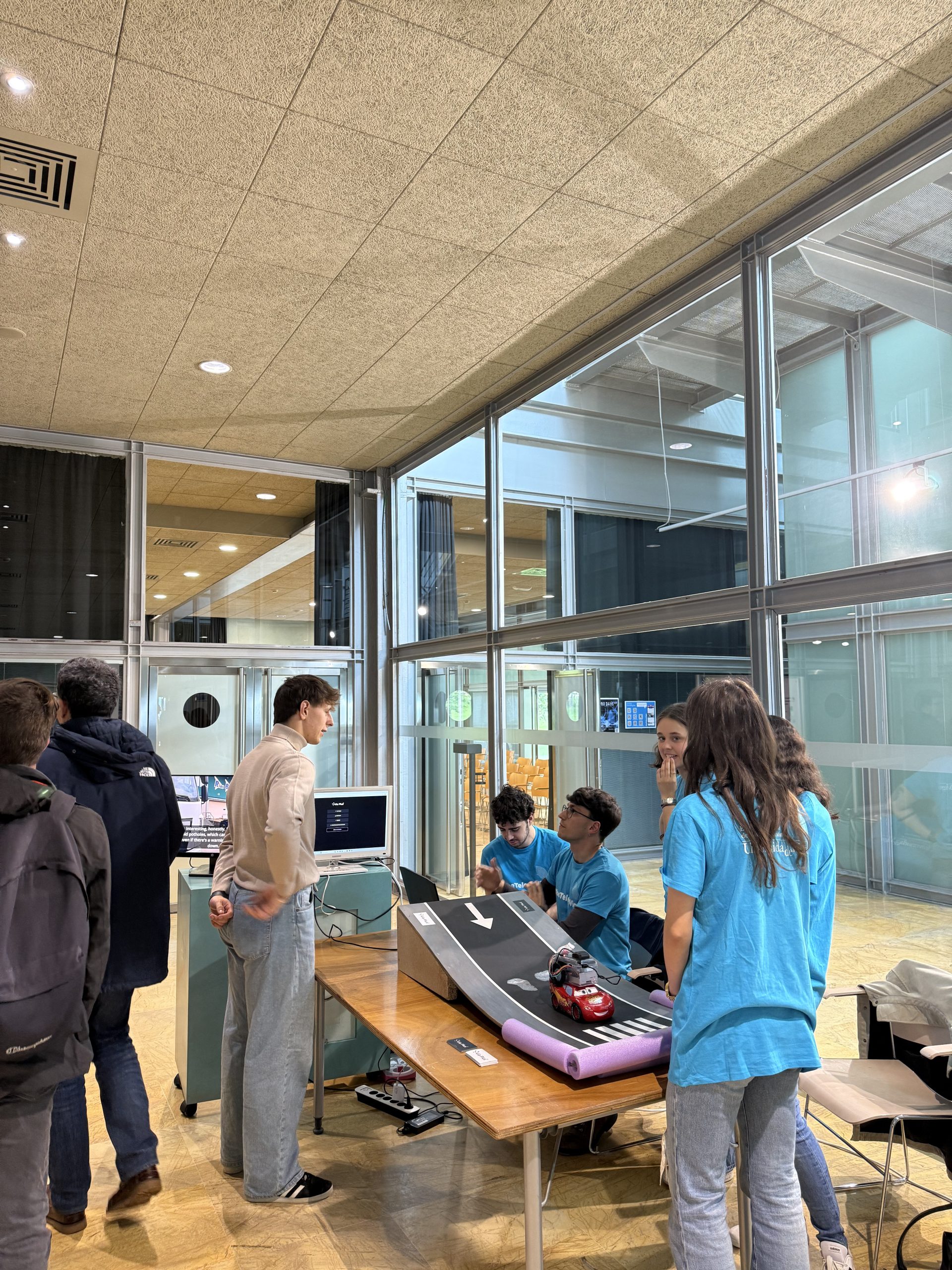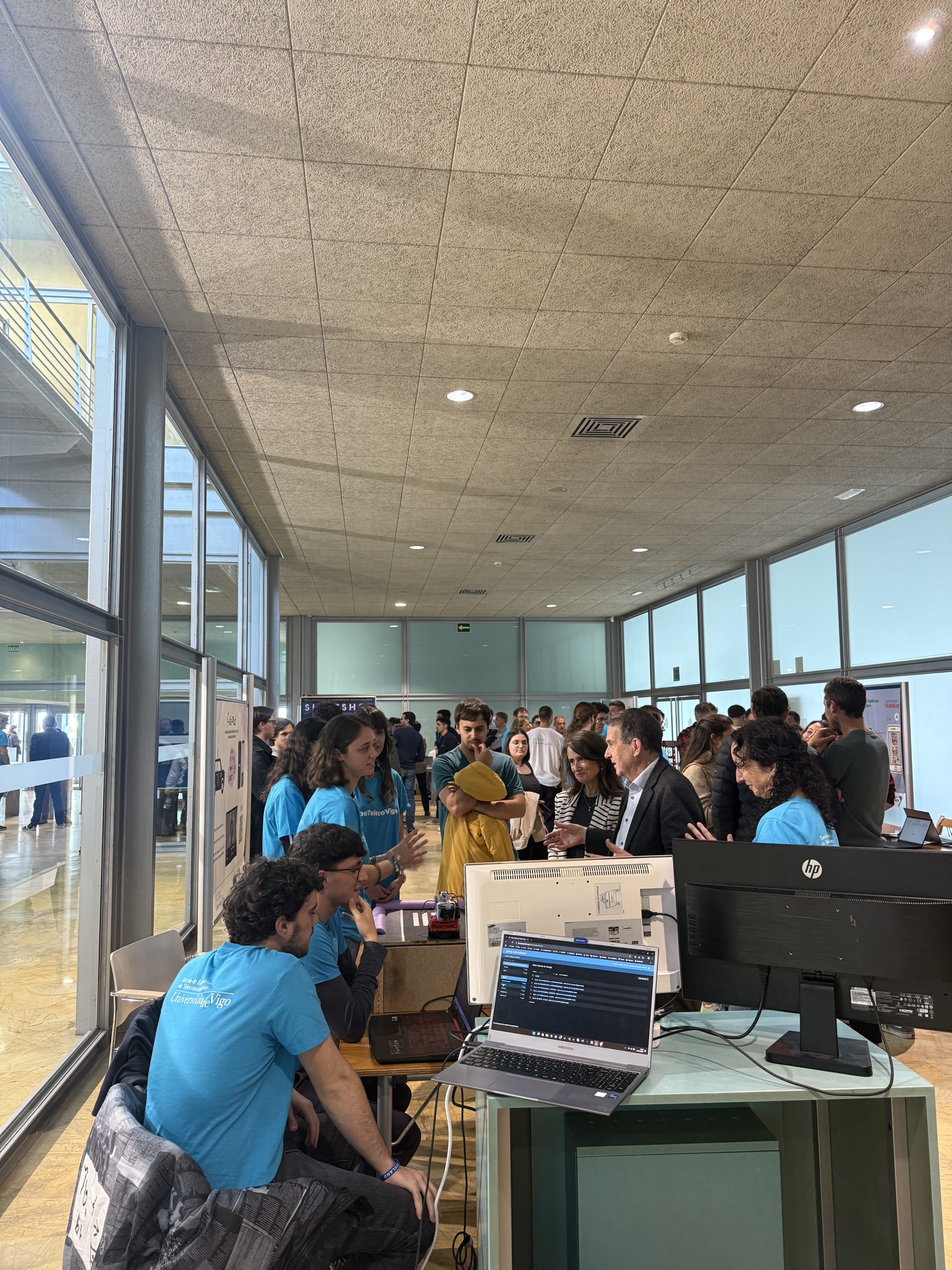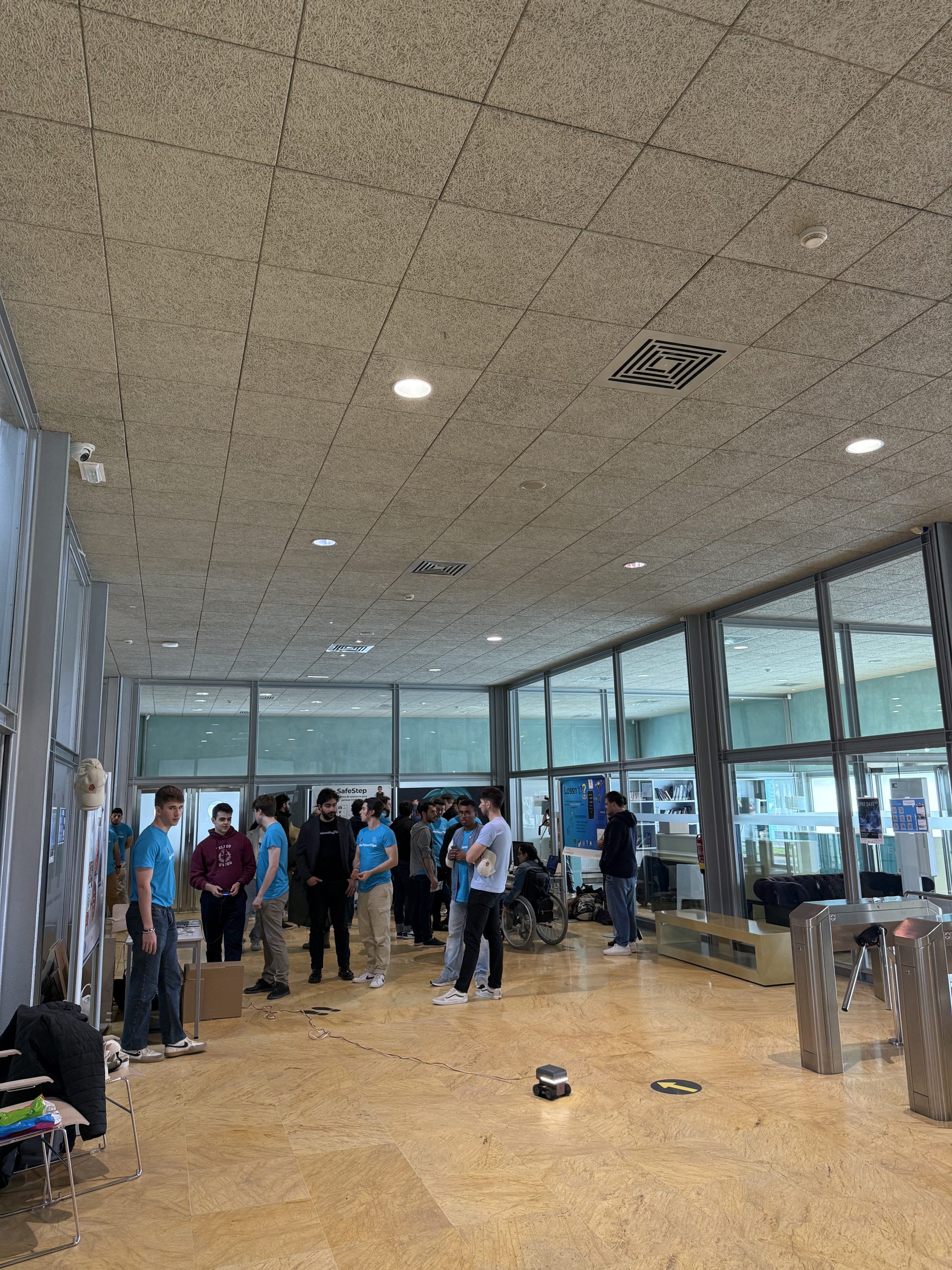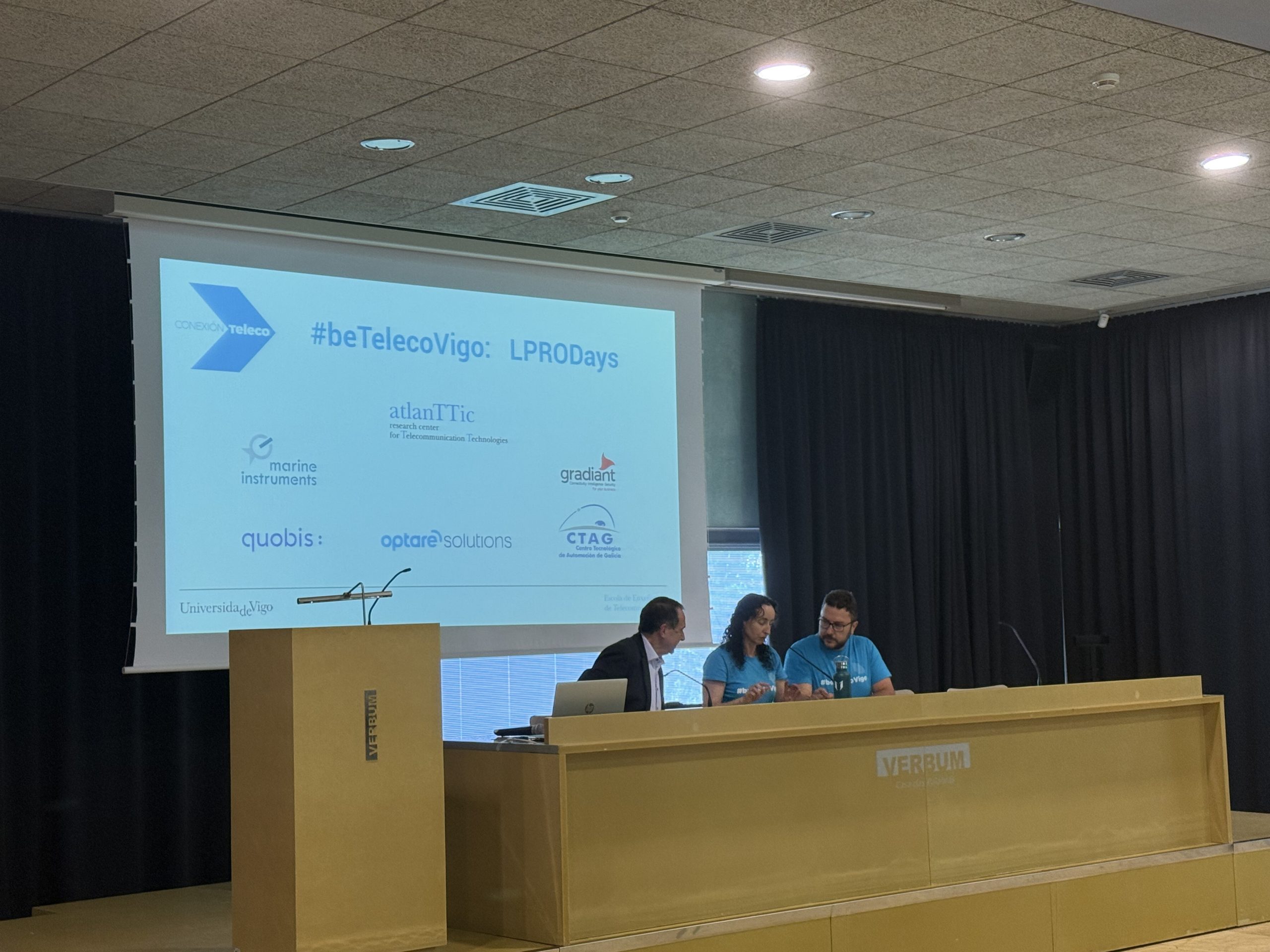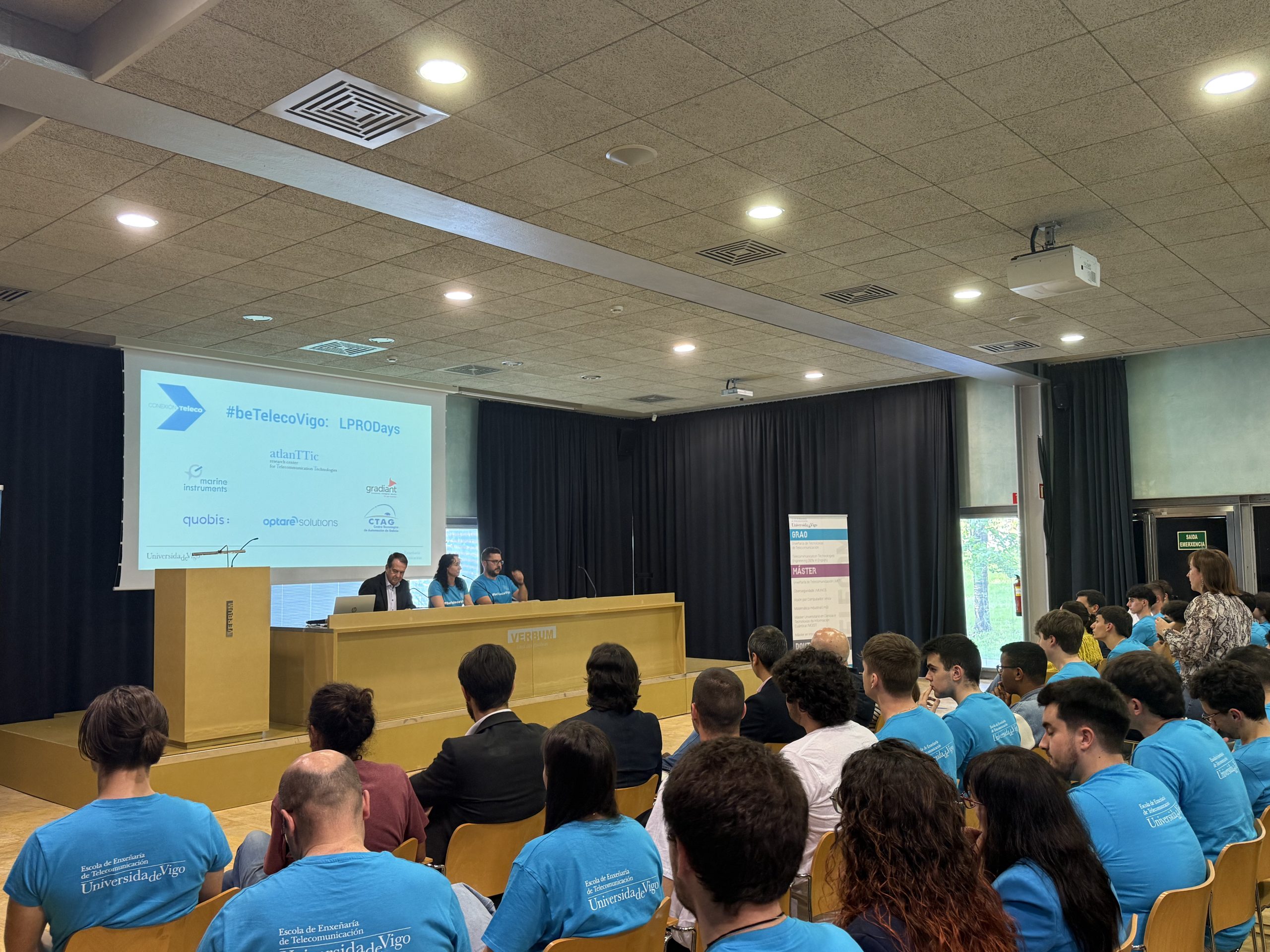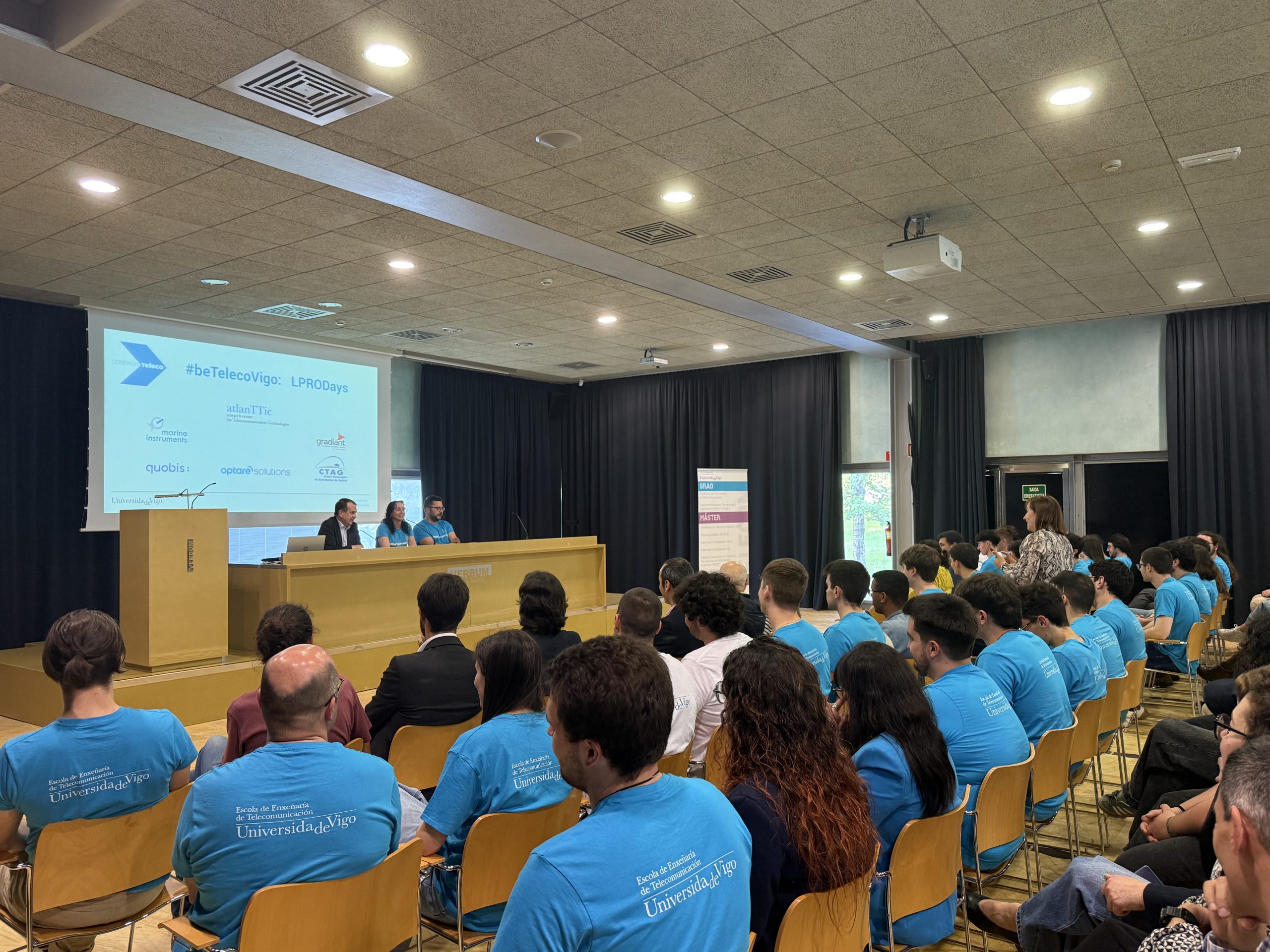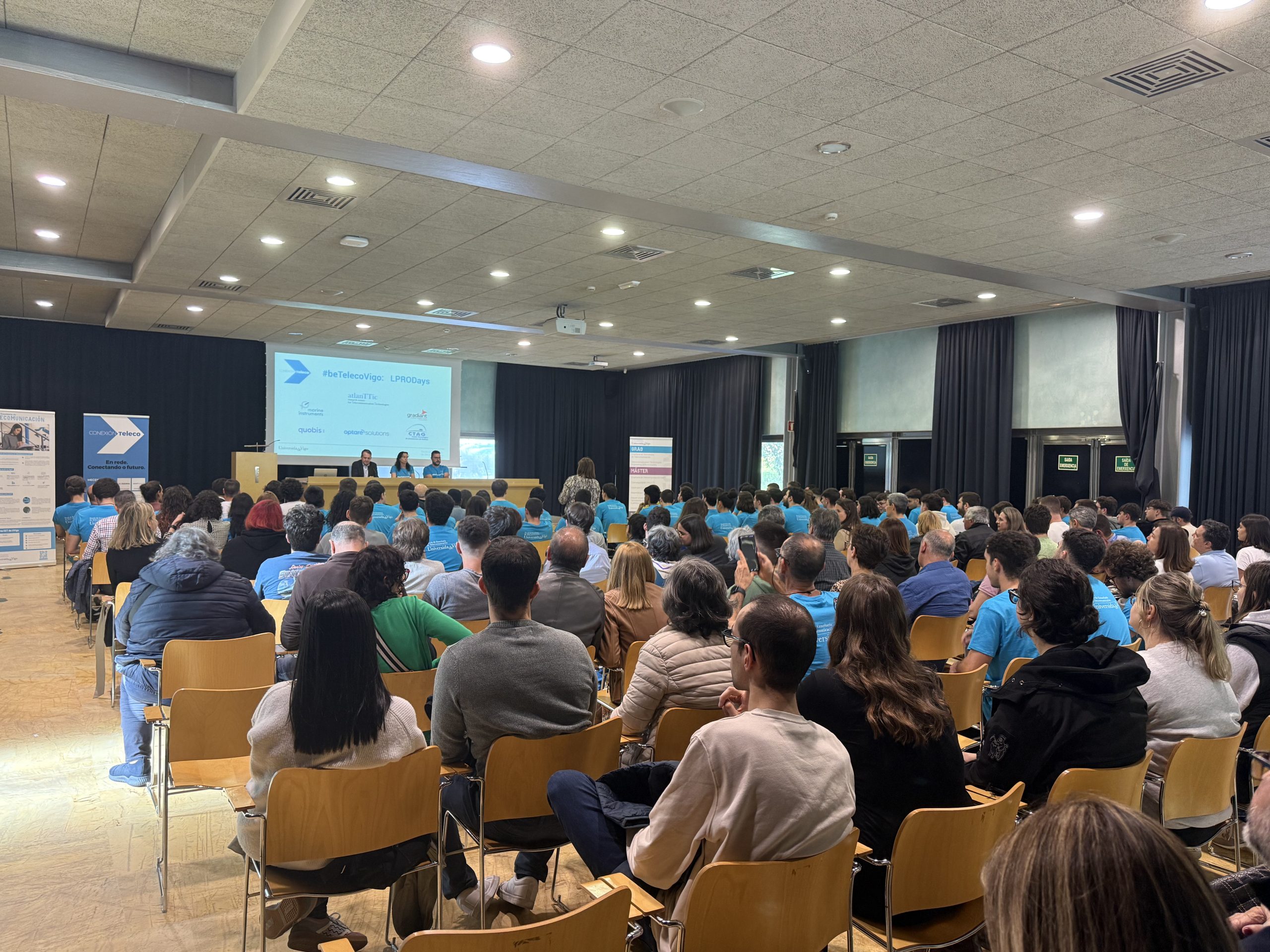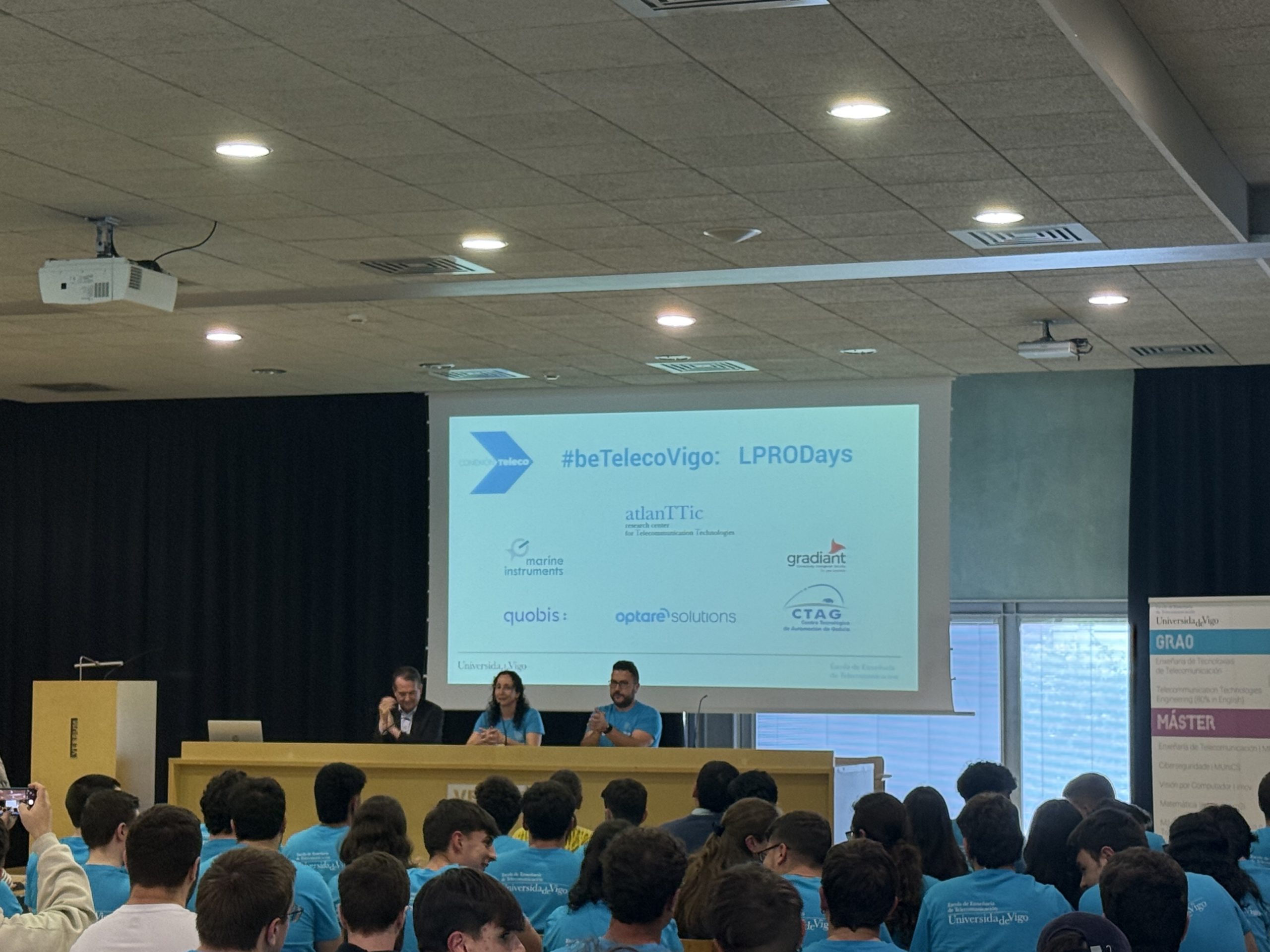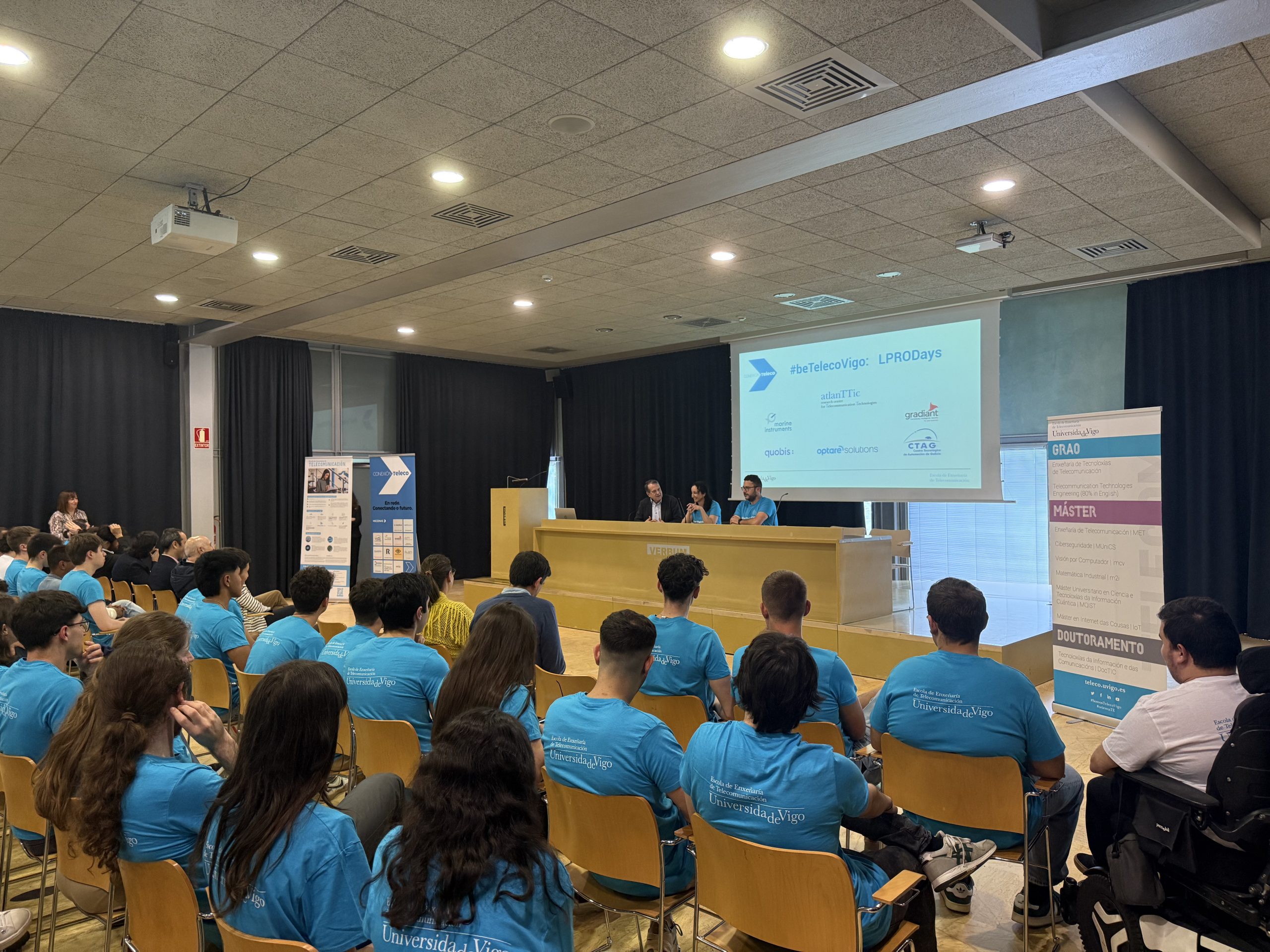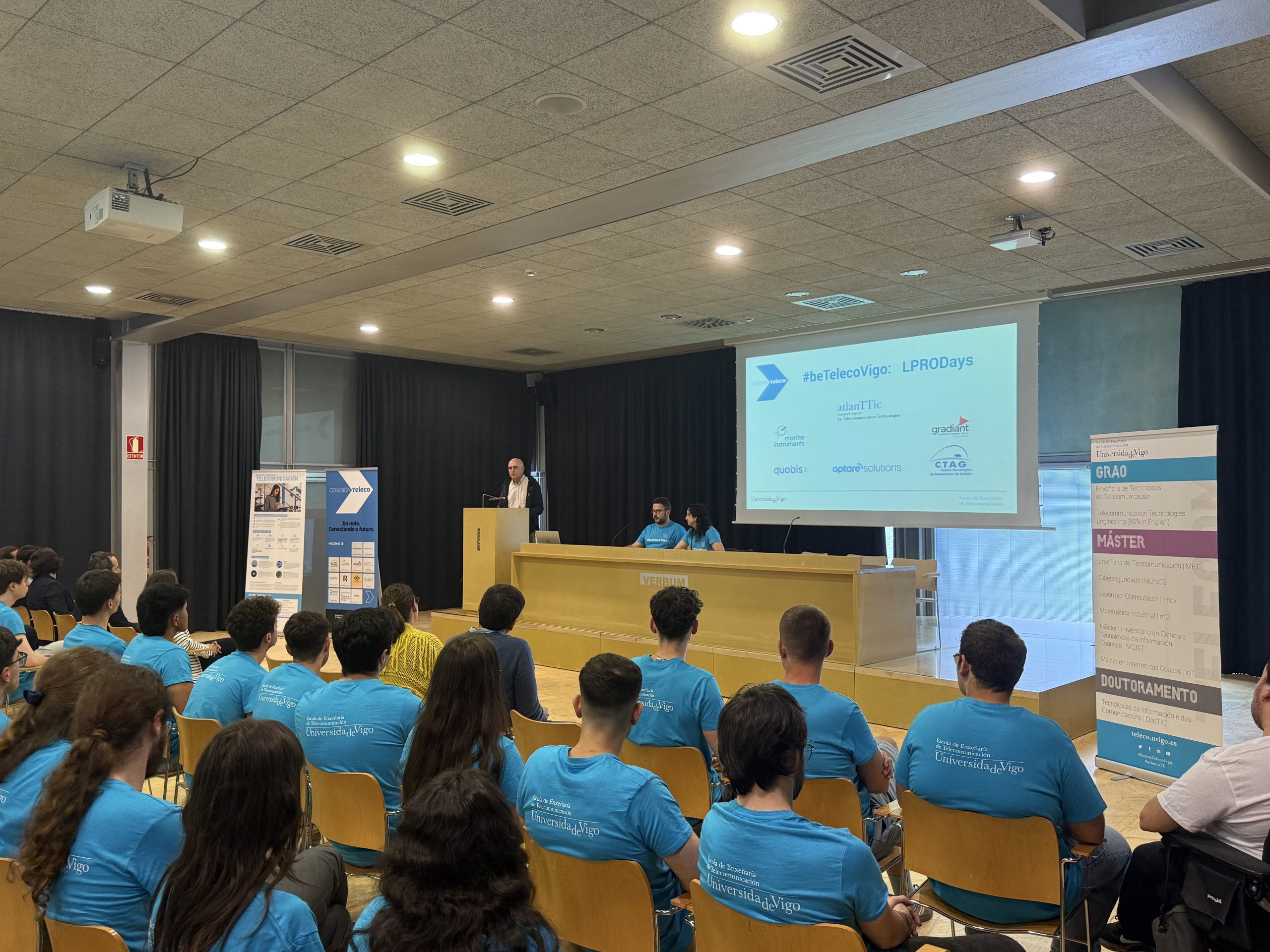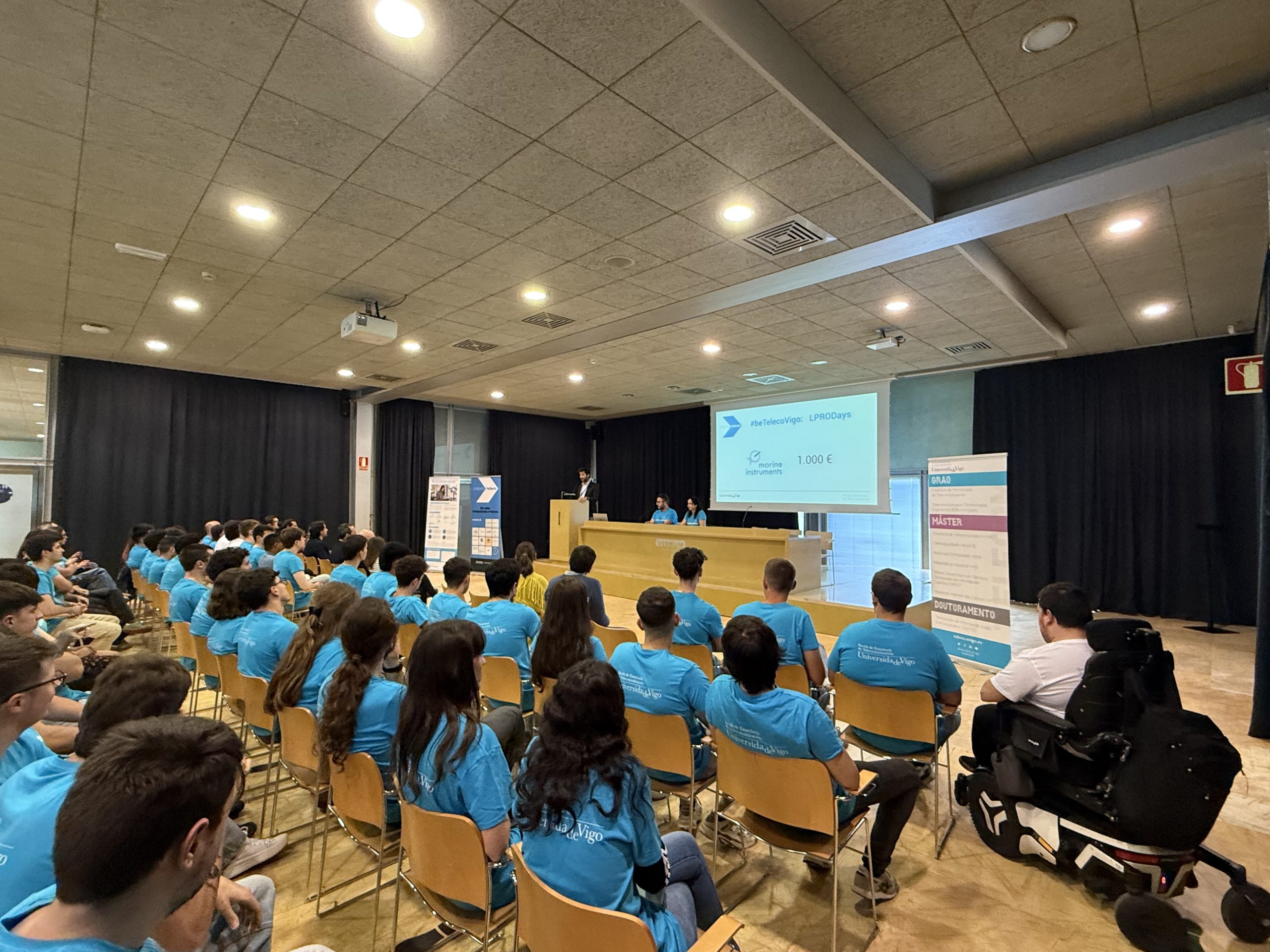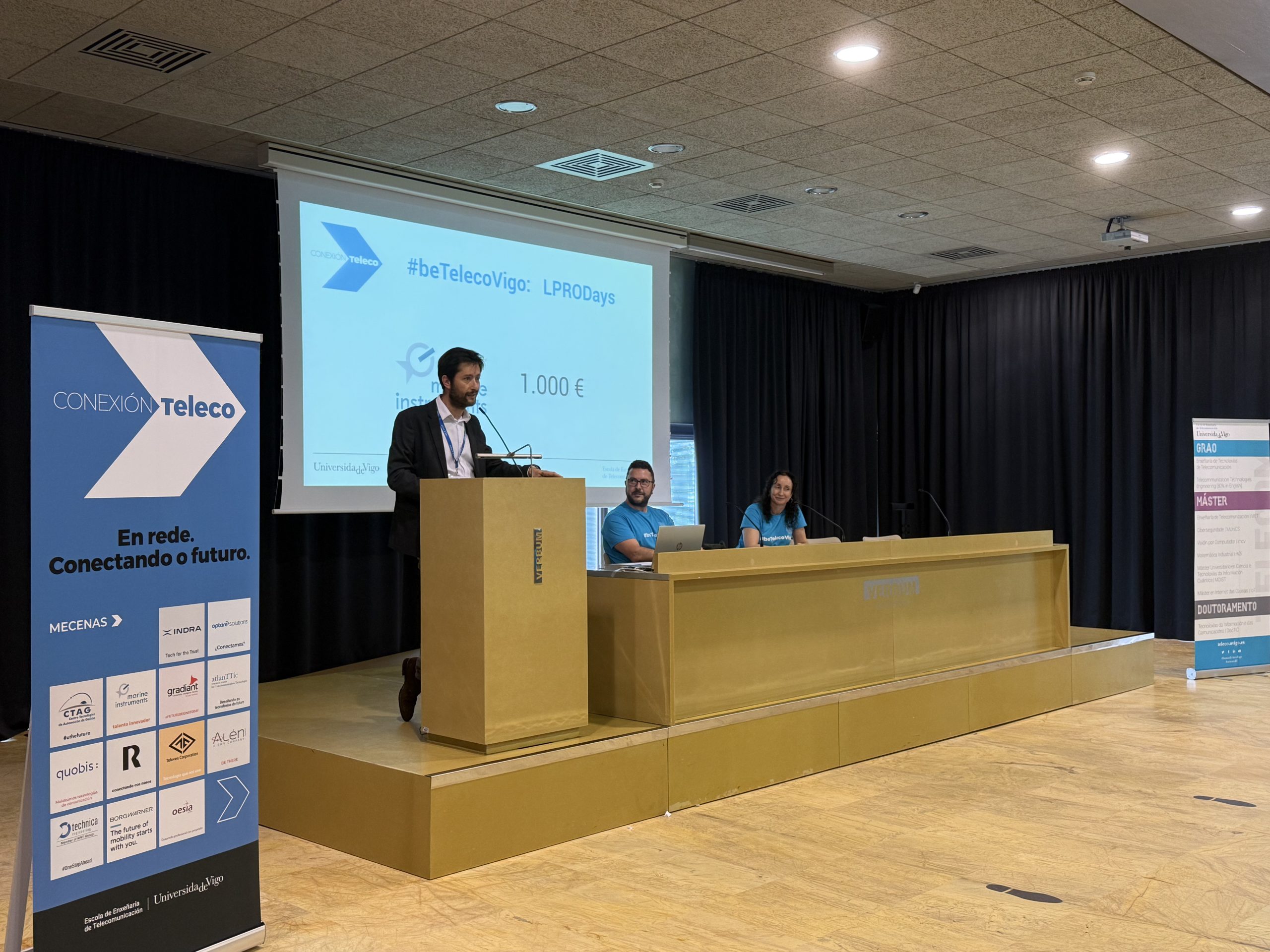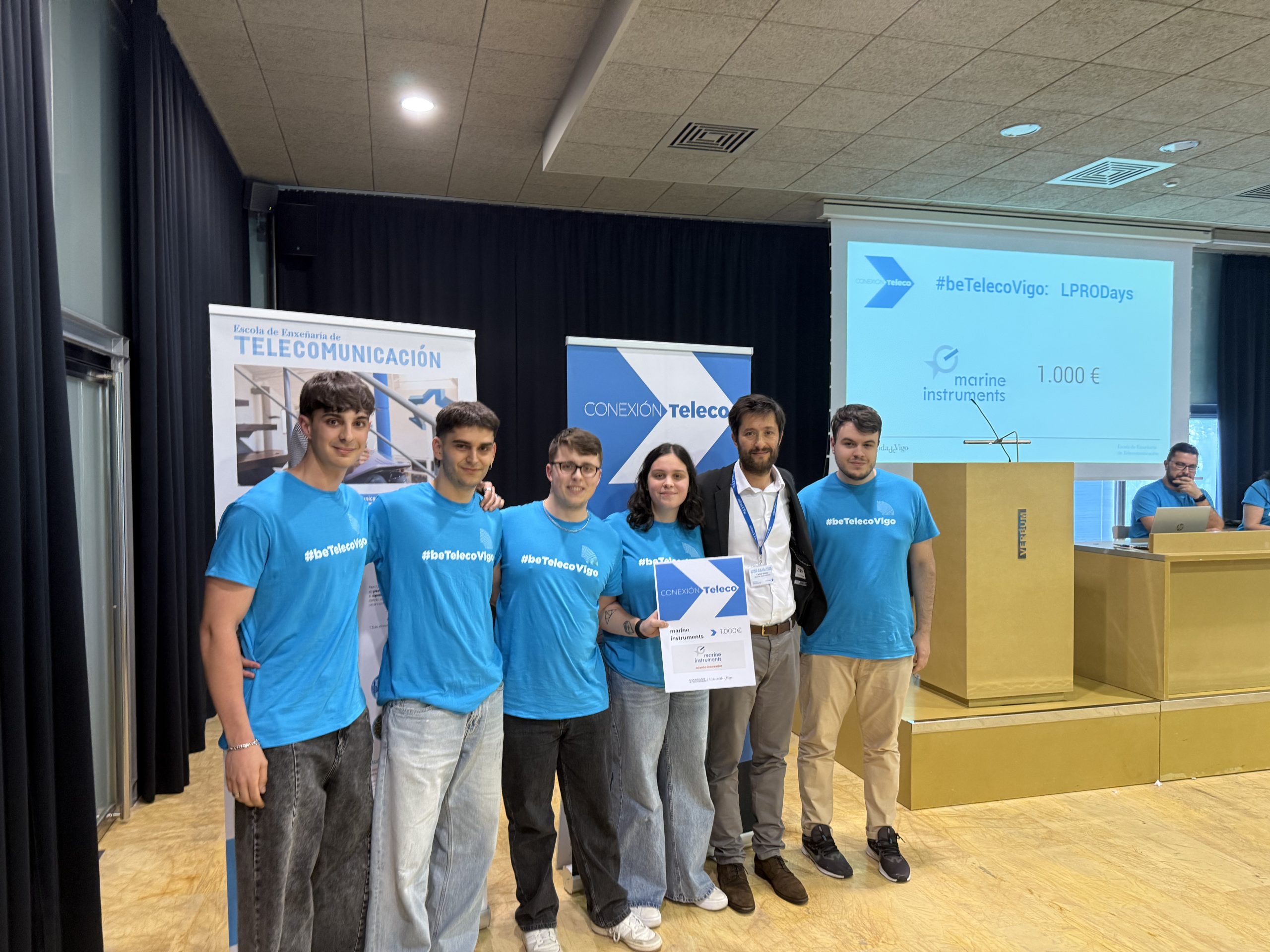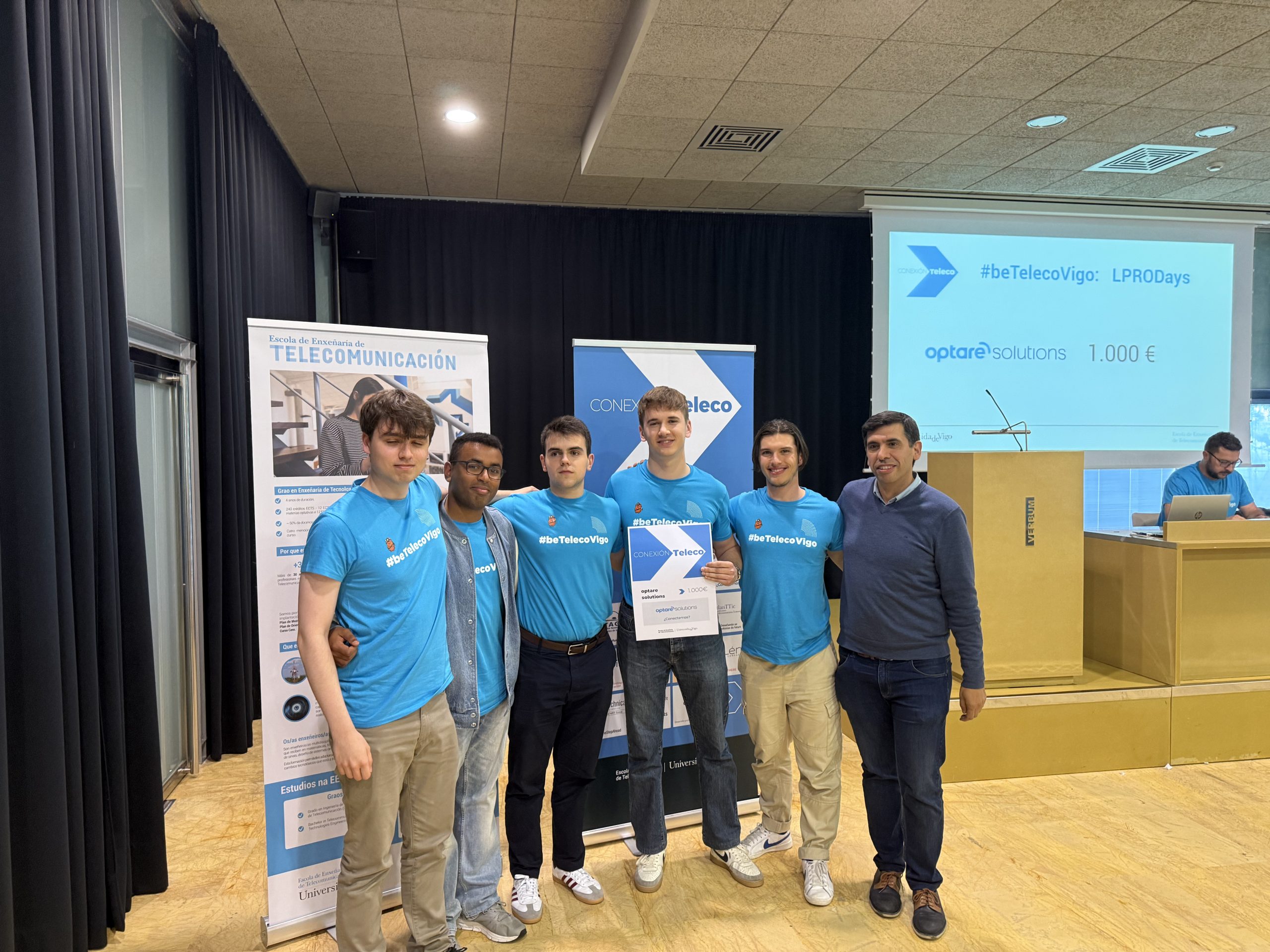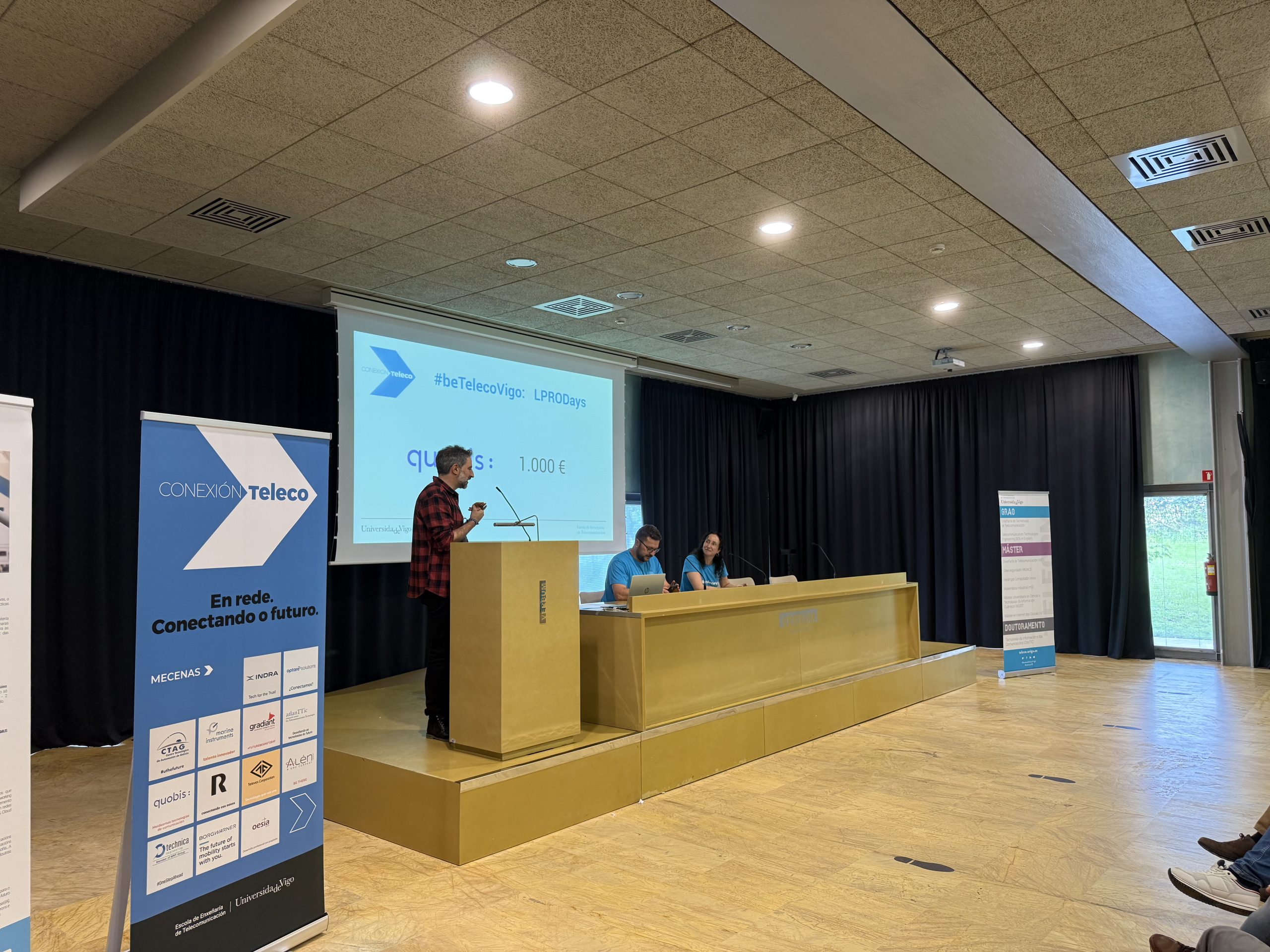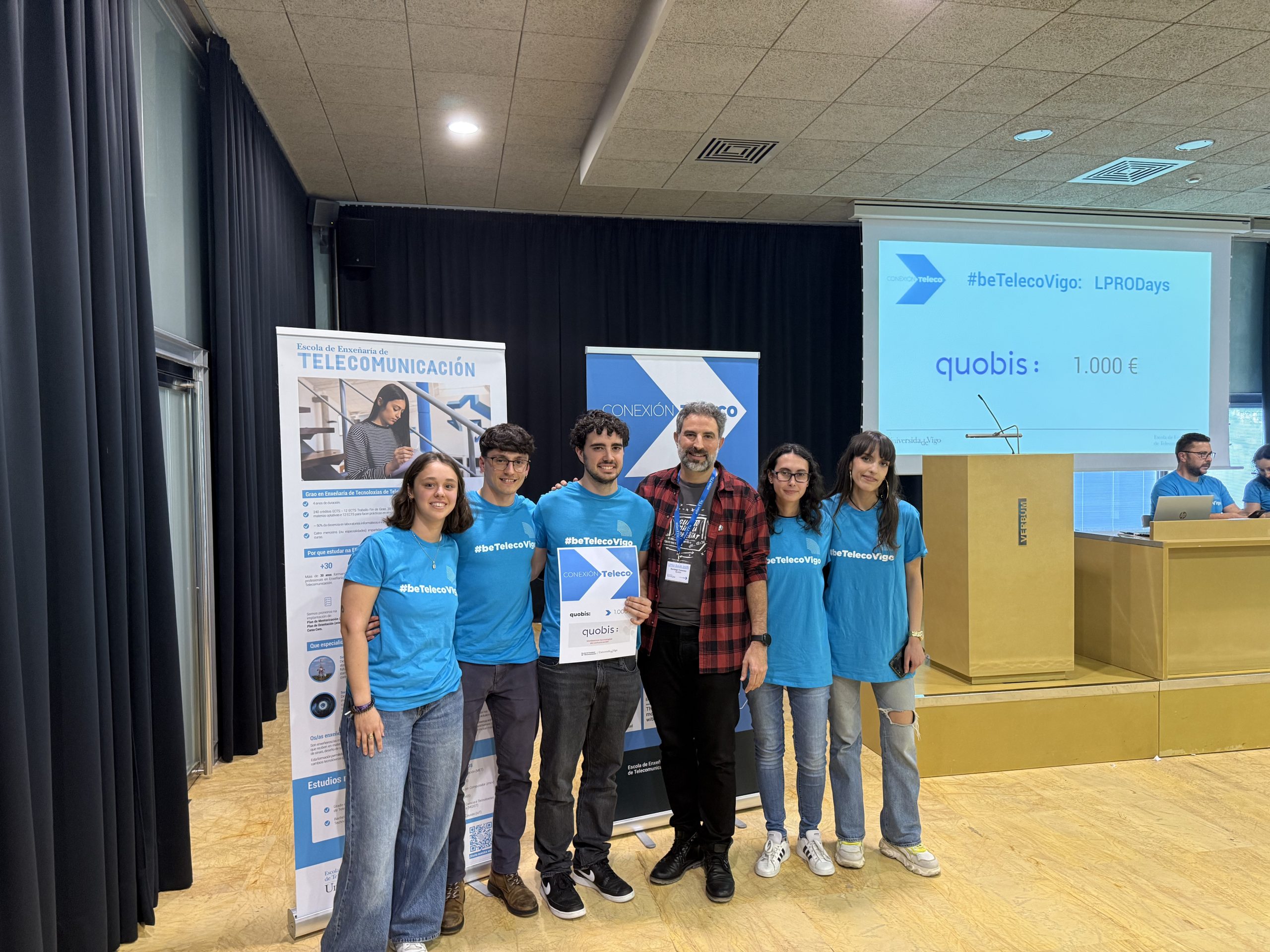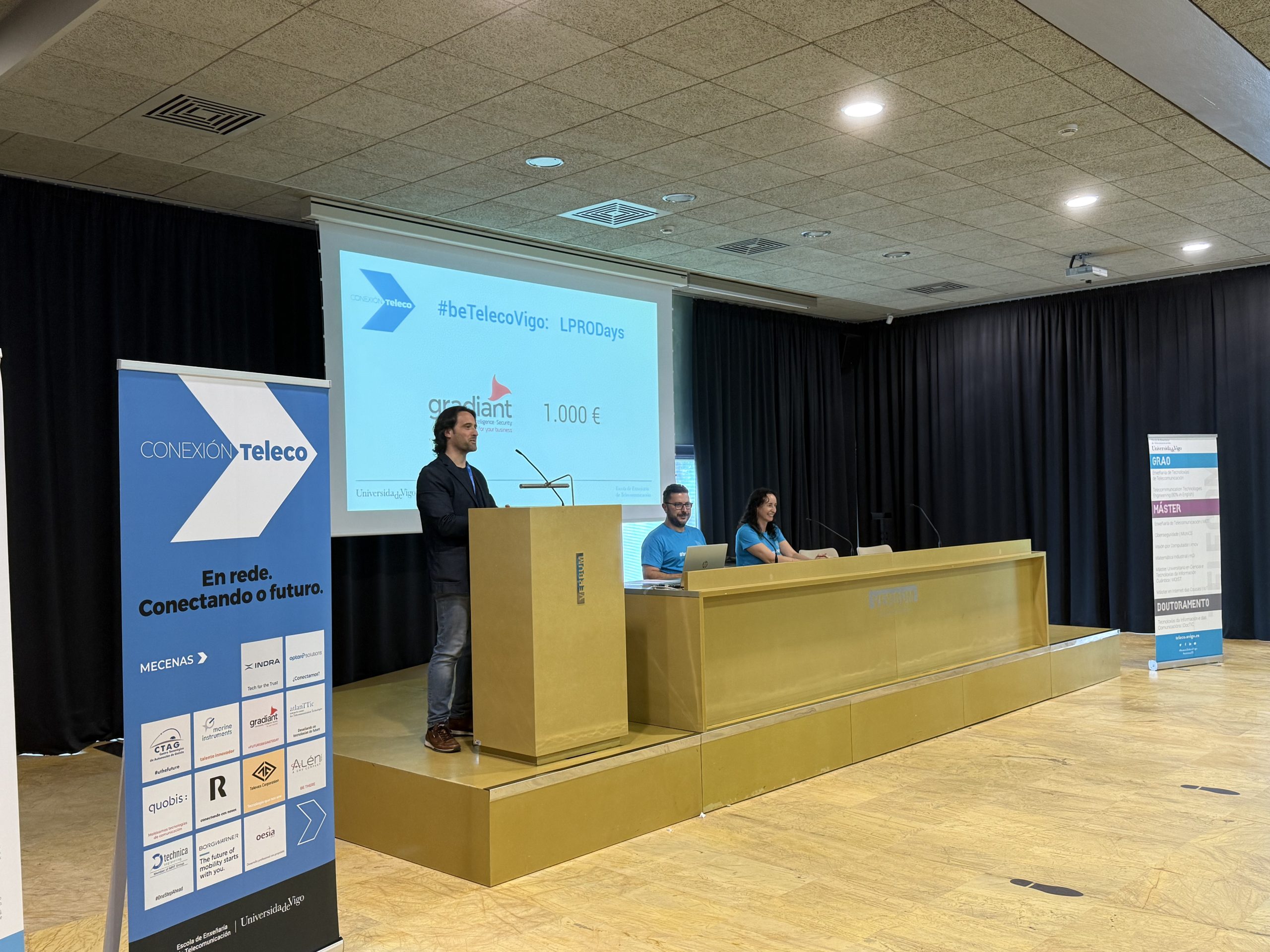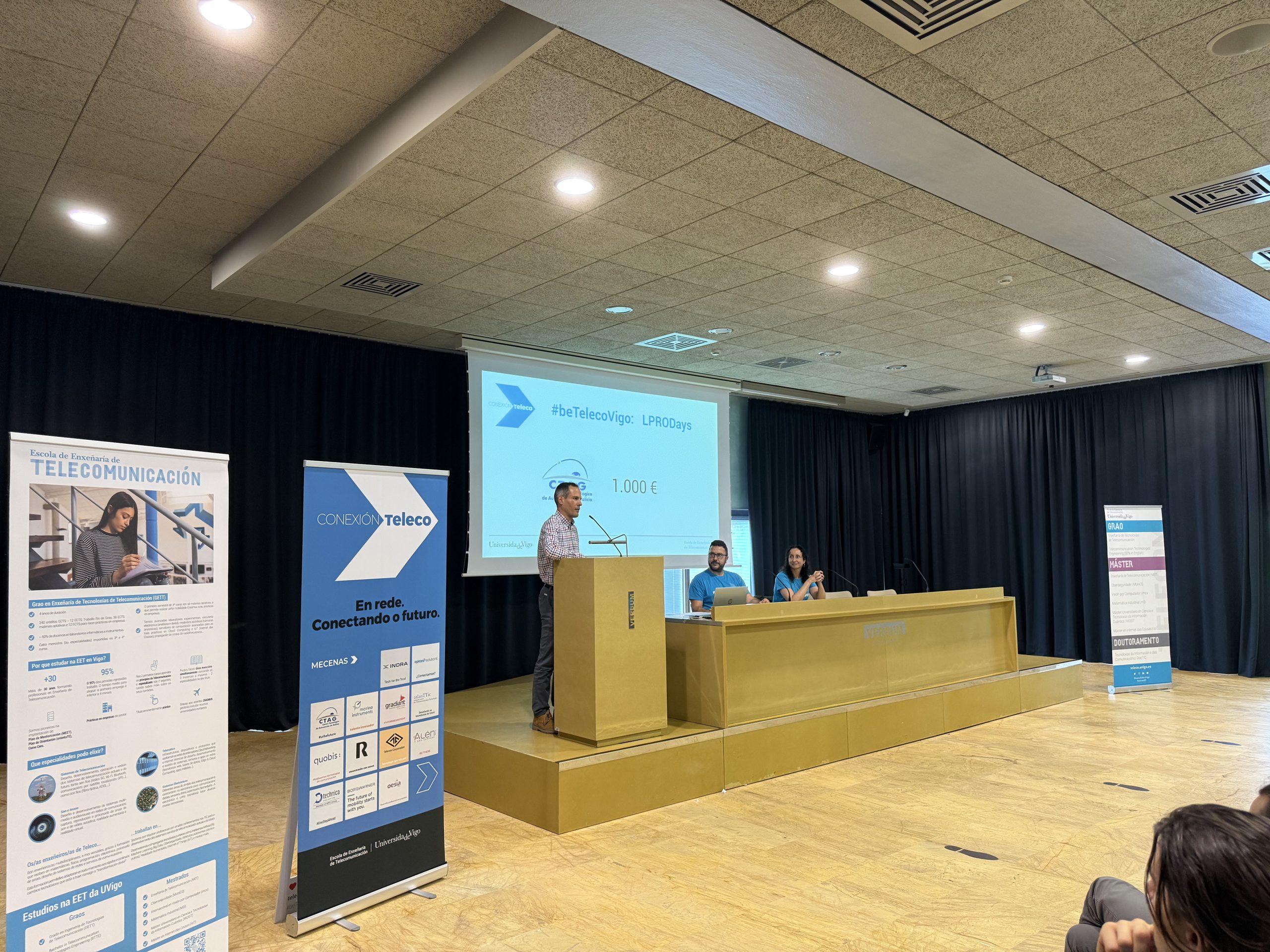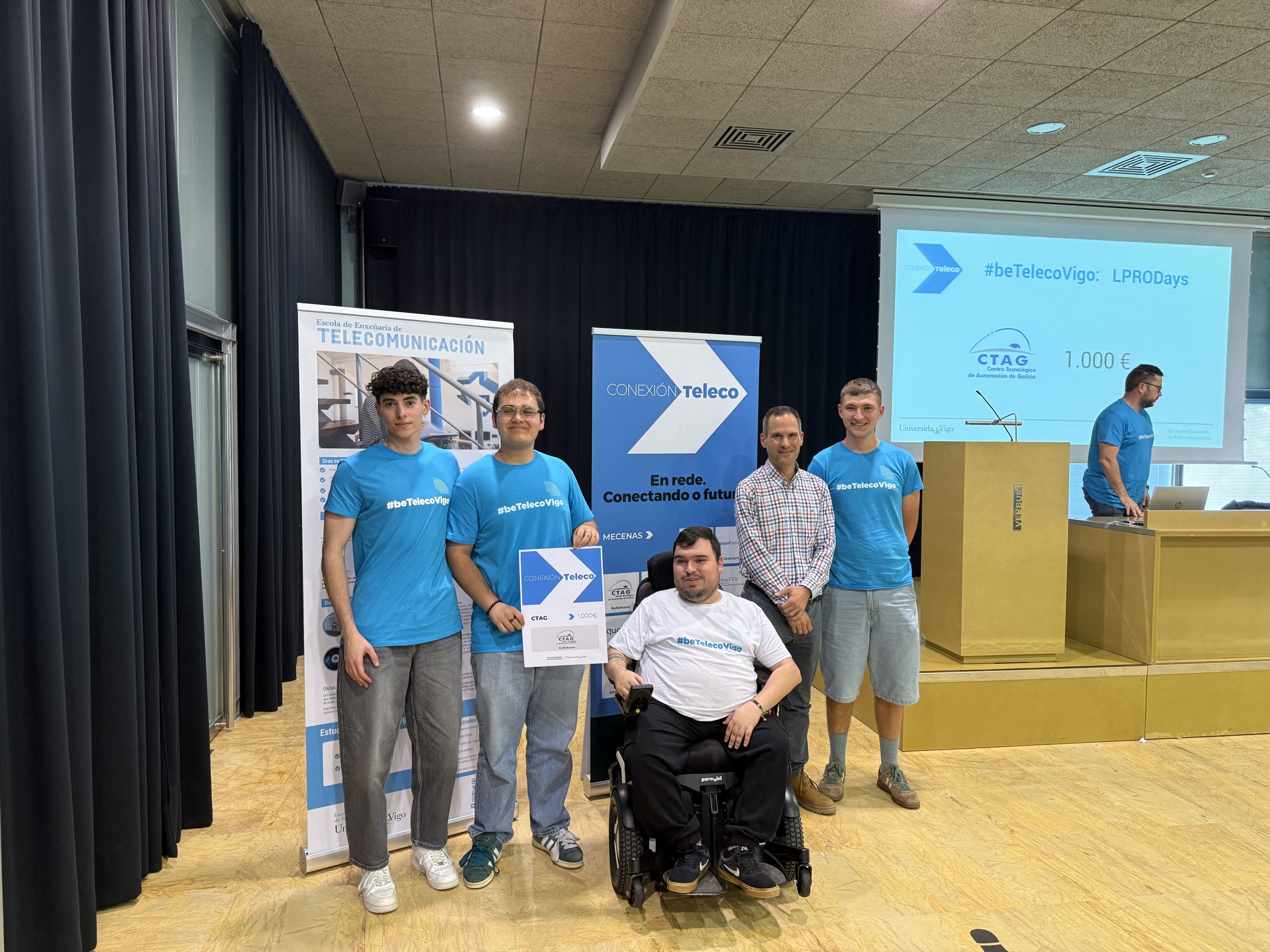Awards for the Best Projects Presented by Leading Companies in the ICT Sector, Members of Conexión Teleco
Thirteen technological projects developed by 66 students who are about to graduate, under the close supervision of 17 professors. The School of Telecommunication Engineering proudly showcases the talent of its students during a new edition of the LPRO Days, an event organised as a tech fair where last year students present a bunch of collaborative projects.
Early Drowning Detection System using thermal cameras and image processing to identify people in danger. It includes LoRa beeper hardware, a backend for alert management, and a frontend for real-time centralized monitoring.
Keywords: drowning detection, thermal imaging, LoRa communication, real-time alerting, remote monitoring
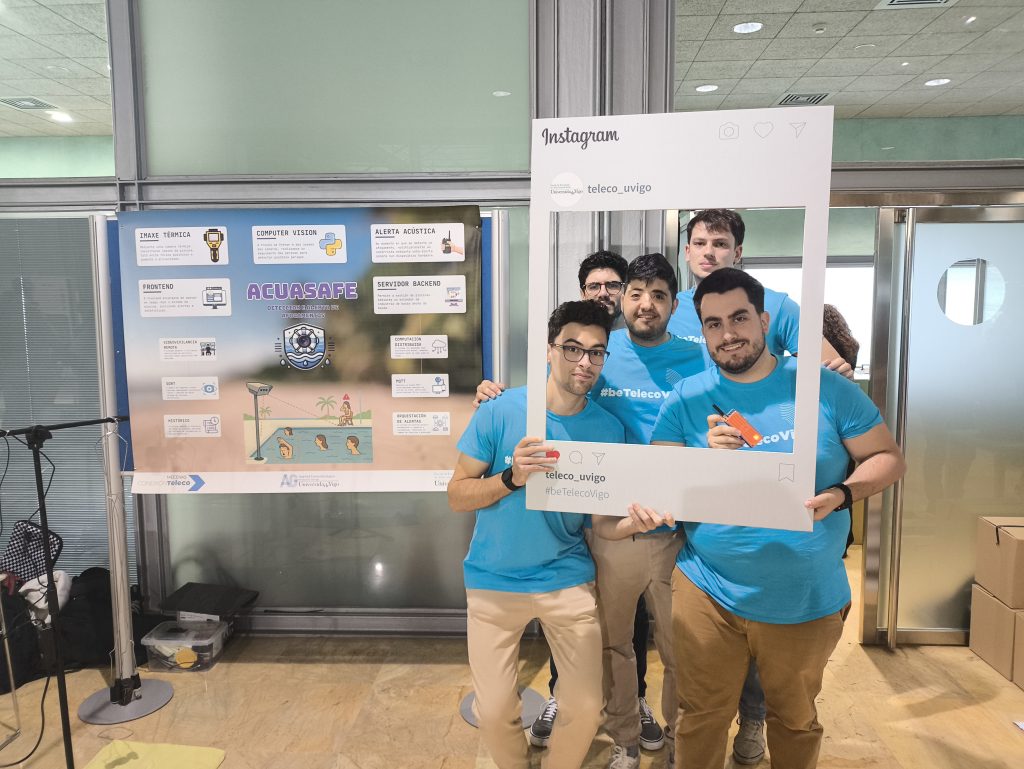
Real-time Pothole Detection System with sensors and a server that displays the location and photo on a map. Reports are sent to authorities to prompt repairs, aiming to improve road safety and prevent damage.
Keywords: automotive, sensors, camera, pothole, map
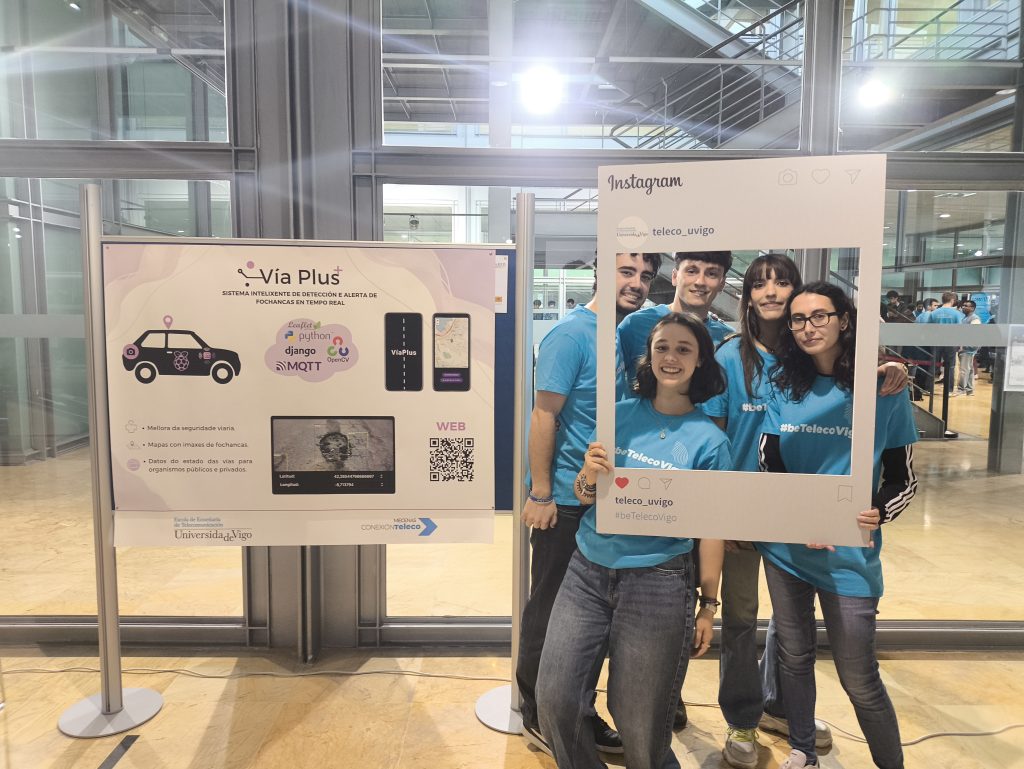
RFID-based Locator Device allowing users to track personal items like suitcases or backpacks via an app that alerts when an RFID-tagged item enters or exits the detection range.
Keywords: RFID, locator, app, alarm
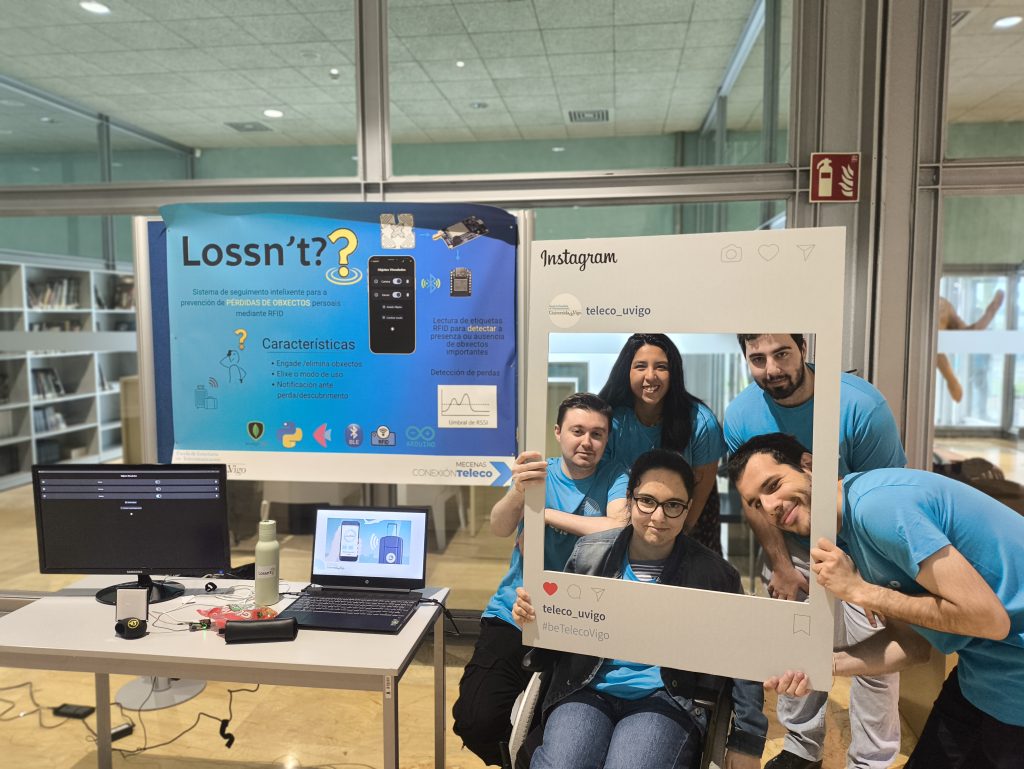
Elevator Adaptation for People with Reduced Mobility (PRM): Uses sensors, a mobile app, and AI to prioritize PRM users, enhancing elevator accessibility and user experience.
Keywords: elevator, accessibility, app, inclusion, AI
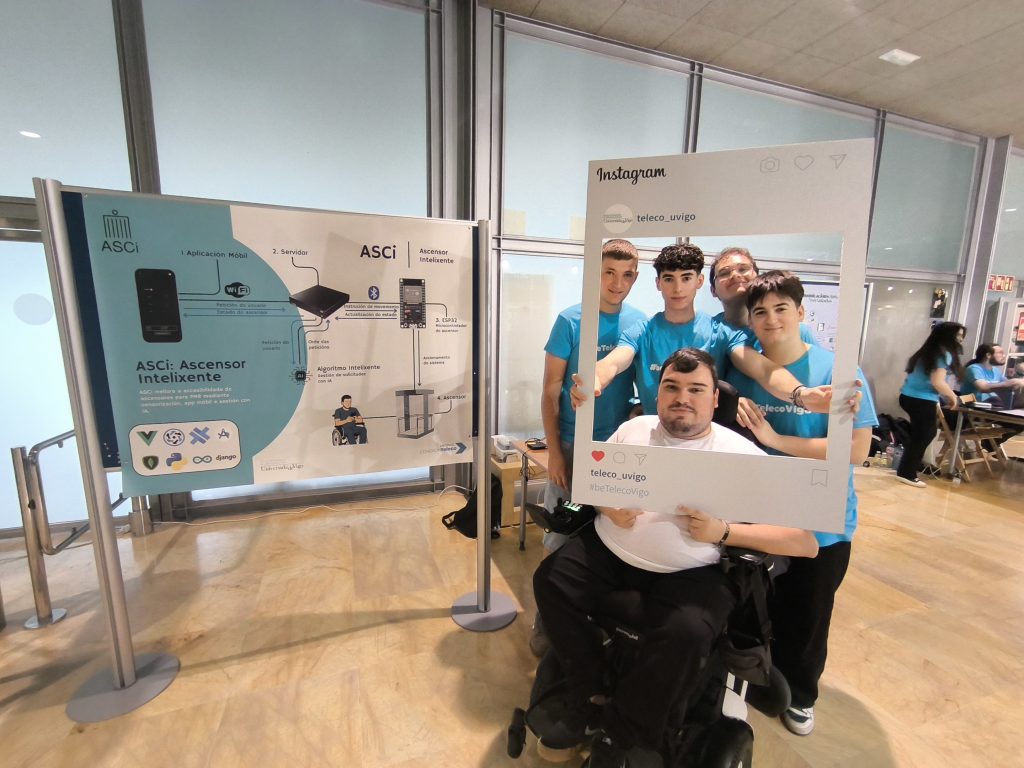
Elderly Support System offering object recognition, fall detection, gesture-based help requests, and integration with smart speakers to promote independence and reassure families.
Keywords: autonomy, fall detection, gestures, object recognition, smart speakers
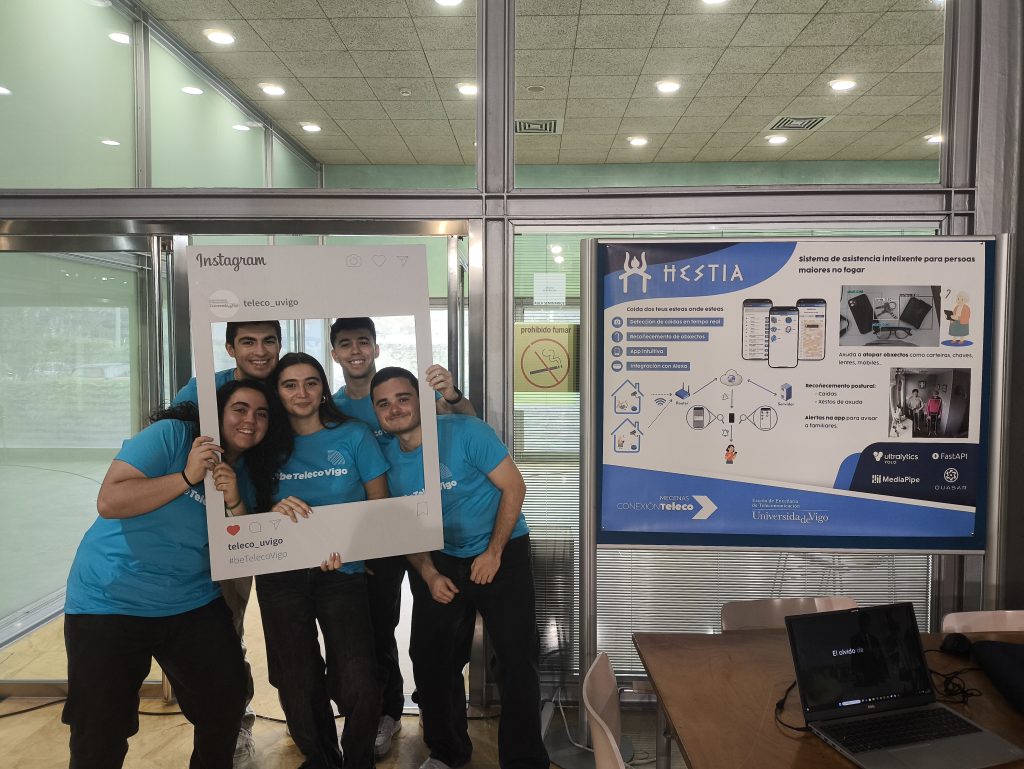
Assistive Technology for Individuals with Autism (ASD): AI-driven activity recognition system that monitors routine completion via local cameras and triggers personalized alerts.
Keywords: action recognition, neurodiversity, eHealth, Artificial Intelligence, autonomy
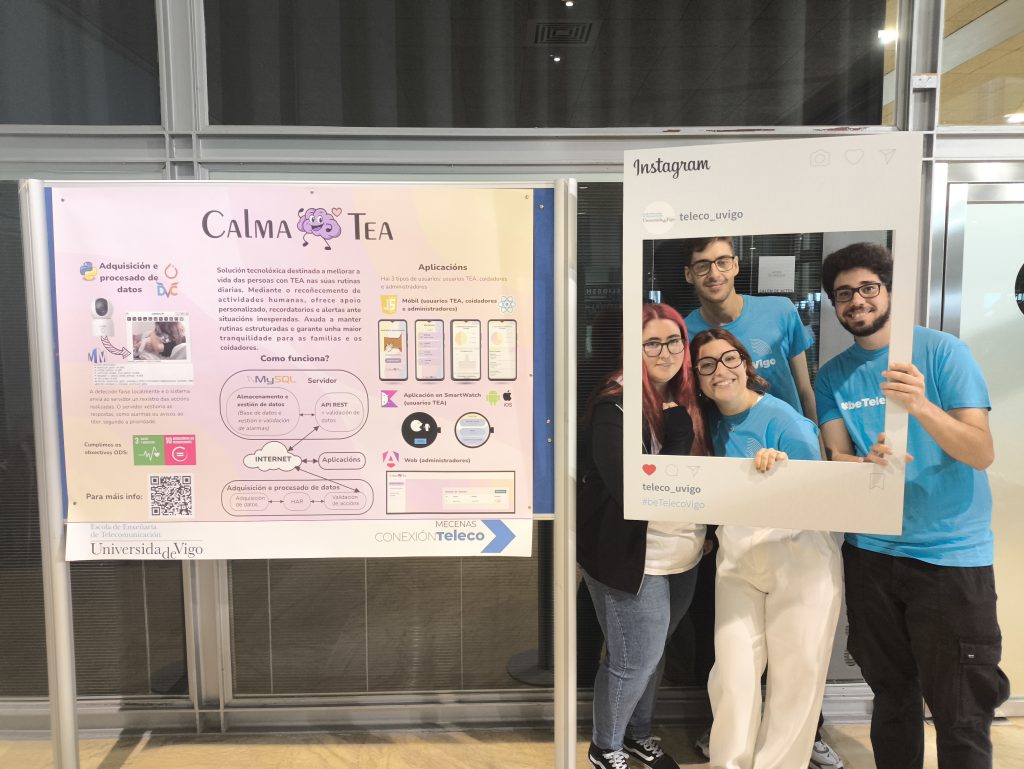
One-way Optical Communication System using infrared light to transmit dynamic information to multiple users simultaneously, ideal for public spaces like museums or bus stops, requiring no internet or device pairing.
Keywords: LiFi, dynamic information, optical communication, infrared
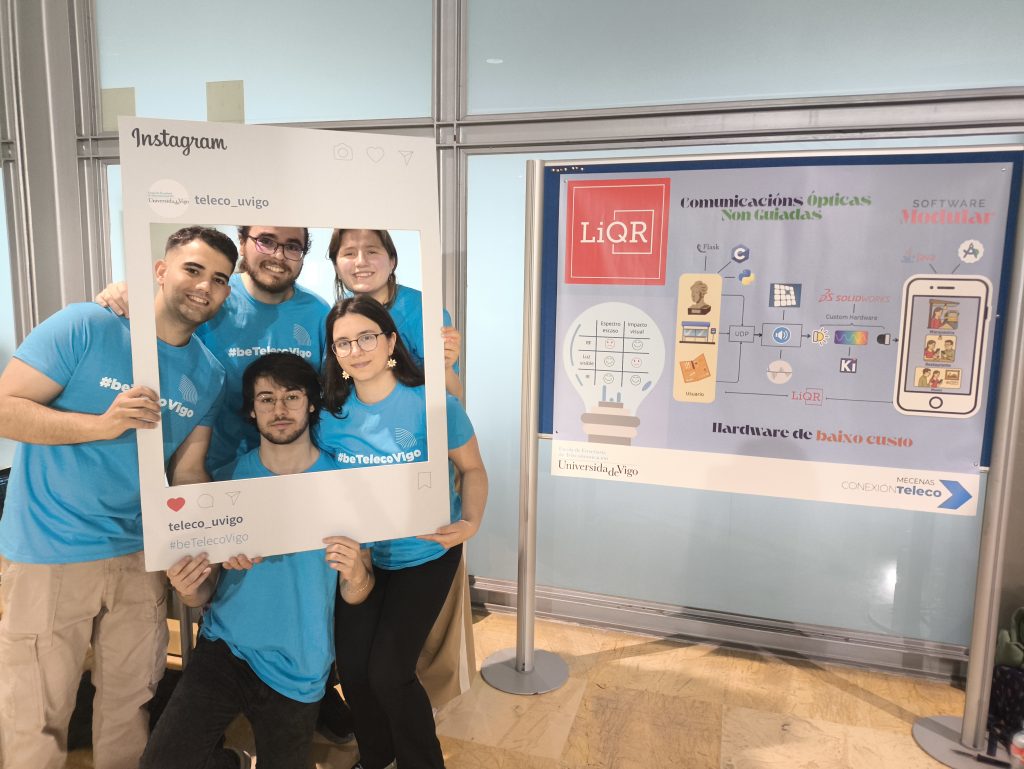
Emergency Communication System for People Trapped Under Debris: Integrated computer and mobile robot that enables audio, video, and environmental readings to aid rescue teams.
Keywords: communication, robot, emergency, portability, rescue
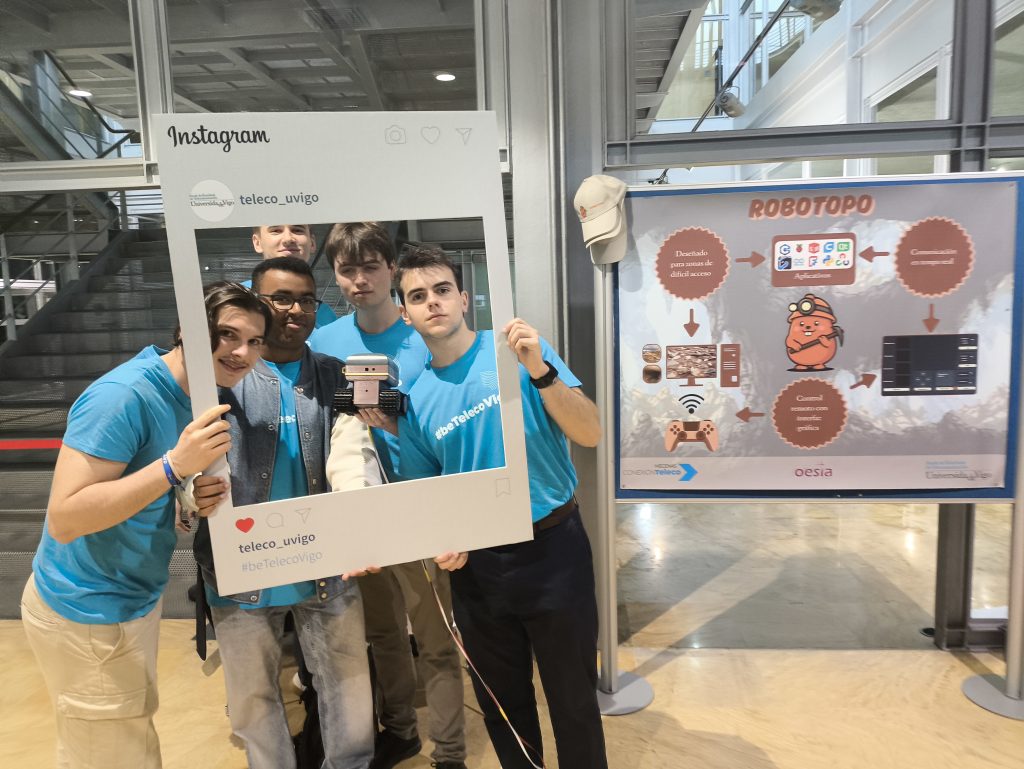
Assistive Vest for the Visually Impaired: Includes ultrasound sensors to detect obstacles, vibration motors for alerts, smart camera for crosswalk/person detection, voice-guided GPS, and bone-conduction headphones.
Keywords: visually impaired, smart vest, ultrasound sensors, voice assistance, GPS
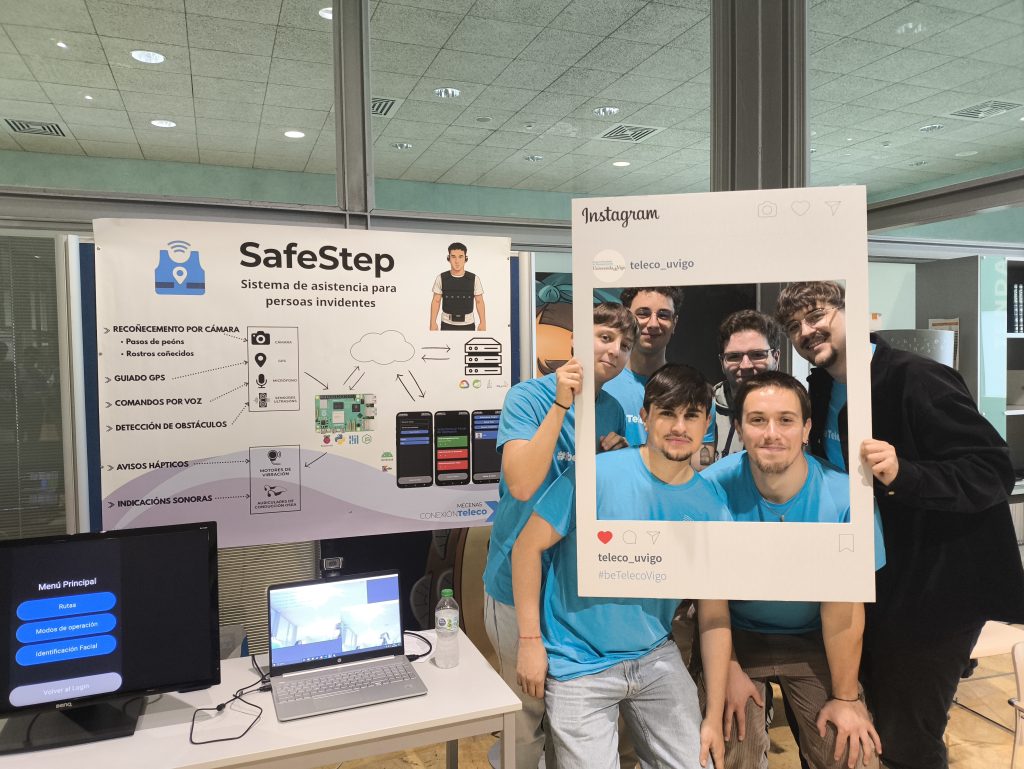
Indoor Navigation for Visually Impaired: Uses Wi-Fi fingerprinting for positioning and RFID with Dijkstra’s algorithm for shortest path calculation.
Keywords: fingerprinting, Dijkstra, RFID, visually impaired, indoor navigation
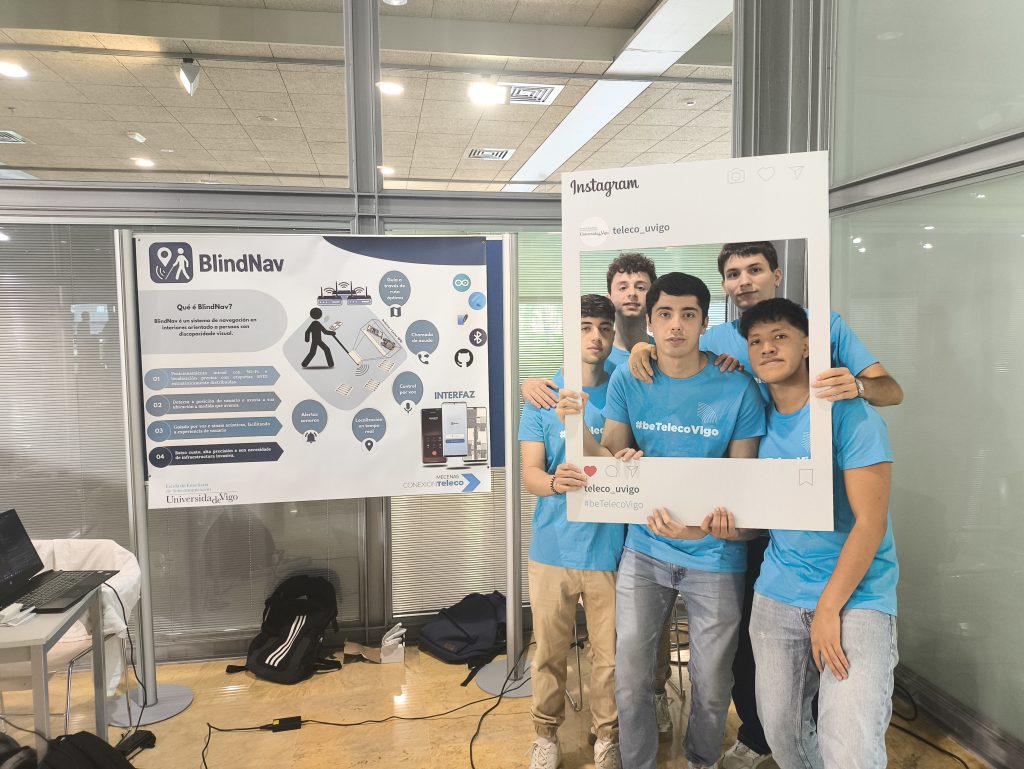
Proctoring System for Remote Exams: Combines real-time monitoring and AI-based review using a GoPro for a student’s perspective, enhancing exam security.
Keywords: proctoring, real-time monitoring, irregularity detection, online exams, academic integrity
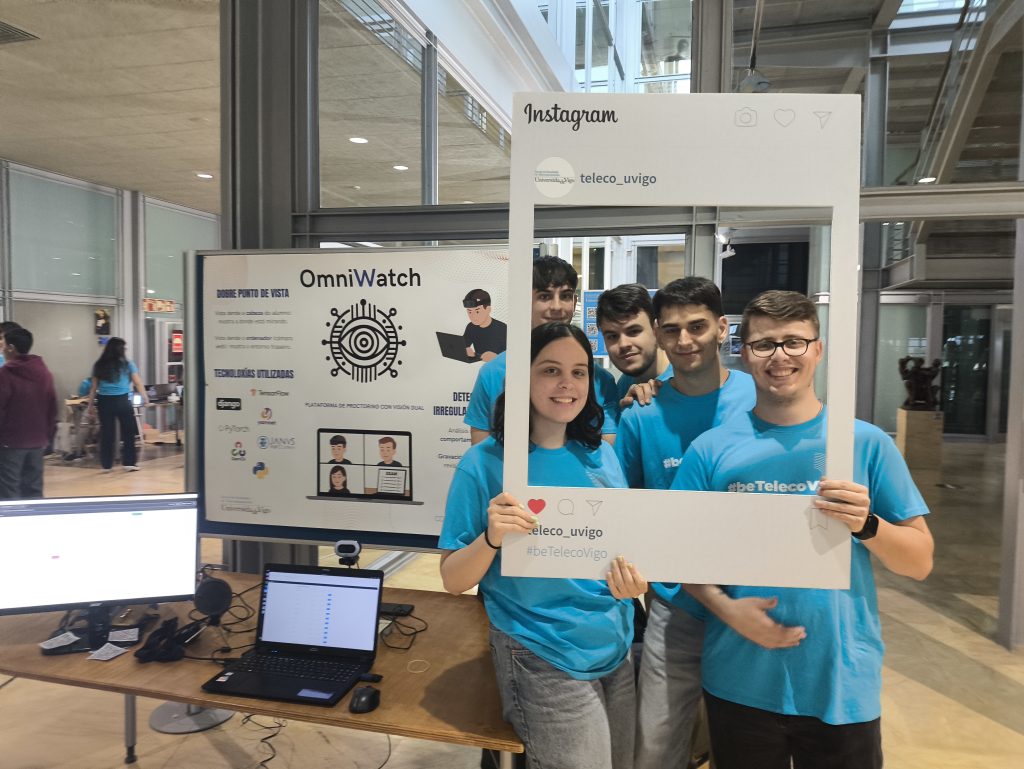
Interactive Presentation Assistant Device: Detects slide changes, captures slides, allows note-taking, downloads in various formats, and provides control tools, analytics, and feedback for presenters.
Keywords: presentation, slides, capture, control
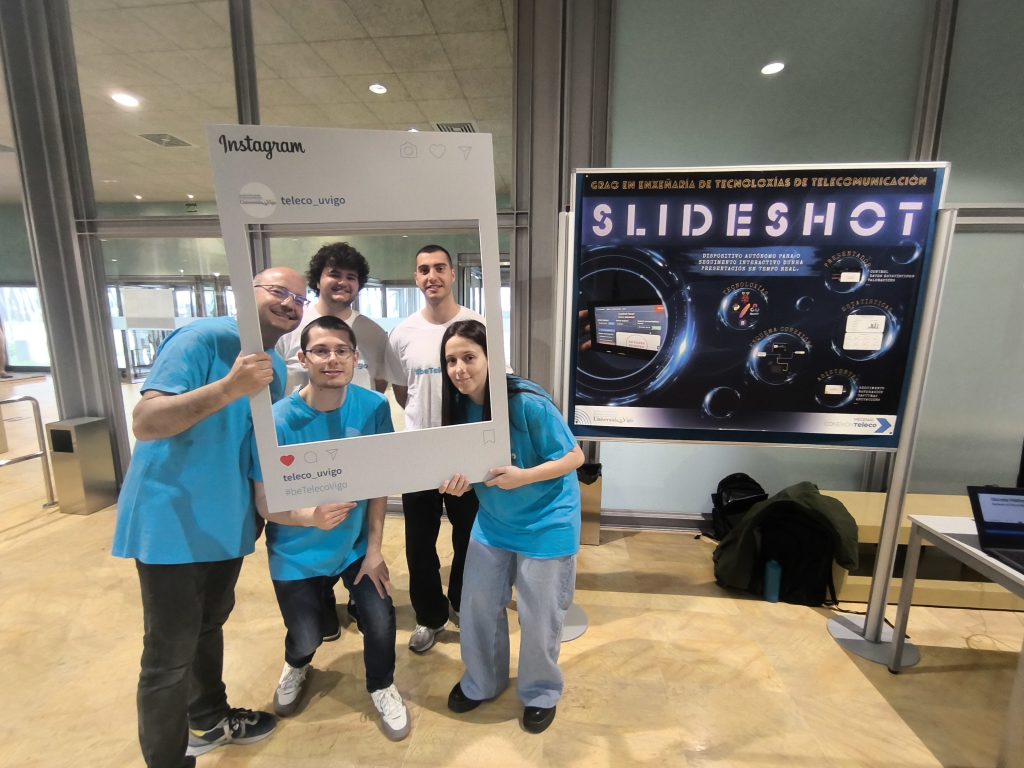
Drone Services Platform: Geolocated system connecting customers with drone operators for time-based, prepaid services. Displays active drones in real time to ensure access and oversight.
Keywords: UAVs, ride-share, geolocation, airspace, gig economy
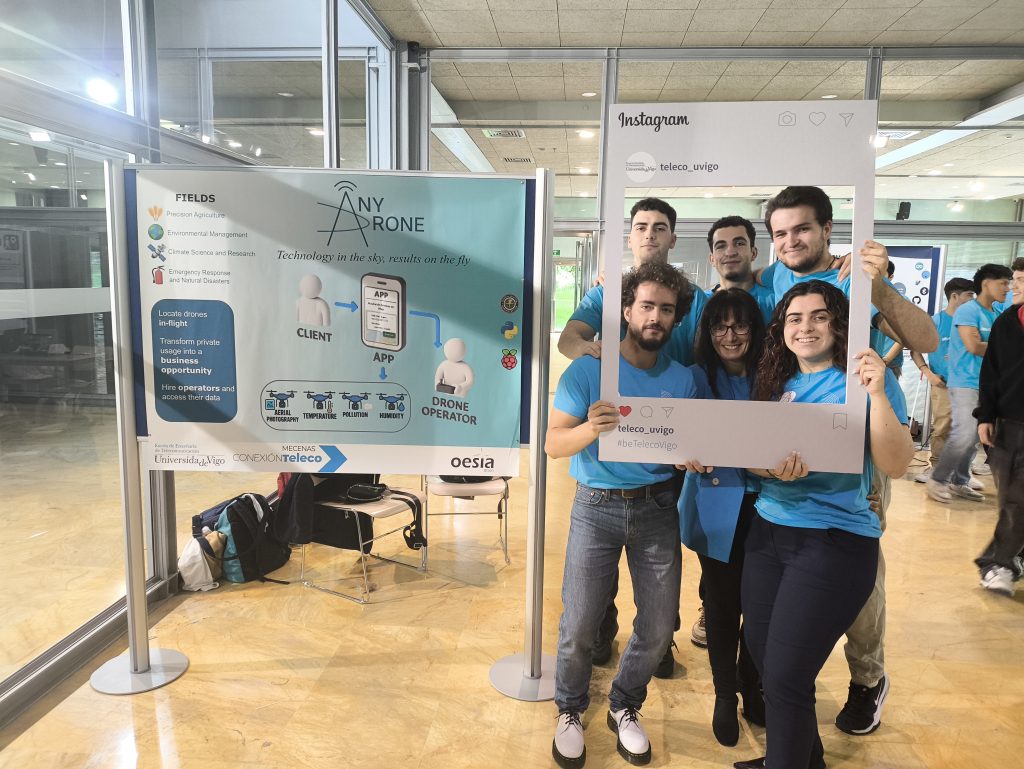
As professor Manuel Caeiro, coordinator of LPRO Days, emphasized in his invitation to the university and broader community to visit on May 8 at the school or on May 9 at Verbum, “the best way to experience the projects is to see the prototypes live.” His prediction was right: “based on past feedback, we guarantee a fun and memorable tech experience.”
The Event at EET
On Thursday, May 8, each team had a booth to present their prototype and explain its functionality.
As in every edition, a wide range of topics were addressed, but this year highlighted the increasing use of Artificial Intelligence—something that has become a trend in recent years. The common thread of all editions remains the same: applying cutting-edge technology to benefit society and demonstrating students’ readiness to enter the professional world.
Multiple Themes and One Common Thread: Their Usefulness
In a constant flow of visitors moving among the various booths, one of the projects that attracted the most attention was Vía Plus, a real-time pothole detection system for roads using sensors. The system includes a server that displays their location on a map along with a photo. “We will send reports to the responsible authorities so they are aware of the severity and can carry out repairs quickly,” explain the authors, adding that their goal is “to improve road safety and prevent any type of damage.”
Another project that sparked a lot of curiosity was Lossn’t, a device based on RFID technology that helps users locate personal belongings—suitcases, backpacks, briefcases, etc. “Through an app, users can check whether the item, which has been tagged with an RFID sticker, is entering or leaving the device’s range,” the team explains.
Some themes, due to their importance, are repeated every year. These include care and assistance for people with visual or mobility impairments, the elderly, or individuals with ASD. In this category, we find ASCi, a project focused on adapting elevators for the inclusion of people with reduced mobility through sensors and a mobile app; Hestia, designed to enhance the autonomy of elderly people and provide peace of mind to their families through object recognition, real-time fall detection, gesture-based help requests, and integration with smart speakers; and Safe Step, an assistance system for visually impaired individuals.
The pursuit of social utility is always present. Another example is Robotopo, designed to serve as a communication bridge between people trapped under rubble and rescue teams during emergencies, or Acuasafe, an early drowning detection system that uses thermal cameras and image processing to identify people in danger.
The Verbum session
On Friday, May 9, the Verbum hosted two sessions: one in the morning with visits from secondary school students, and another in the afternoon open to the general public. The event featured a visit from the mayor, Abel Caballero, and an award ceremony for the best projects, with prizes presented by several companies and institutions from the ConexiónTeleco network: Marine Instruments, Optare Solutions, Quobis, Gradiant, and CTAG.
The closing ceremony and awards presentation was opened by the director of the school, Rebeca P. Díaz, and featured the participation of the mayor, Abel Caballero; the director of atlanTTic, Martín Llamas; and the coordinator of the LPRO DAYS, Manuel Caeiro. Representatives from the Conexión Teleco companies also attended and were responsible for presenting the awards:
- Carlos Groba, from Marine Instruments, presented the award to the project OmniWatch
- Roberto Pérez, from Optare, presented the award to the project RoboTopo
- Santiago Troncoso, from quobis:, presented the award to the project ViaPlus
- Luis Pérez Freire, from Gradiant, presented the award to the project LiQR
- Damián González Figueroa, from CTAG, presented the award to the project ASCi
Source: DUVI



